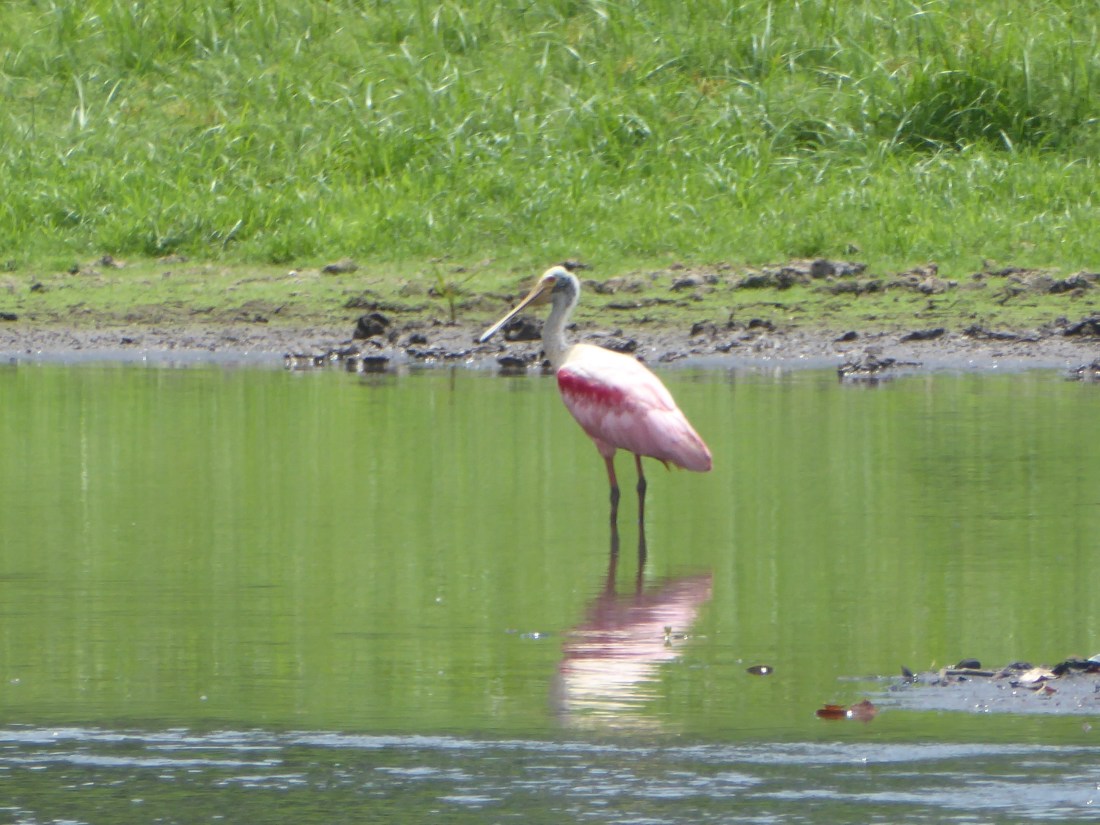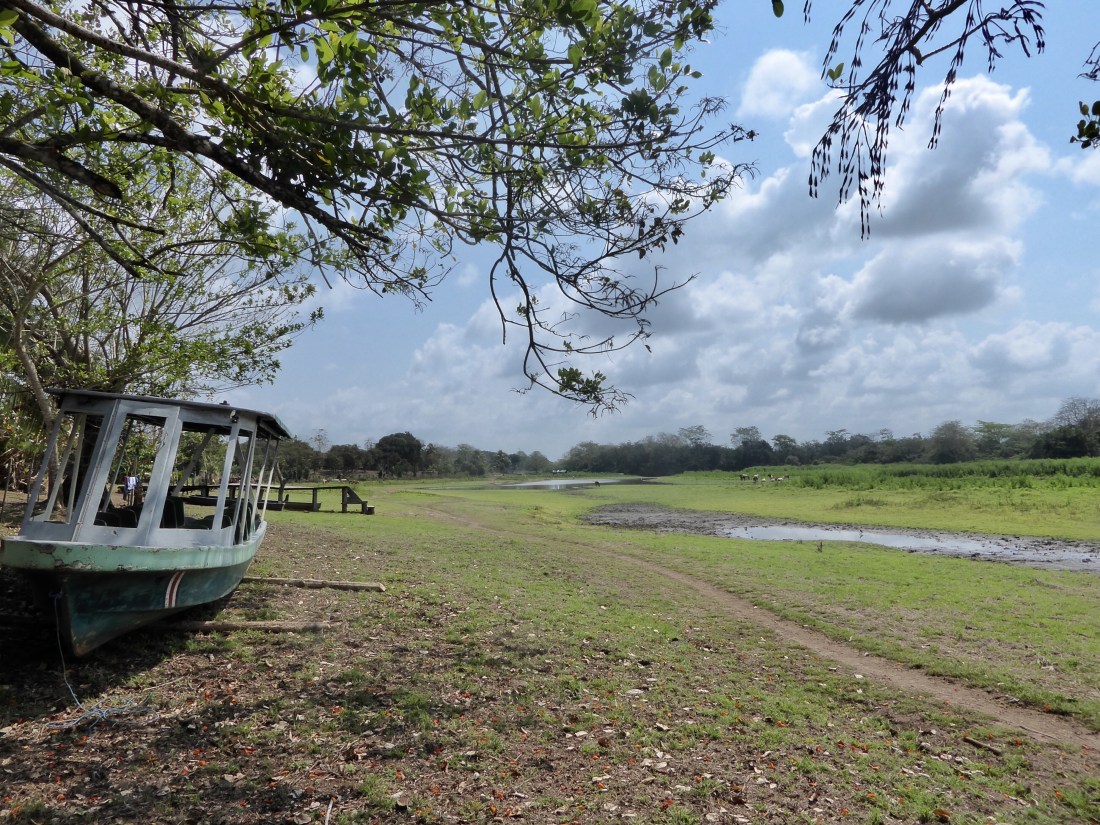Getting there:
We booked the transfer to San Cristobal de las Casas (Mexico) with Smile Travel Agency – just one of the many travel agents in San Marcos la Laguna, Guatemala.
We departed San Marcos la Laguna on Lake Atitlan on a 6am boat to Panajachel, the largest town on Lake Atitlan. I by chance sat next to an American social worker who has resided in San Pablo la Laguna for eighteen years. Prior to moving to Guatemala she visited with a medical team commencing in 1986. She assisted with the organisation of two health clinics called Odim Guatemala. The website is www:odimguatemala.org. I wished we had bumped into her when in San Pablo la Laguna – her knowledge of local health and education issues amongst local people was insightful. Put simply, diabetes, heart disease and cancers have all increased over the past twenty years due to changes in lifestyle – the main culprits being the introduction of Western ‘junk’ food, and the reduction in walking and physical activity with the motorised tuk-tuk. In the past people walked everywhere. Not now.
In Panajachel we met up with the minivan at 7am near the wharf.
There were some interesting sights along the way to La Mesilla, the Guatemalan border township. Briefly:
# At one stage the minivan reached an altitude of 3,000 metres – as you can imagine, the roads were windy and steep.
# A young girl sitting by the roadside tending a number of tethered sheep – I wondered if she ever went to school.
# A wood yard – granddad sitting amongst the wood, a small boy, perhaps aged five or six pushing a wheel barrow loaded with wood. Another child, a little older, staking wood.
# At 9am we stopped for a food/toilet break at a petrol station cum convenience store. We were horrified. All the food options were highly processed junk food. Visualise: hot dogs, hamburgers, and carbonated drinks – Coca-cola etc. Packets of chips and allied products. We saw an Indigenous family sitting outside with a few bottles of Sprite and Coca-Cola. And I again thought about the information I had discussed on the boat ride that morning. And the negative health consequences.

Above: inside the convenience store. Note the ‘enticing’ food options on the posters…

Above: locals eating breakfast outside the convenience store.
Le Mesilla was a wondrous hive of activity – at one stage our minivan drove down a very narrow street – wide enough for only the minivan. The street was actually wider, but stalls were set up on each side of the road in front of the shops. Everything imaginable was for sale – when you constantly see the same items over and over and over, everywhere, in different towns and villages, in different countries, one wonders, for instance, how many pairs of shoes have been produced somewhere in the world and are waiting to be sold. Sometimes I think if we stopped production the world would have a supply for years and years. And years. It’s surely Capitalism gone mad…
We removed our bags from the minivan and stacked them up outside the Guatemalan immigration office. Our passports were stamped – we exited Guatemala officially. Collect bags and change to a new minivan – we now had a Mexican minivan and driver. We had entered the Chiapas region of Mexico. A short drive took us to the Mexican Immigration offices. Then the one hour officialdom process commenced. If you enter Mexico for one week or less you don’t pay an entry fee. Anything over a week and the fee is M$558 (A$41) per person. We were surprised at how archaic the system was. First office: present passport and complete paperwork. Walk to second office – wait in line. Present paperwork and passport – all the information was entered manually. Finally, pay the fee and receive a receipt. Walk back to the first office and present receipt. Passport stamped – all official now!
We now started to notice Volkswagon Beetles – as it was a long travelling day I required something more than the scenery to maintain sensibility, so I commenced counting them. Simply because I’ve always thought they have a strong ‘cute’ factor. I will return to this subject later.
A flat tyre along the way caused a delay of half an hour – locals lay branches at intervals across a laneway to indicate to other drivers there is a reason to slow down or divert to the other lane. Just as our driver finished the wheel changing procedure, a light drizzle commenced.
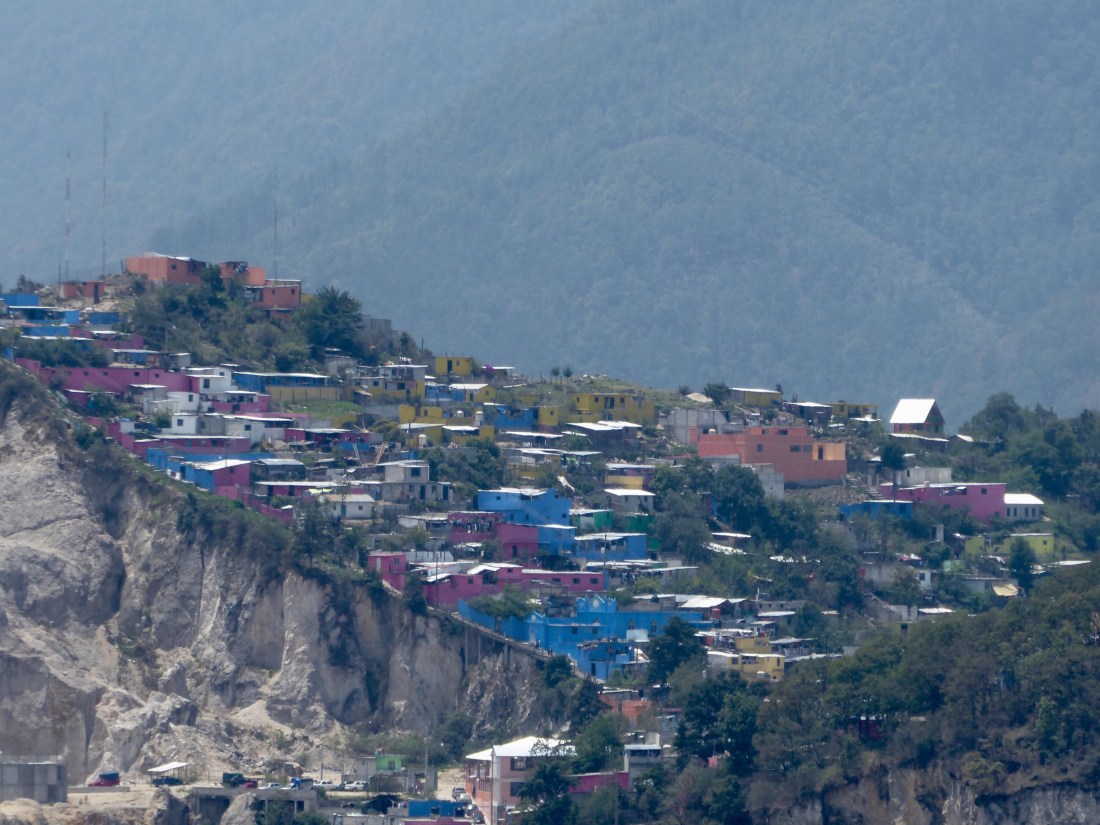
Above: colourful housing on the outskirts of San Cristobal de Las Casas.
We arrived in San Cristobal de las Casas (San Cristobal) at the Plaza 31 de Marzo – central plaza – also known as the Zocalo – at 7pm, having lost an hour due to time differences. By now I had counted sixty-one Volkswagon Beetles. That’s enough counting, I said to myself. Our hostel had provided explicit communication on how to reach them – even though it was 7pm we decided to walk rather than catch a taxi – it had been a long day sitting in minivans and we needed to stretch our legs. We had been advised to walk along the famous ‘Real de Guadalupe’ – this turned out to be a very pleasant street devoted entirely to pedestrians for four or five blocks, then it became a one way street.

Above: a classic Volkswagon Beetle.
More Volkswagon Beetles! I stopped counting when I reached sixty-nine and our hostel at 7.30pm – they were surprised we were so early, saying sometimes people arrive anywhere between 10.30 and 11.30pm when travelling from Guatemala. I suppose such delays can involve many factors such as your time of departure and how busy and time consuming it is at the border. Especially as the entire system is manual…
One final word about Volkswagon Beetles: Mexico commenced manufacturing them in 1954, and Google told me the last one will be produced in 2019. I have seen many old cars in repair yards being given a complete overhaul with new paintwork etc. Apart from the Beetles, even the modern versions, there has been a high percentage of varying Volkswagon models on the road – a loyalty to Volkswagon I guess.
The hostel is located opposite the stairs leading up to the famous Guadalupe Church constructed in 1834.
There are two small mountains in San Cristobal with churches crowning their peaks, and they are almost directly opposite each other. Guadalupe Mountain with the Guadalupe Church in the east, and San Cristobal Mountain with the San Cristobal Church in the west.
Standing at the top of the stairs in front of the Guadalupe Church you have an almost direct view down the Real de Guadalupe streetscape into the city and across to the San Cristobal Church. Seventy-nine steps lead up to the Guadalupe Church – I was told there is a pilgrimage on December 12th each year to honour the Virgin of Guadalupe. Pilgrims crawl up the steps to the church. Some have been killed in the process – I cannot recall where I learned this piece of information.

Above: steps leading to the Guadalupe Church.
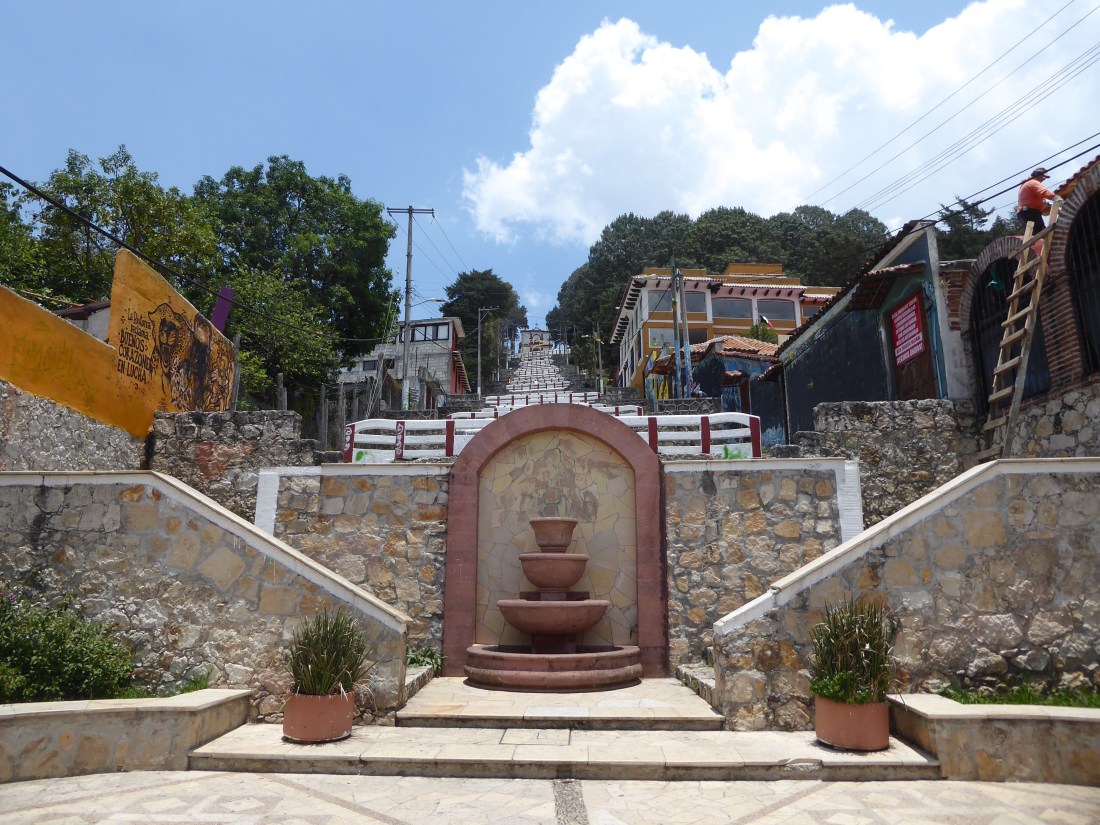
Above: steps leading up to the San Cristobal Church – you can only just see the church at the very top of the steps. (On the walking tour, mentioned below, this church is marked as ‘Cerrito de San Cristobal’ on the map).
After a few days we decided San Cristobal was the nicest city we have visited in Central America. (At the belated time of writing – 12 June – this is still the case).
Why was San Cristobal so delightful?
First of all, the elevation is 1,940 to 2,200 metres making for pleasant days and cool nights. The population is 185,000 (Lonely Planet EBook 2018), so not an overwhelmingly large city. It was easy to walk everywhere; the city streets are a grid patten, and as is typical in these Central American countries, there are many one way streets. The traffic is calm and slow in the narrow cobbled streets – drivers are courteous and give way to pedestrians or even stop to wave you across the road. This is certainly a very delightful different experience to other parts of Central America. The streetscapes are colourful with houses painted in numerous differing colours, and street art is interesting. I have included some photographs of streetscapes and street art at the end of this blog. The artesian weaving and associated items are varied and beautiful. The area surrounding San Cristobal has the largest Mayan population in Mexico. Indigenous peoples from the Tzotzil and Tzeltal groups live in villages outside San Cristobal. The traditional clothing of each group differs – one group wears a heavy shaggy black woollen woven skirt. The other group a wrap around skirt. The women come to the city each day to sell items such as genuine artesian woven rugs and clothing, and other varied products including plastic jewellery.
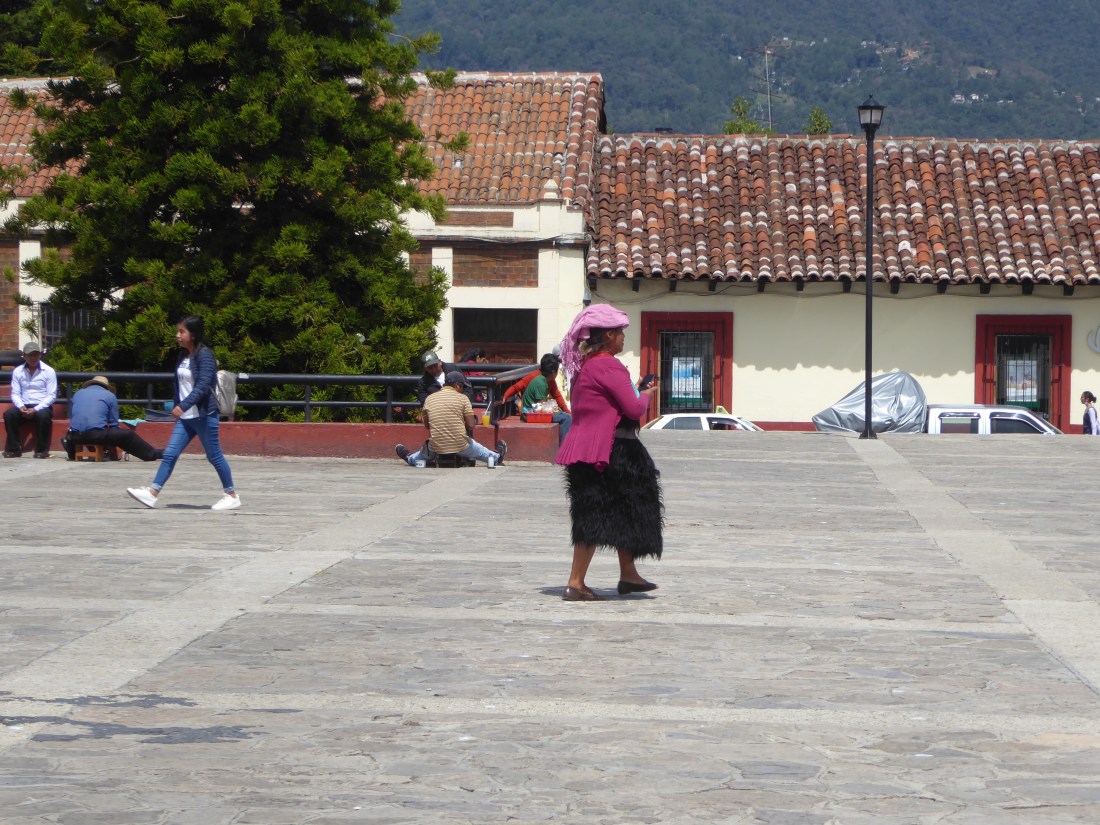
Above: Indigenous woman in traditional clothing.
We decided to do a free walking tour of the city – we were so glad we did. These tours depart at 10am every day from the square in front of the Cathedral de San Cristobal located opposite Plaza 31 de Marzo. When we visited in May 2019 the church was undergoing repairs and not accessible. Two guides conducted the tour – a Spanish speaking local, and an English speaking Expat. The English speaking guide was a French National who had lived in Australia for a number of years, and had resided in San Cristobal for seven months. Her San Cristobal sojourn involved teaching languages and improving her Spanish. She was a wealth of really interesting local knowledge including customs, politics, history, and local eateries etc, just to mention a few topics.
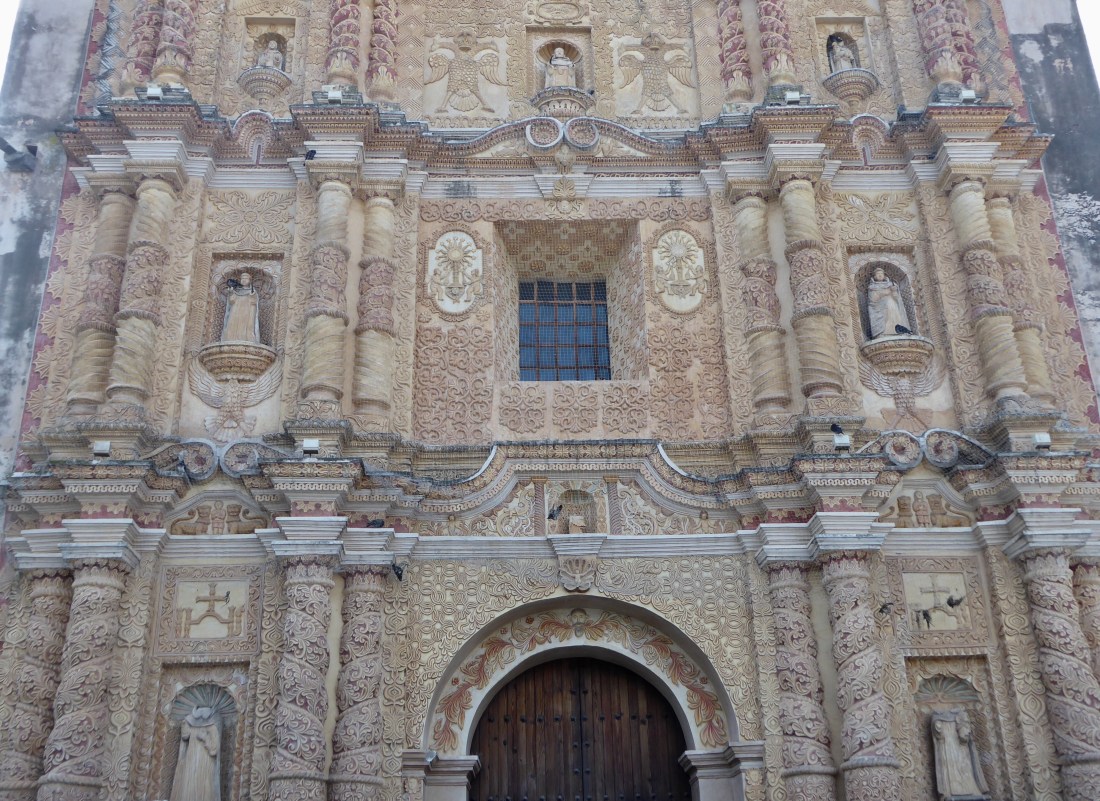
Above: Detail of the ornate facade of Santo Domingo de Guzman church.
Our first stop was the above church – the baroque complex exterior with filigree stucco detail is simply beautiful. Unfortunately artisan stalls crowded the front of the church. The interior was shrouded in plastic sheeting due to the ongoing repairs, however we had glimpses of the heavily gilded pulpit.
We wandered through all the artisan stalls – I momentarily toyed with the idea of refurnishing our home with all the wonderful textiles on offer – so bright and colourful. Hardly practical to mail huge boxes of textiles to Australia…
We then wandered up a side street to the Cerrillo Church – our attention was drawn to a sign on a wall of a man urinating. We were told that the street used to stink of urine, and since the signs have been in place, the street is much improved.

Above: rather explicit street sign with a powerful message – the street no longer smells of urine.
We stood outside the Cerrillo Church and were told about Indigenous people and their use of pox – (pronounced posh). It is an alcohol distilled from corn, sugar cane and wheat, and used ceremoniously by Mayan peoples. Generally about 45% alcohol content, however it is possible to purchase pox with lower alcohol contents. Many people, I believe men more so than women, but have no proof, sip it while praying in church. Our guide said she had seen many men passed out lying on the ground in front of churches. She underscored the importance of Indigenous people using pox religiously and also the belief of its medical powers. I thought this was a step too far and perhaps an education program was required regarding the dangers of alcohol, but it becomes a complex and sensitive issue when beliefs and medical science do not correlate and traditional beliefs must be respected.
That said, one can imagine a few blokes drinking too much pox in church then wandering down the street to urinate. There is a remarkable shortage of public toilets throughout San Cristobal. Occasionally you see a shop with a sign saying ‘Se Vende Bano’ which translates roughly as ‘we sell toilets’, so obviously you can pay to use their toilet. The city council, or whoever is responsible for such public amenities should consider installing more public toilets throughout the entire city. The sign pictured above has had a positive result, but it is not a positive long term solution for residents and visitors.
Our guide told us about the city being unsafe for women. When she arrived in San Cristobal she was told if going out, never walk home alone in the dark. If going out with a group of friends, always walk together in a crowd to your destination. If catching a taxi, first take a photo of the number plate and send it to a friend before departing in said taxi. Then have the emergency number ready to press ‘send’…She went on to say that in seven months of living in the city she had never heard of a tourist being harassed or hurt. However, violence within Indigenous communities against women was frequent and challenging. She showed us her favourite mural in the city, which had a message along the lines of ‘let the only blood women shed be menstrual blood’.
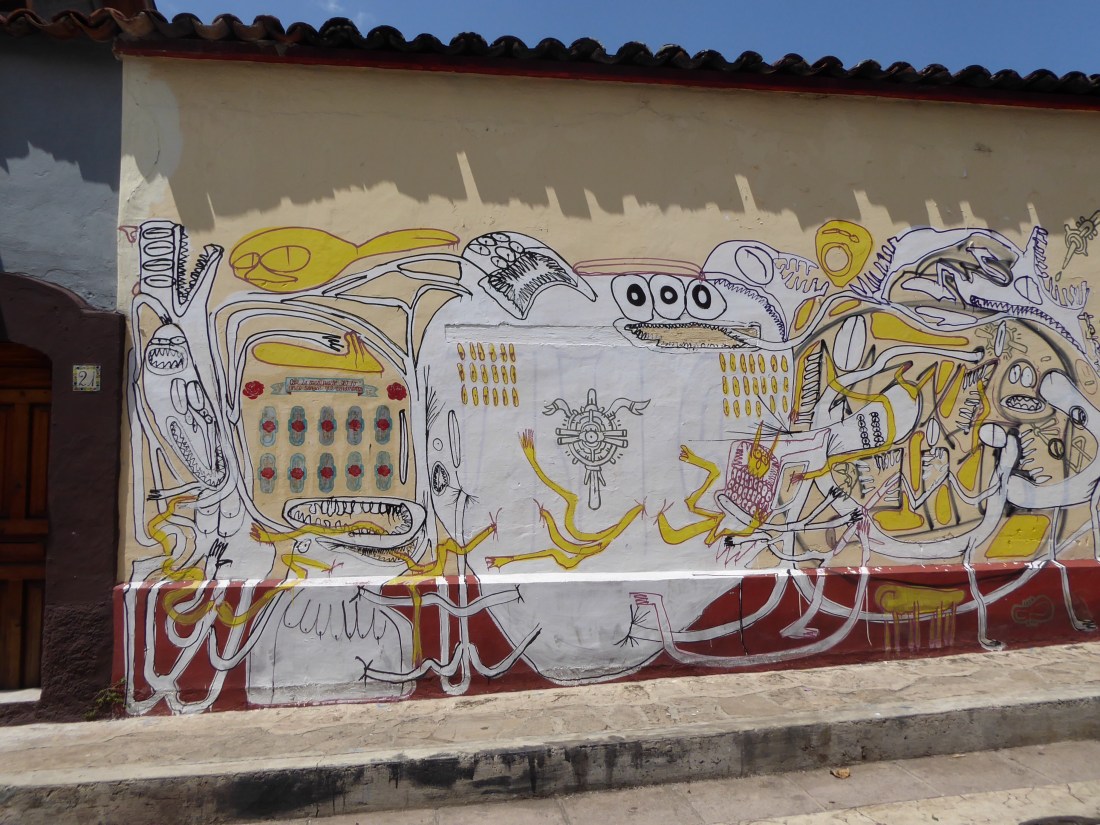
Above: street mural rejecting violence against women.

Above: a detail of the above mural.
There were still more interesting destinations: a chocolate tasting – we tasted numerous flavours, some being vanilla, cinnamon, orange; I’d have to say this was the best chocolate I have tasted for a fair while. A small art gallery with a rooftop cafe open in the late afternoon – the views over the city were commanding.

Above: views over the city from the small art gallery.
A visit to the Zapanista shop was extremely interesting. Briefly, the Zapatistas, a previously unknown leftist guerrilla army emerged on 1st January 1994 and occupied San Cristobal and other towns in Chiapas. The date is important, as that is the day the North American Free Trade Agreement (NAFTA) was implemented. One of the issues with the NAFTA was that it signed over rights to Indigenous lands to corporations. Without any negotiations with Indigenous peoples. The Mexican Army overthrew the guerrillas – bombs were dropped on the city and fierce gun fighting ensued.
The Spanish local guide spoke at length about the Zapanista history, and said he was only eight years old at the time. Even speaking to us on that day, all those years later, he said this event still gave him goose-bumps.
Our last stop was a ‘Poxeria’ – a venue manufacturing pox and distilling it in various flavours and alcohol percentages. We were fortunate to have a free tasting, and the science of how one consumes 45% alcohol was explained carefully. This is what I remember, but I will not stand by my memory. It had something to do with inhaling, holding your breath, slowly consuming the alcohol making sure it touches the top of your tongue and not the sides of the tongue. This is because the taste buds on the side of the tongue detect sourer flavours; taste buds on the top of the tongue detect sweeter flavours. We all carefully followed instructions and took our first sip – just then there was an all mighty clap of thunder and the skies opened with torrential rain. We all laughed….However I wasn’t sure if that process would really ensure a safe level of consuming 45% alcohol….
Over the following few days of our stay we visited a number of interesting places worth mentioning: Na Bolom, and the Centro de Textiles de Mundo Maya (Textile Gallery). La Bolum is a museum set in the house originally owned by a Swiss anthropologist/photographer Trudi Blom (1901-1993) and her Danish archaeologist husband Frans Blom (1893-1963). Frans explored and researched Mayan sites all over the Chiapas region where San Cristobal is located.
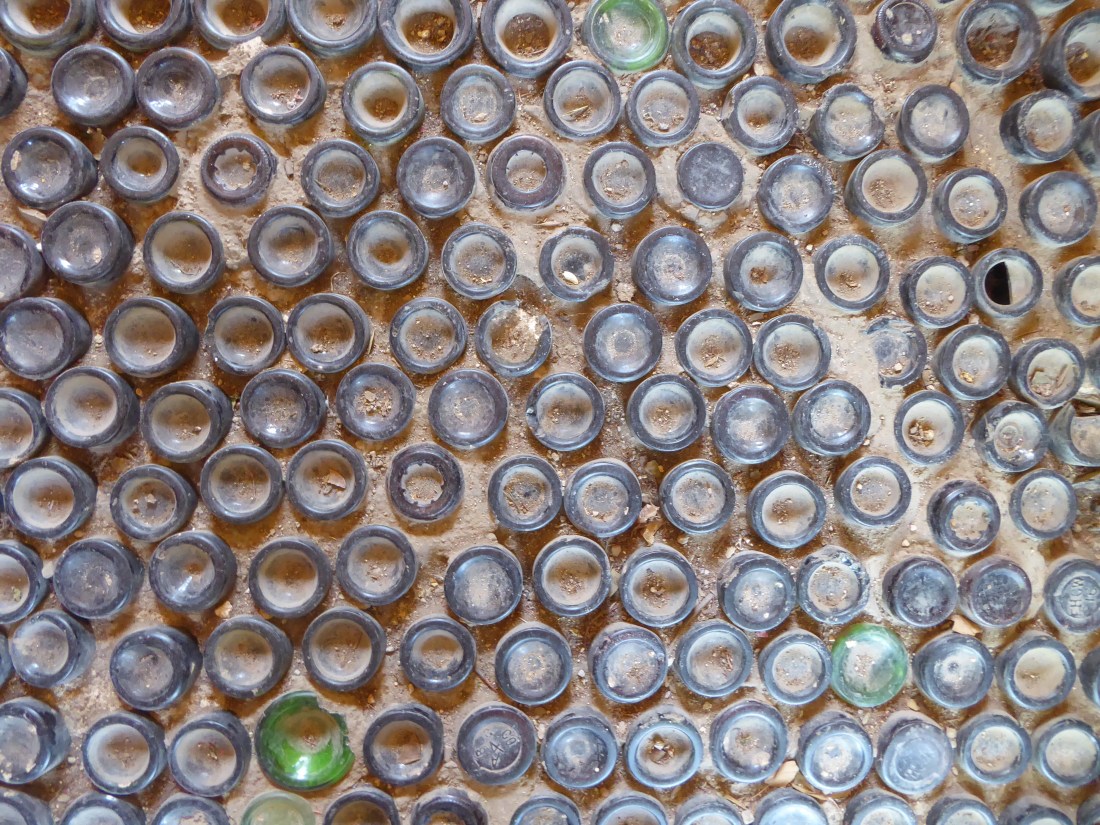
Above: glass bottles in the entrance way to Na Bolom.
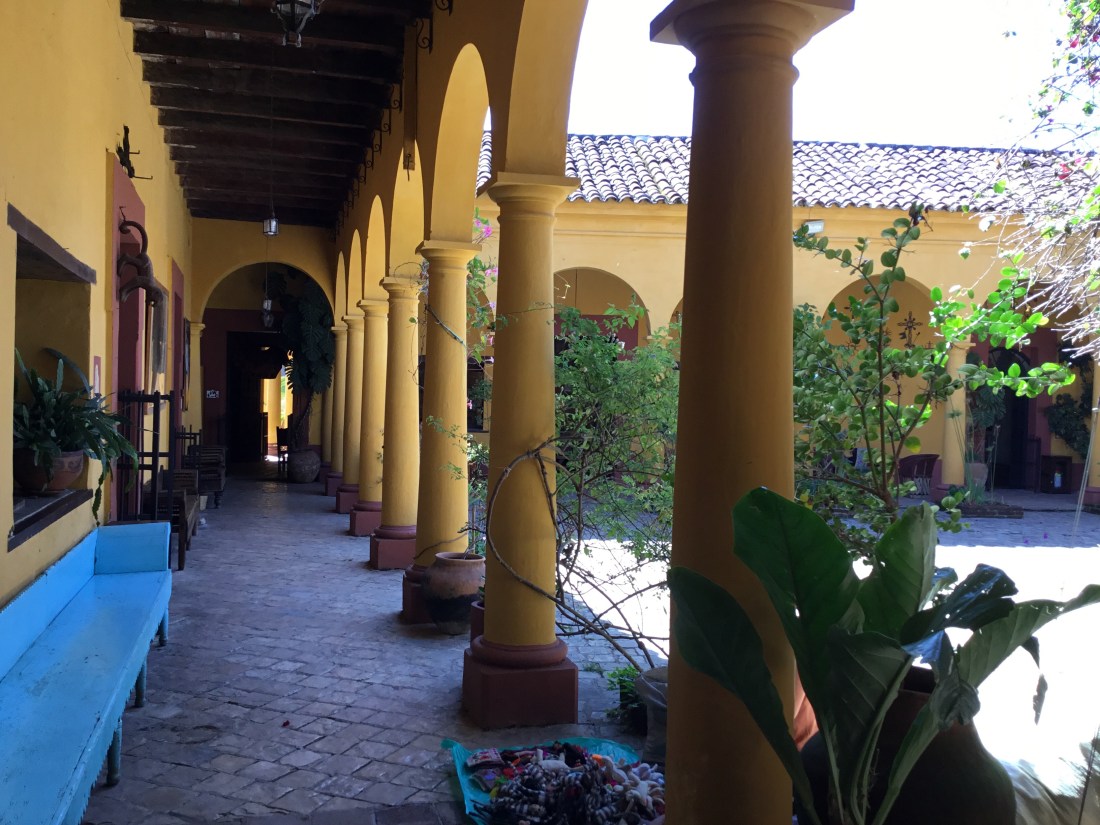
Above: Na Bolom interior courtyard.
The Centro de Textiles de Mundo Mayo, located behind the Santo Dominigo Church was exceptional, especially if you are interested in art and textiles. I wish I’d visited on our first day, as you certainly learn the difference between quality artisanal products and some of the other ‘tourist’ products offered in town. In additional to all the hanging garments in the photographs below, there were numerous slide out drawers, each containing a single garment. When the drawer was opened a light set in the ceiling turned on, and closed when the drawer was shut. A remarkable amount of thought and creativity has gone into the design of the museum.

Above: just one cabinet displaying remarkable weaving.

Above: weaving detail.
I think I’ve said enough and hope this entices you to consider visiting San Cristobal. Of course, there is so much more to do than what we had time for, including trips to archaeological sites. Here are some street scenes:
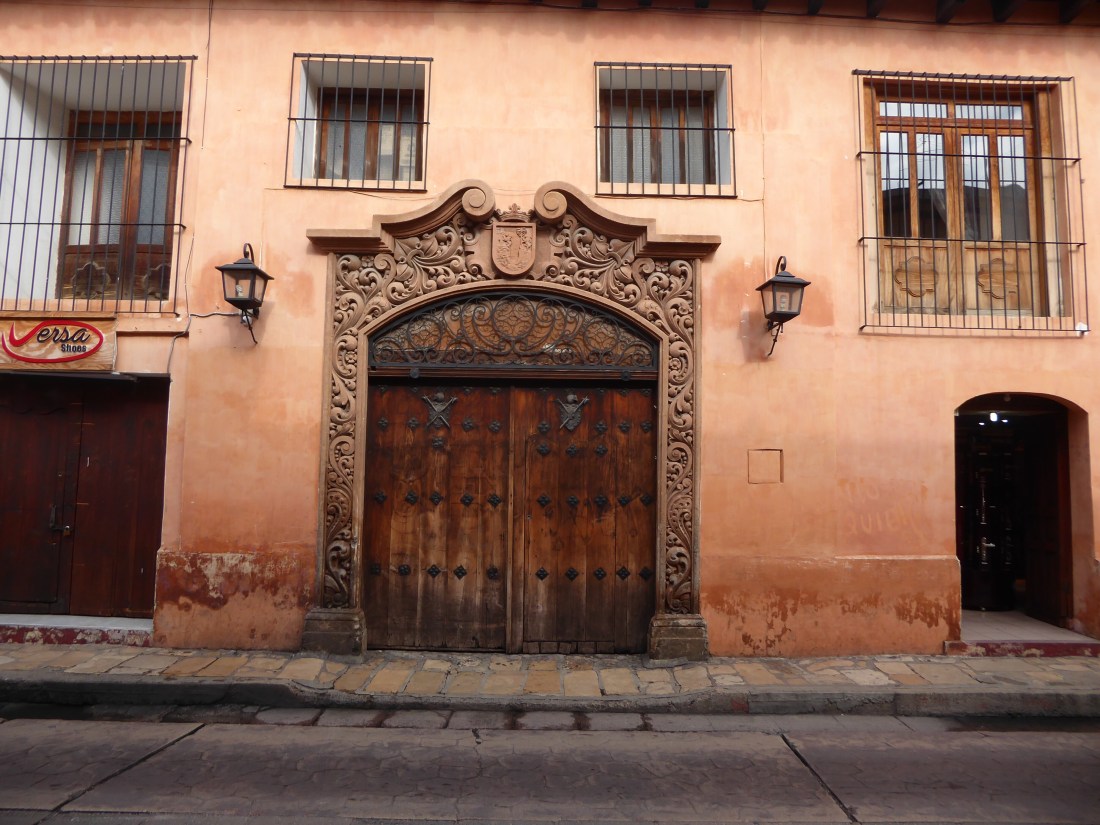
Above: doorway.
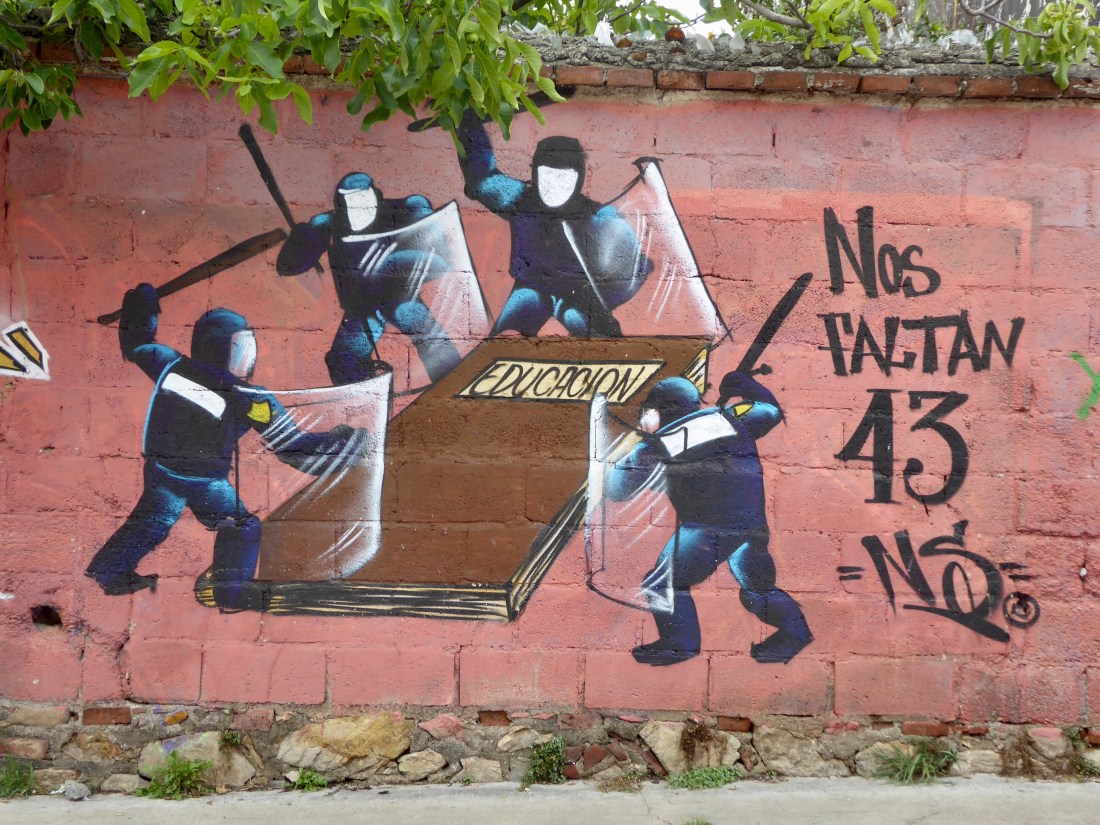
Above: mural.
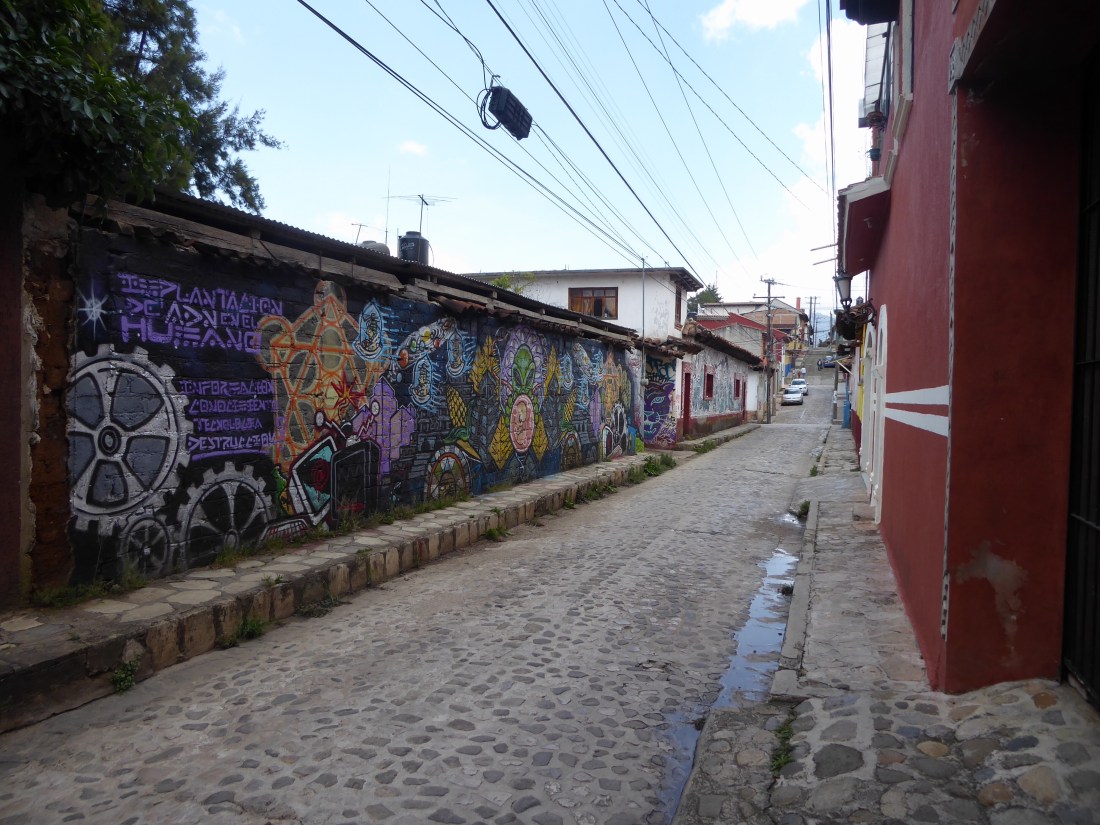
Above: another mural.

Above: a young boy examining a ceramic mural at the Park de los Arcos behind the Municipal Palace on the west side of the Zocalo.
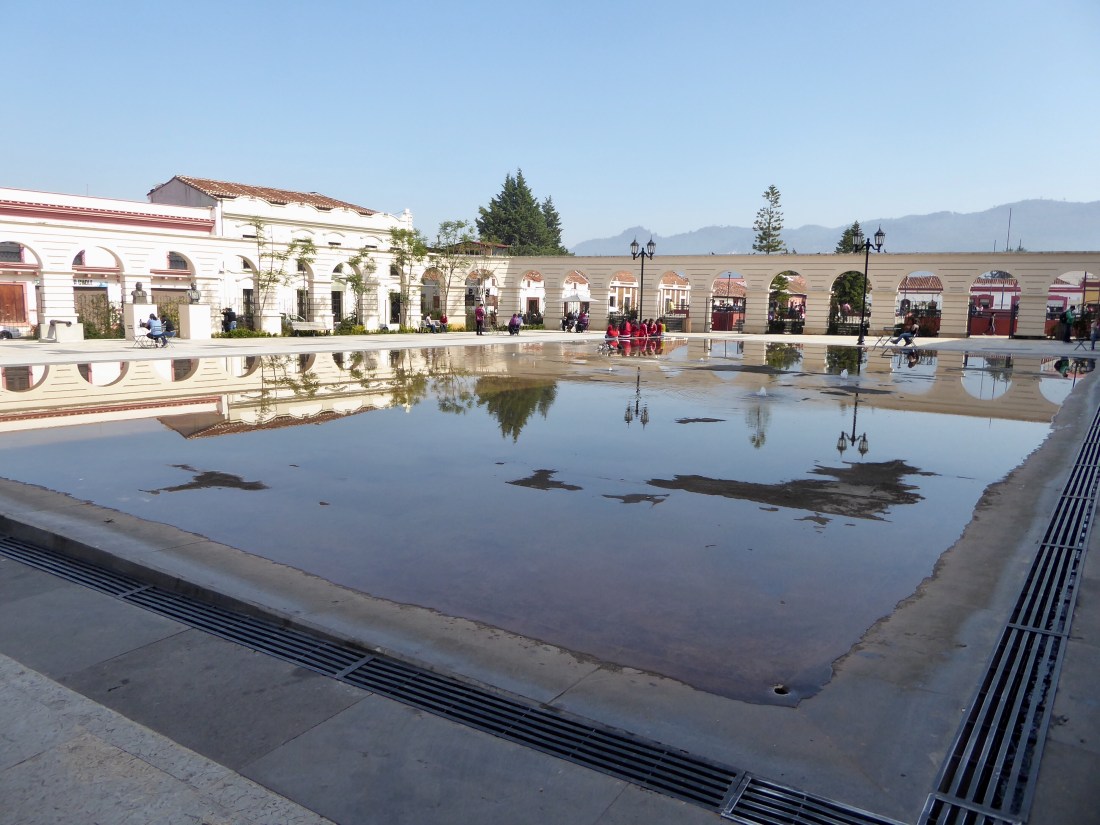
Above: water feature at the Park de los Arcos.
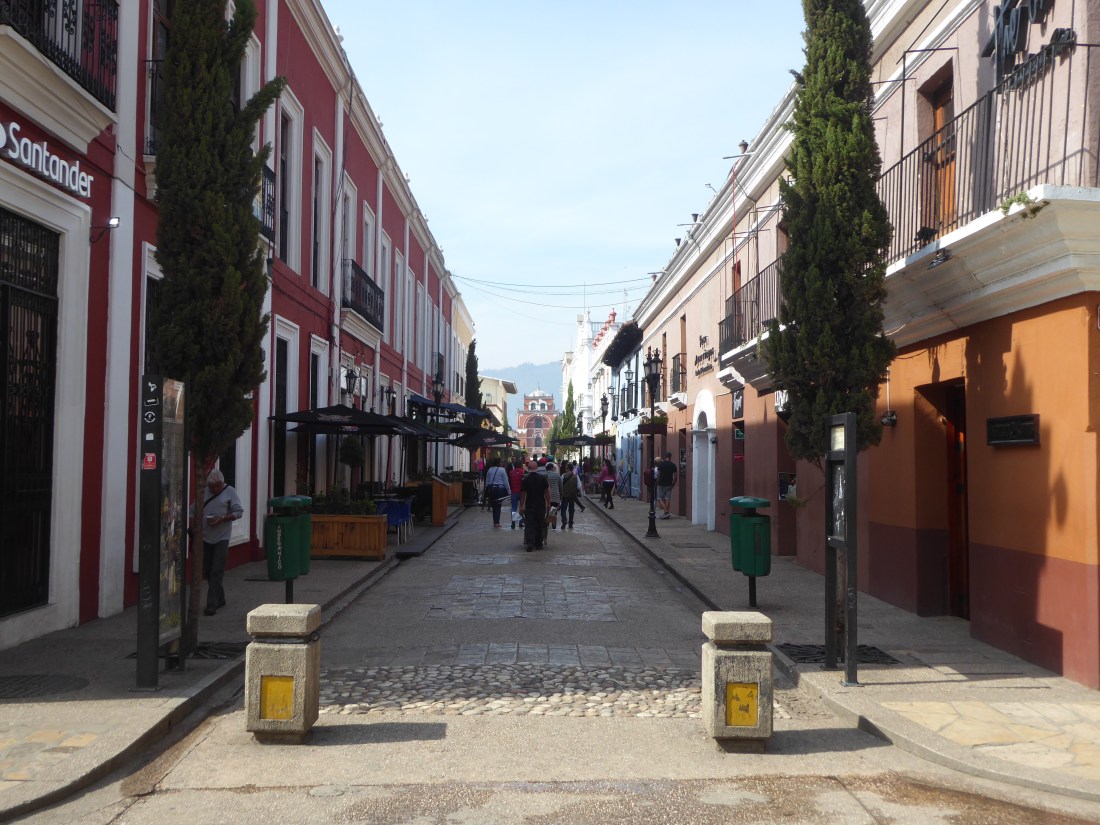
Above: pedestrian mall.
Our next destination is Oaxaca City in Oaxaca State.


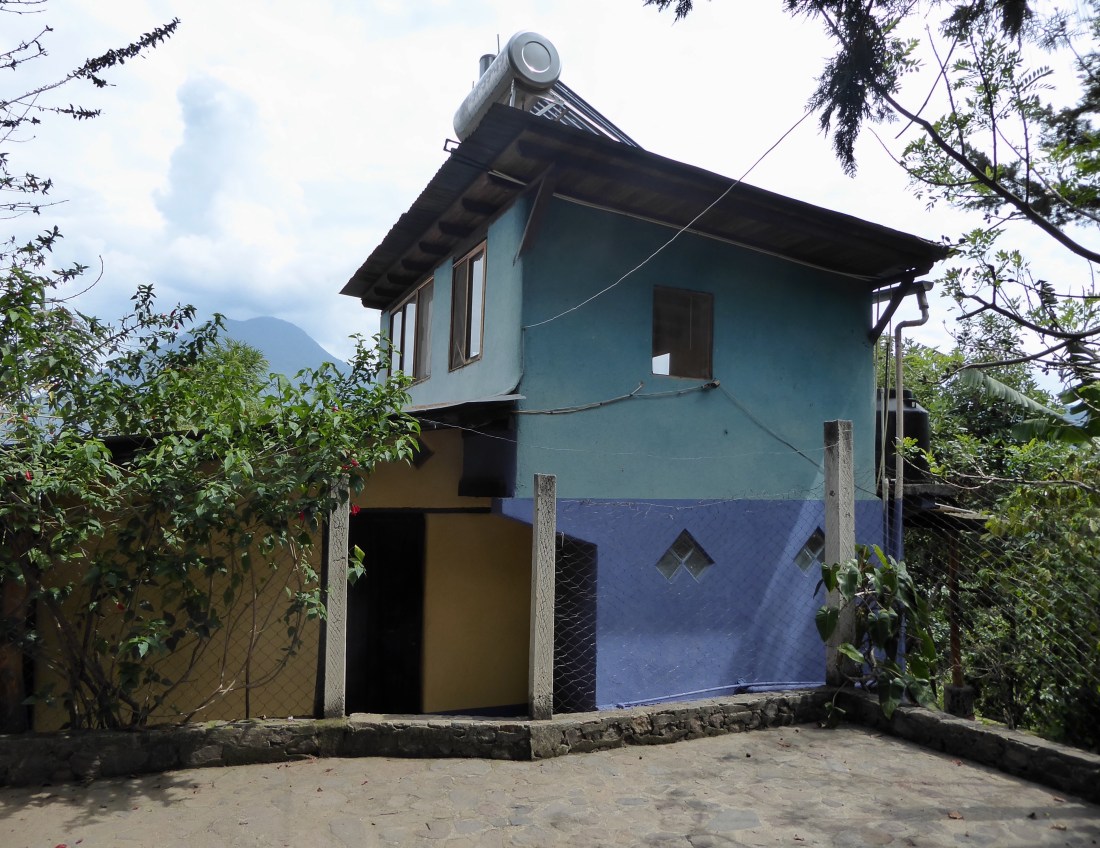

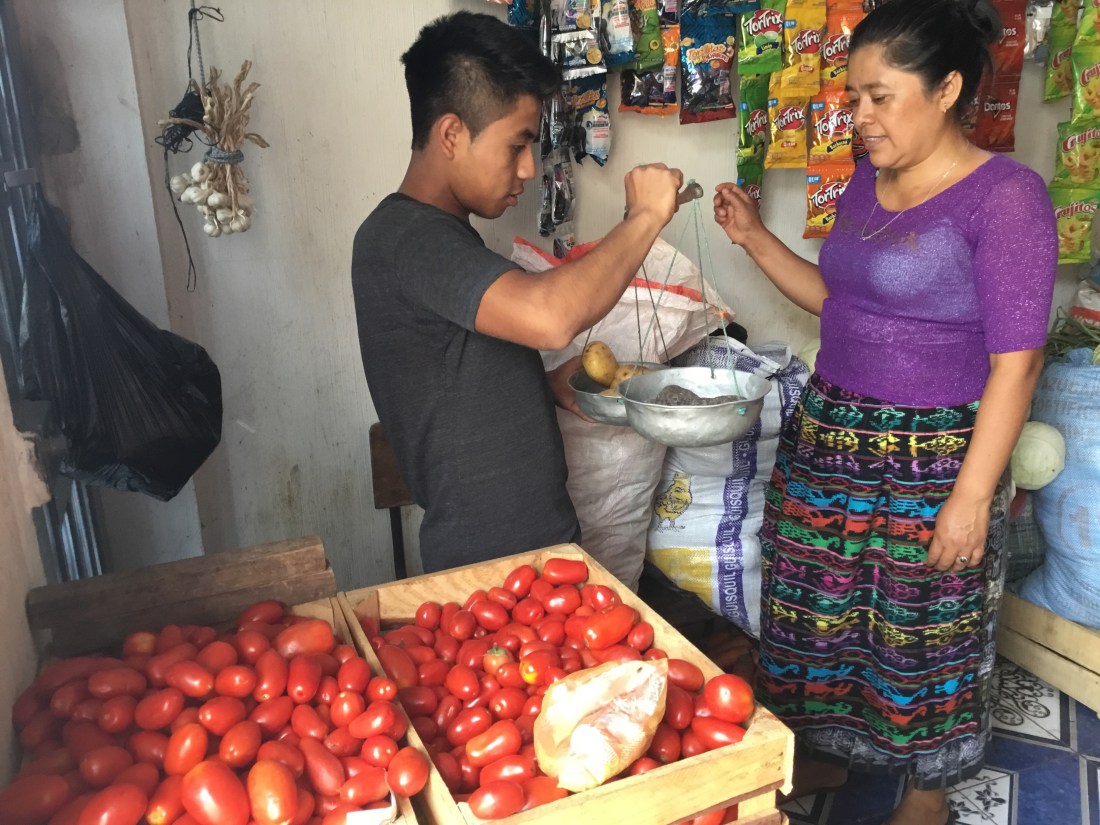
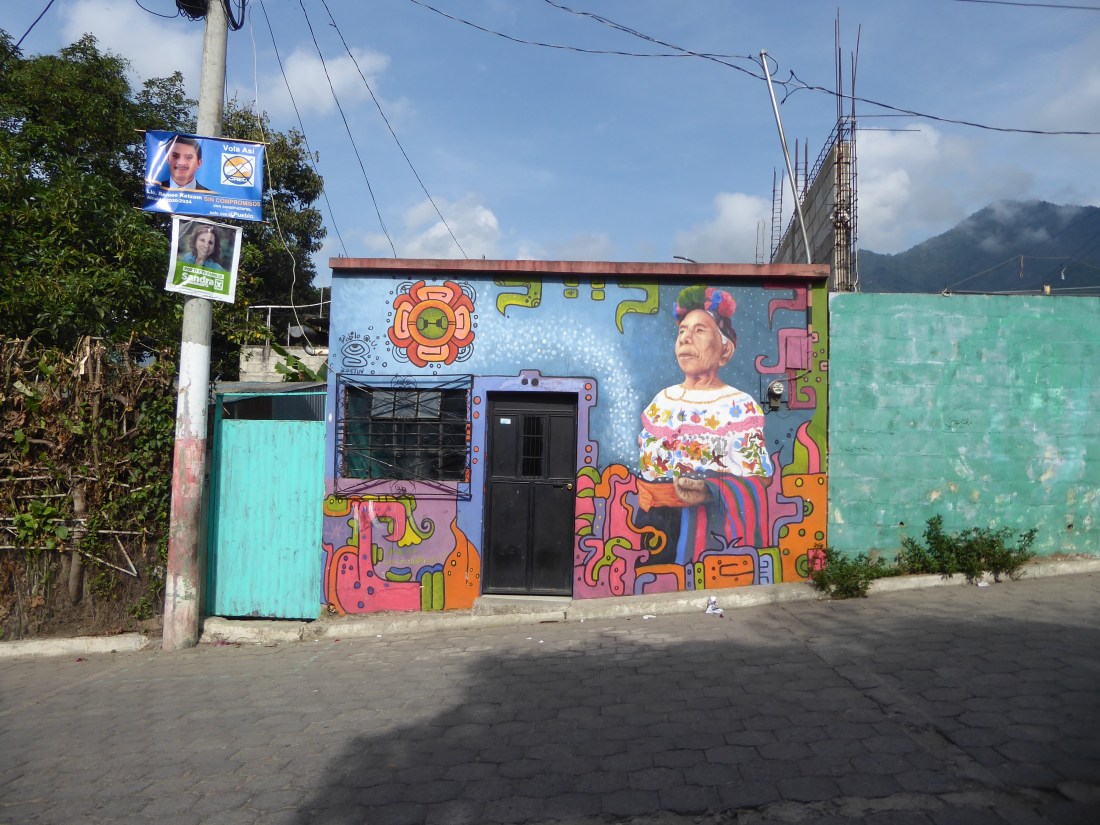
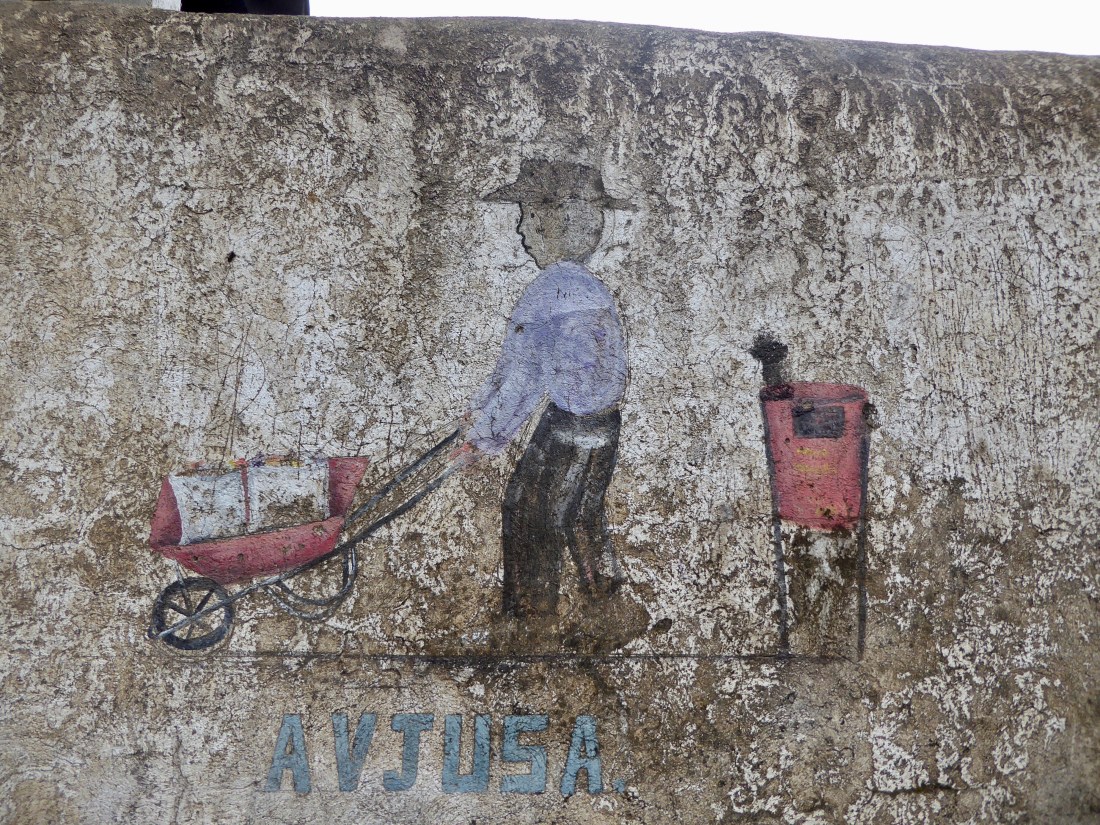


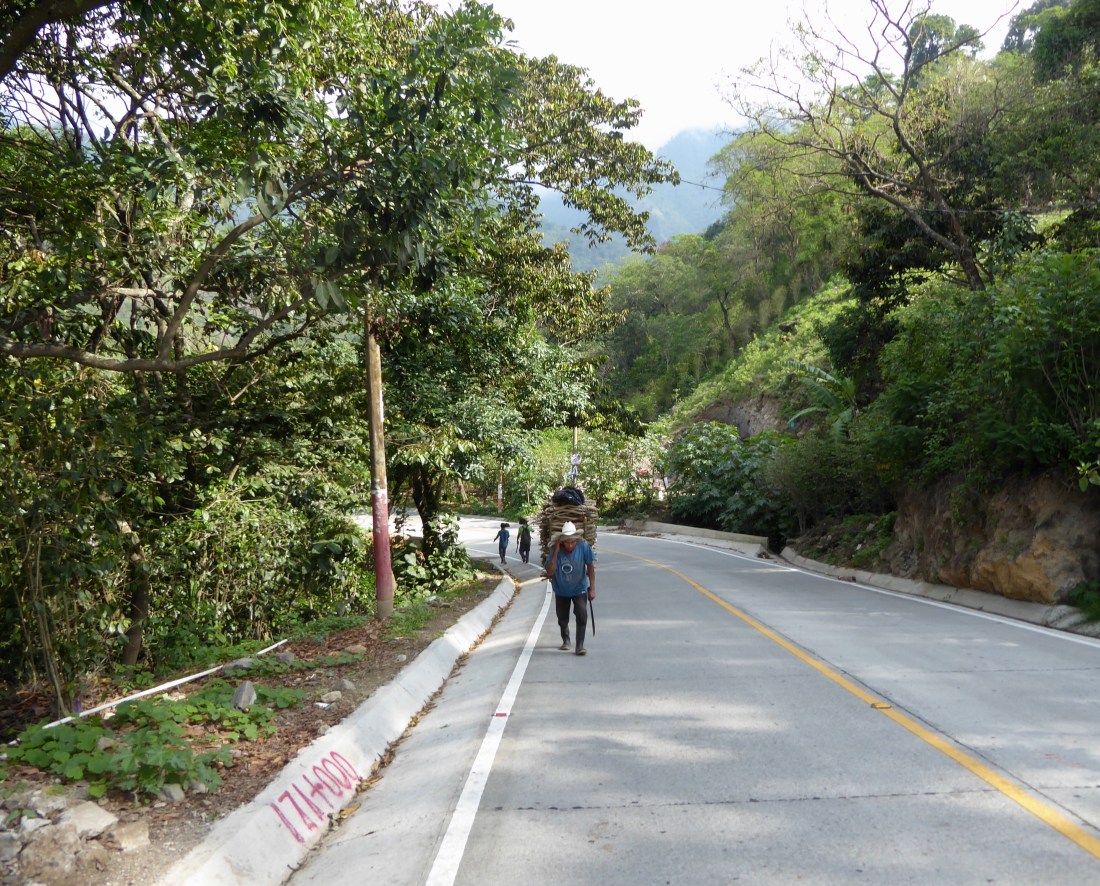





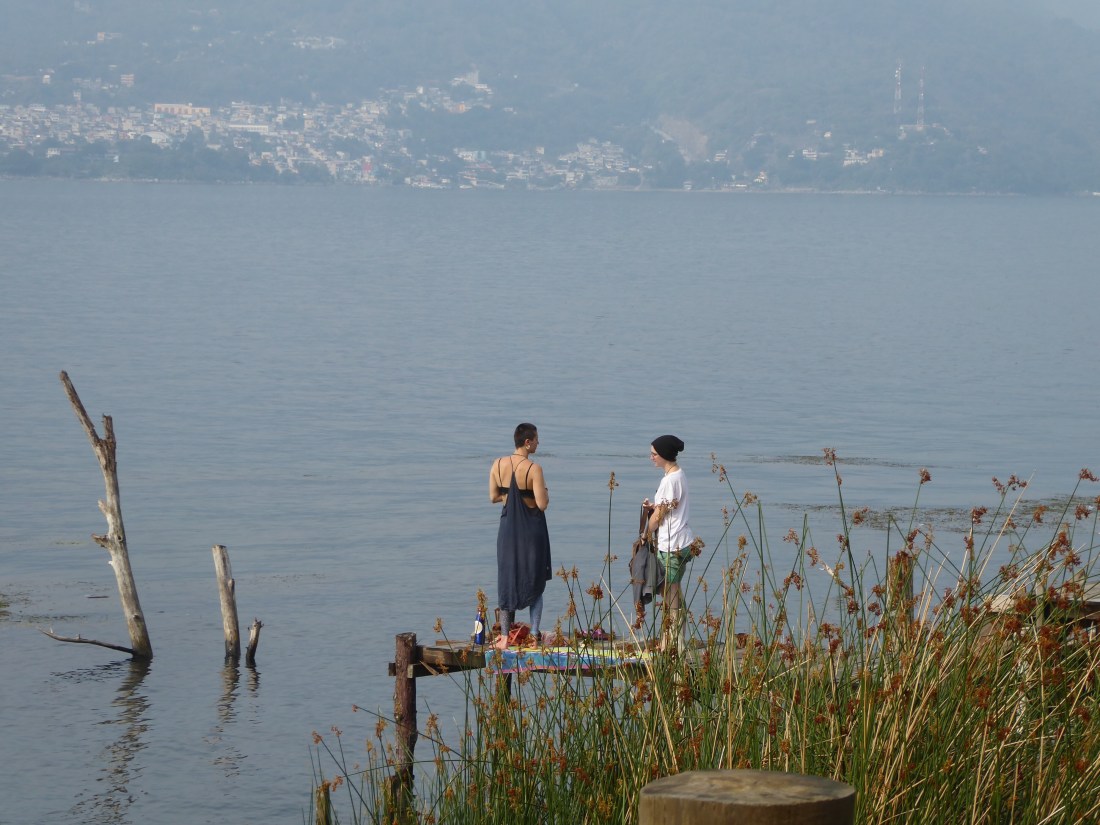



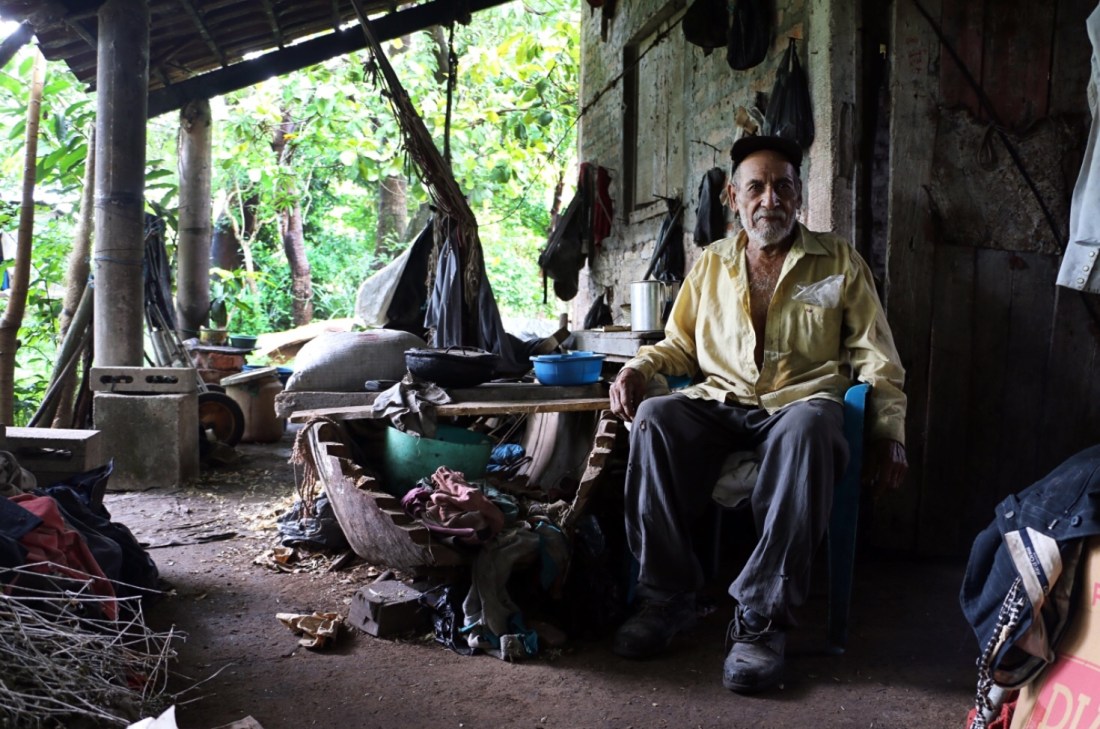
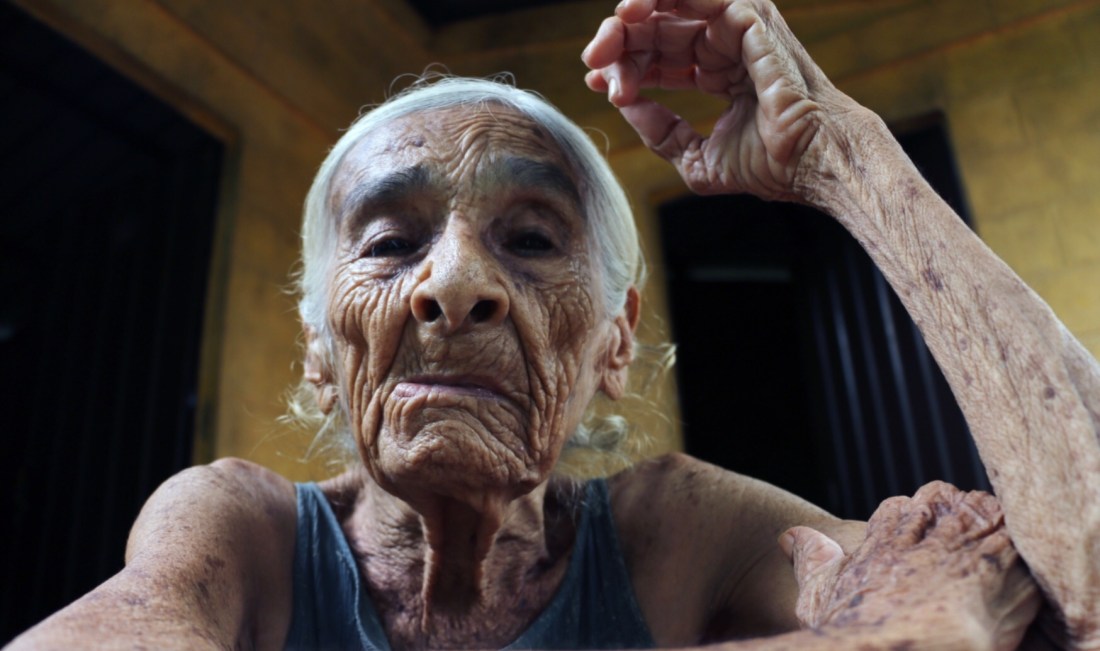



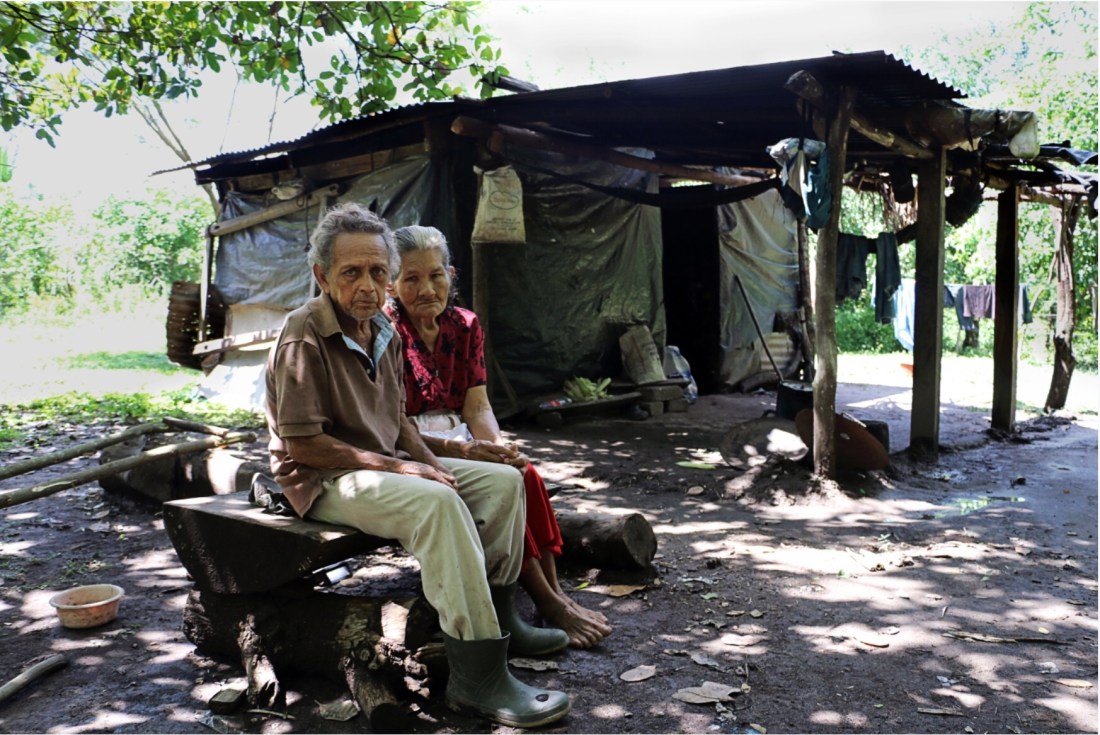
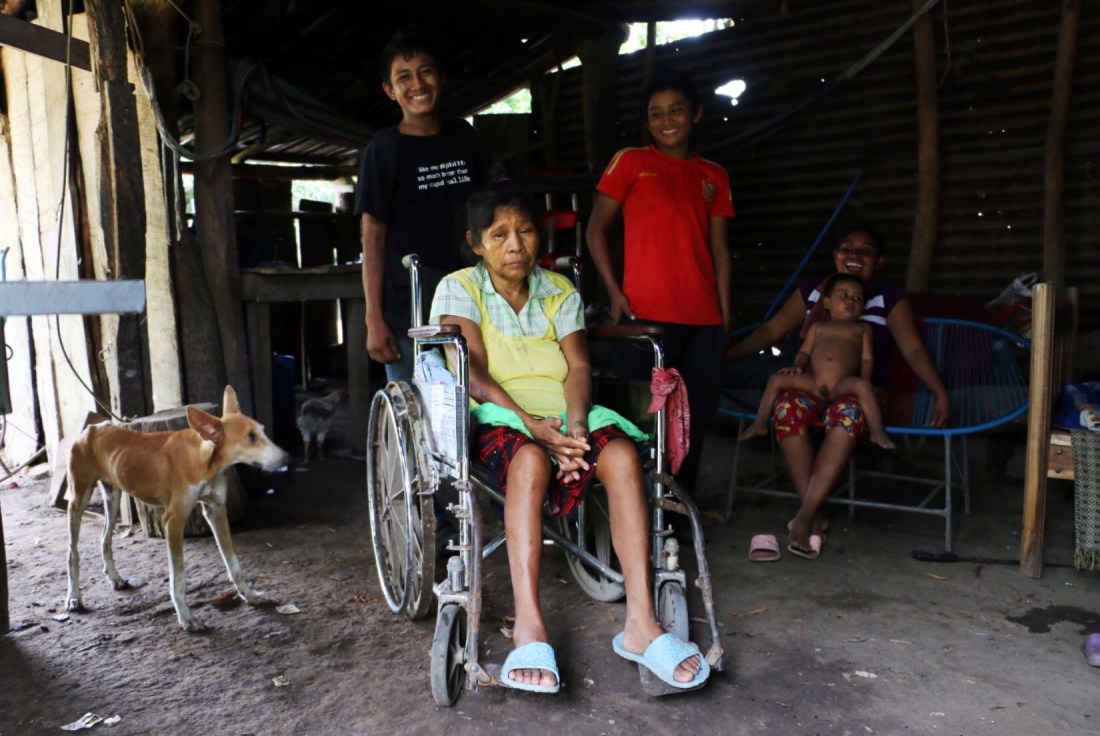

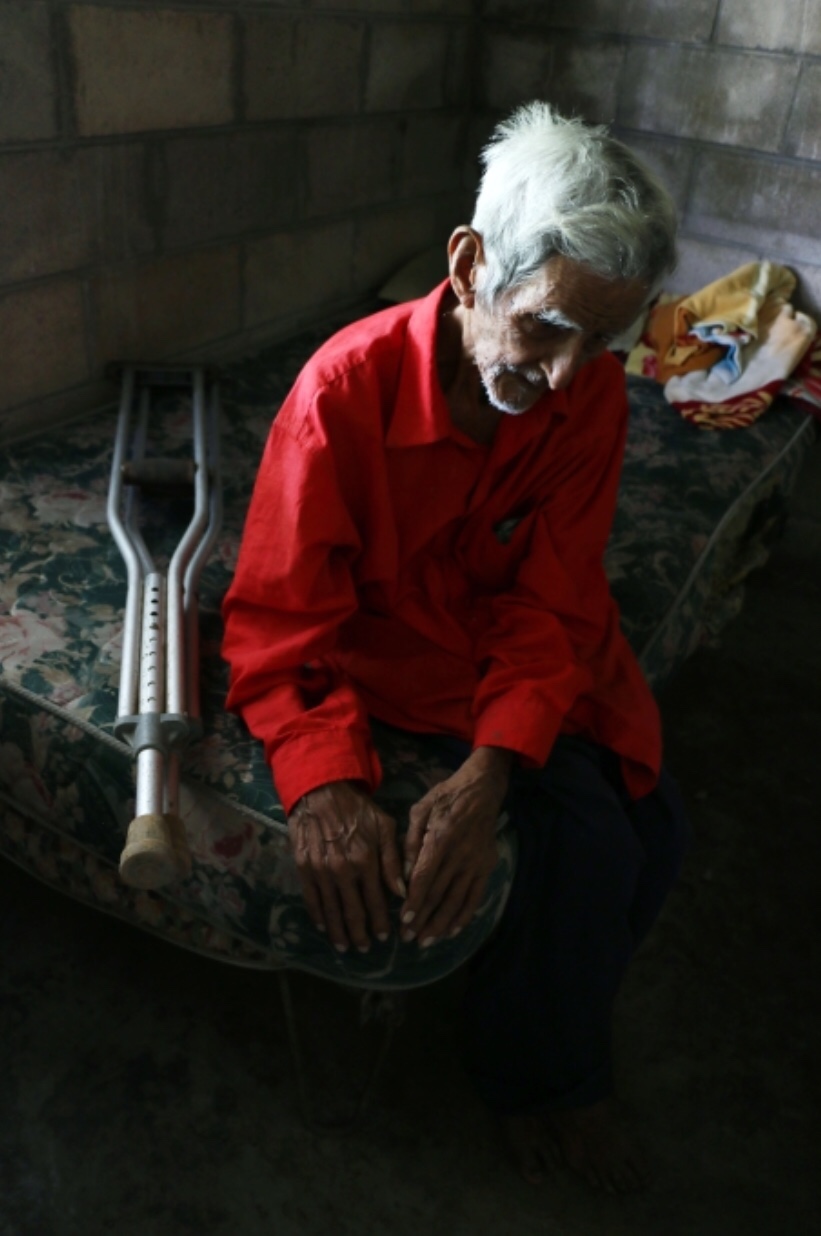
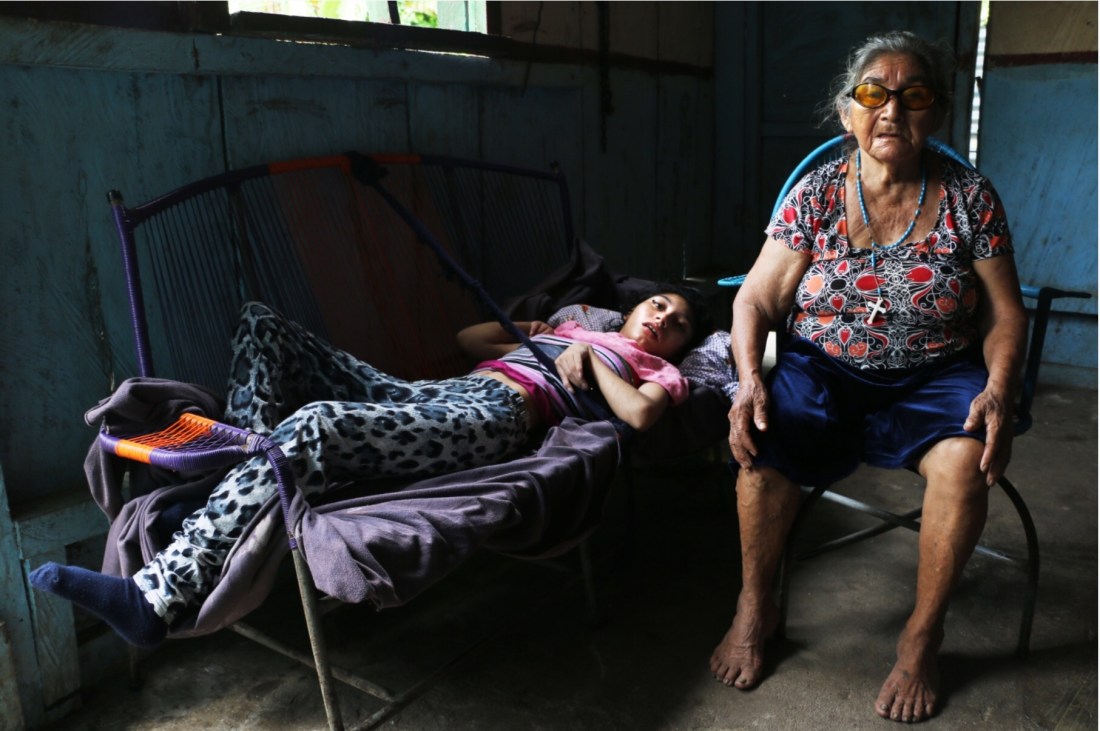
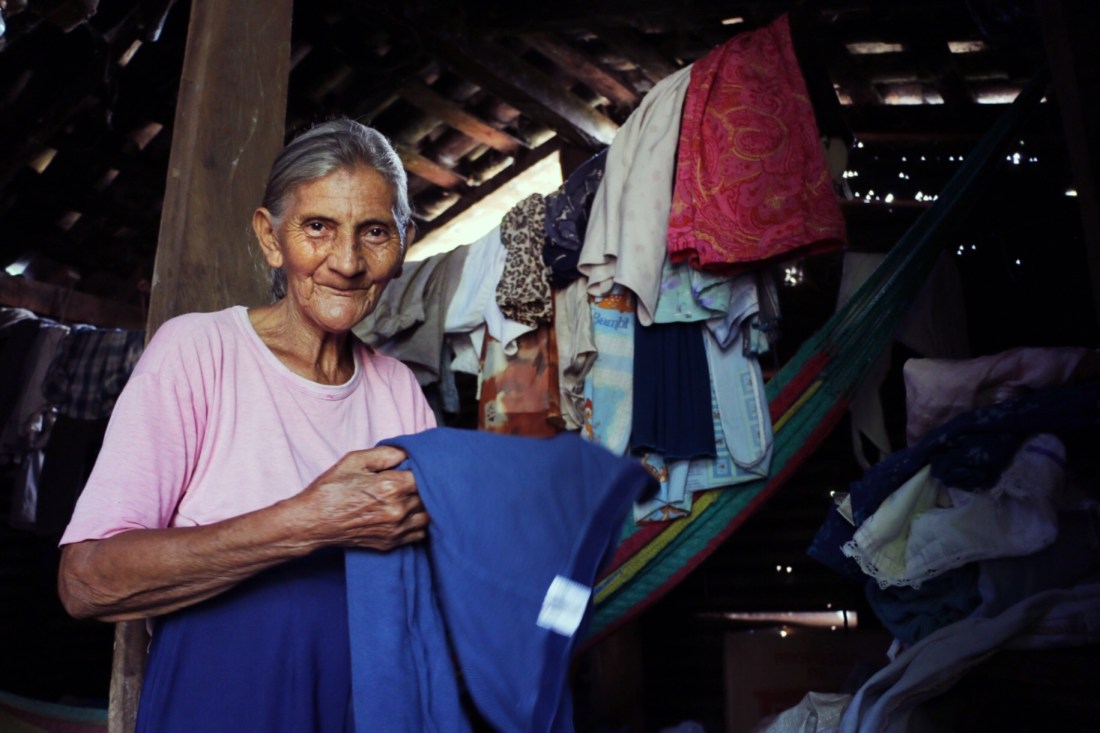
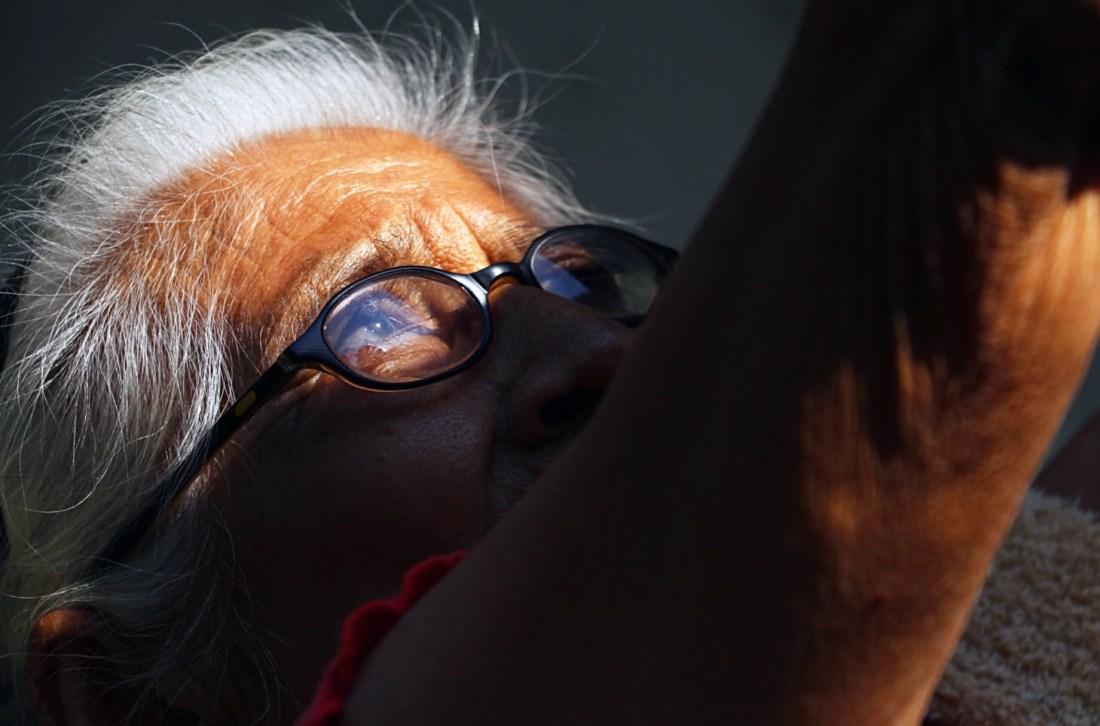

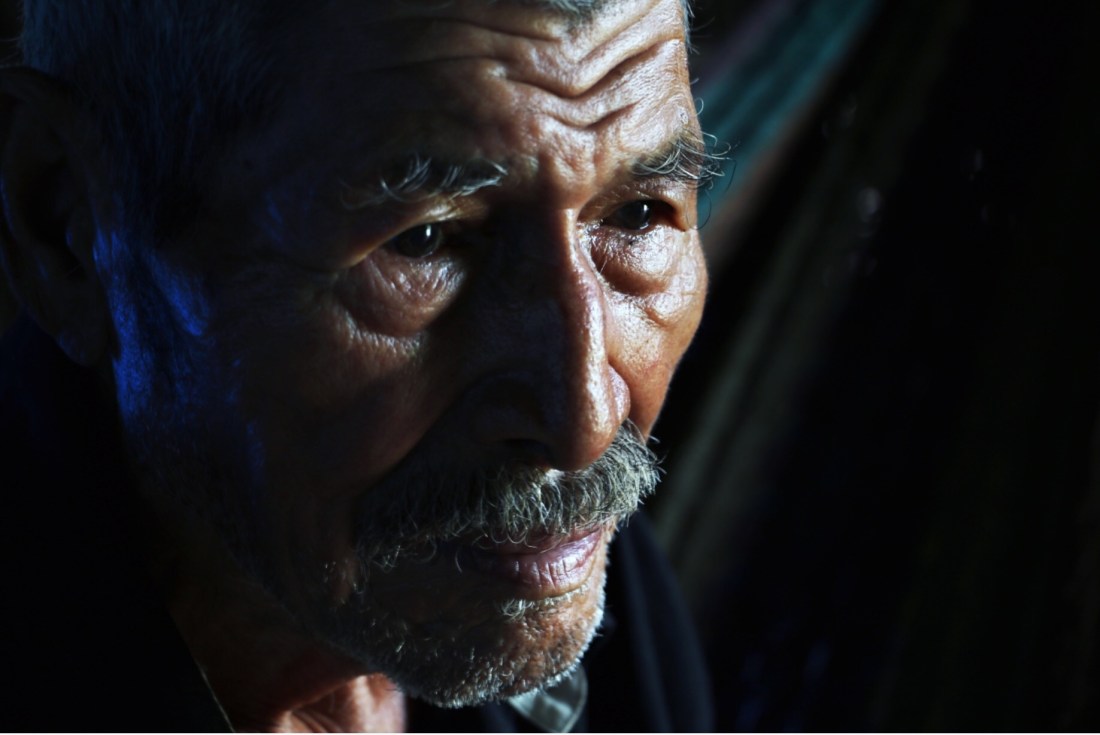

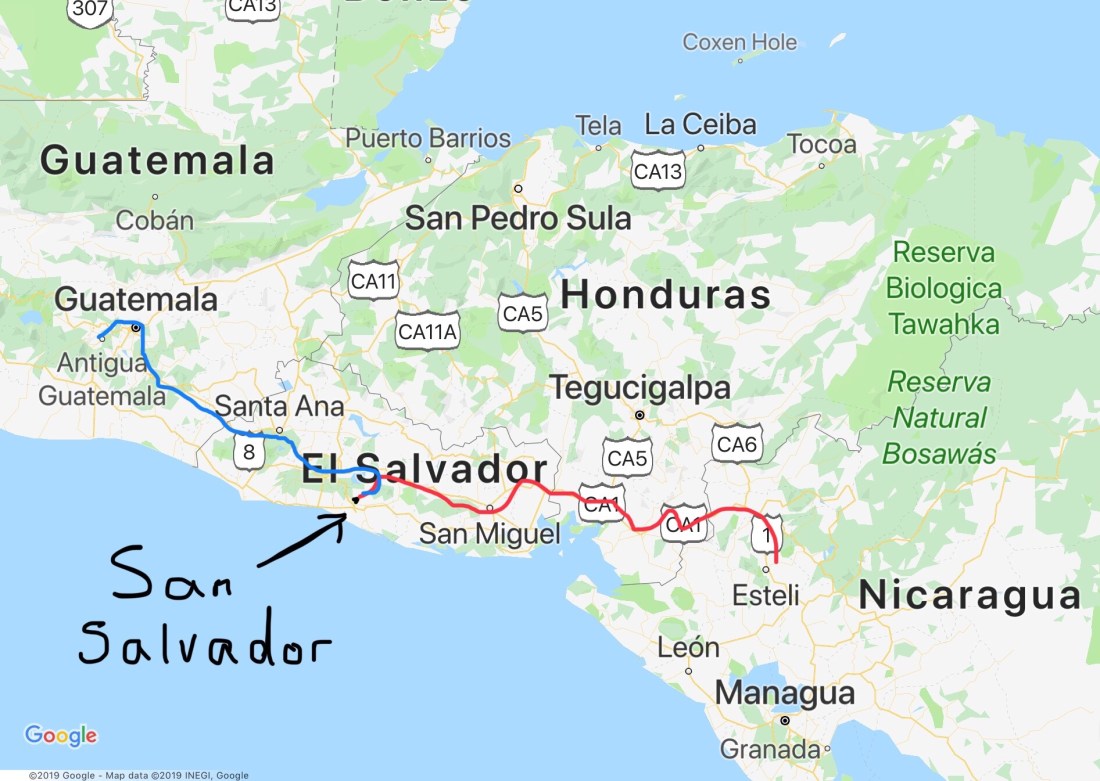

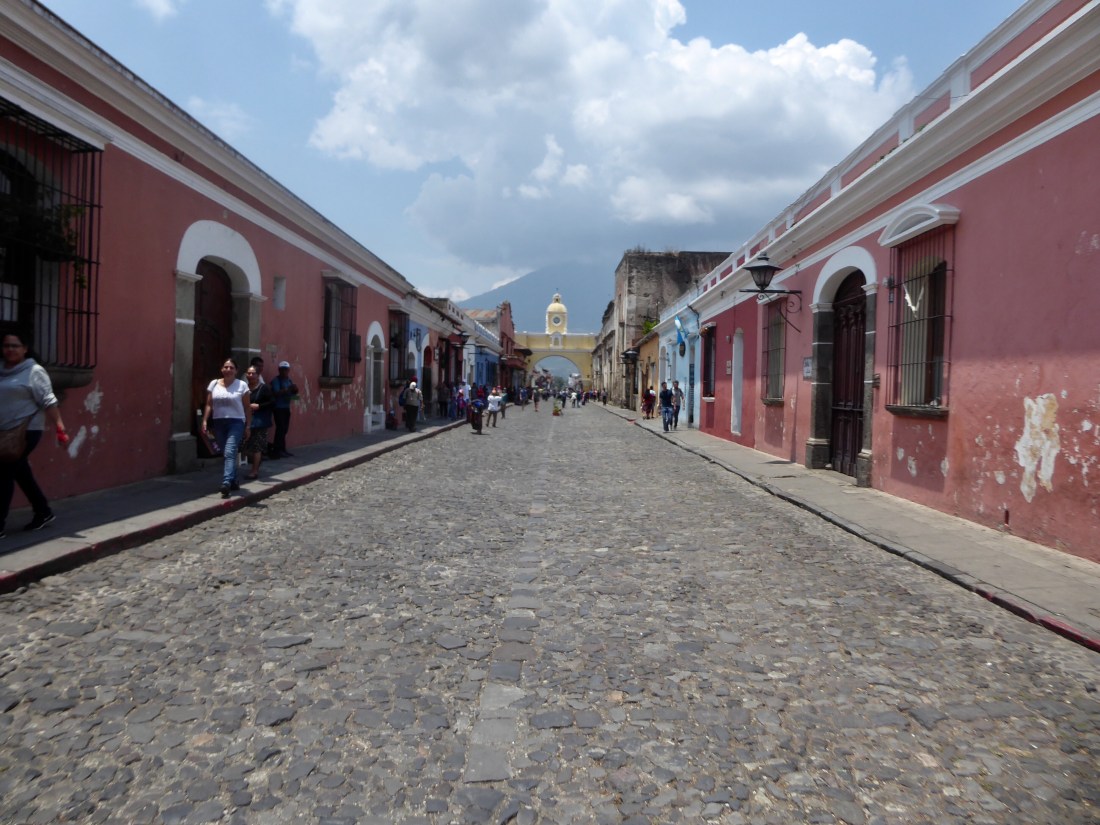
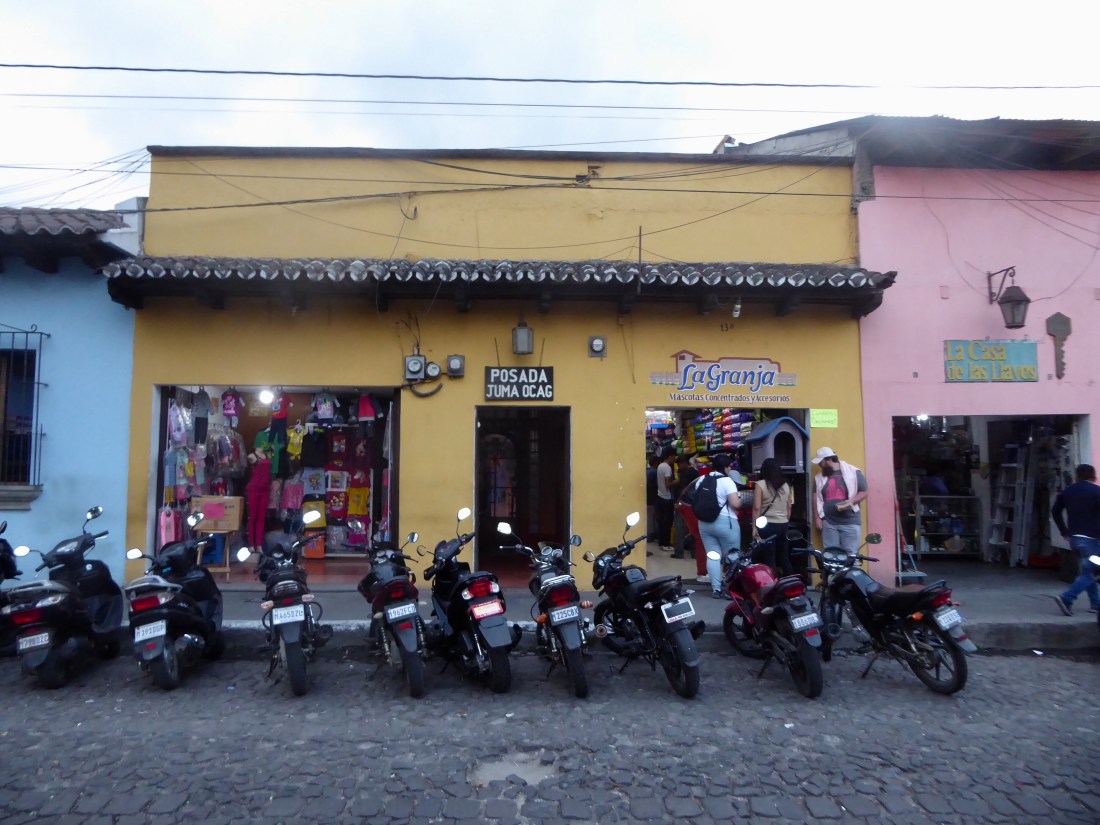

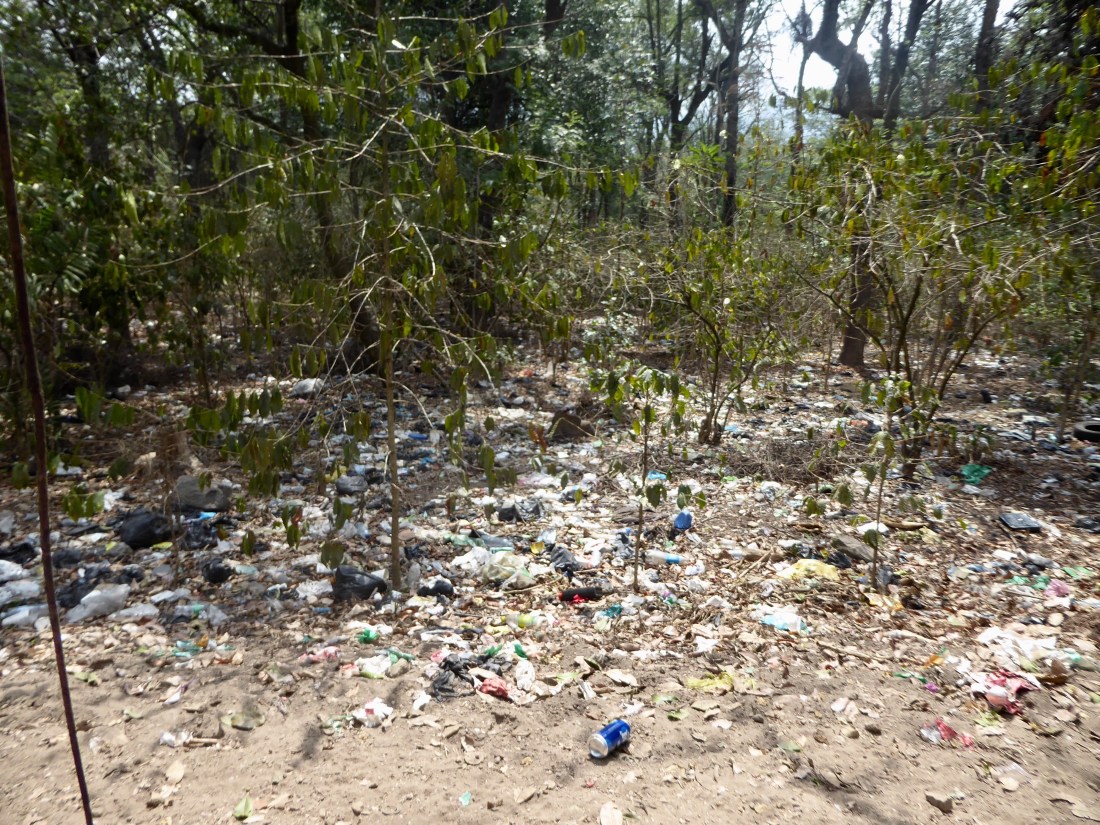
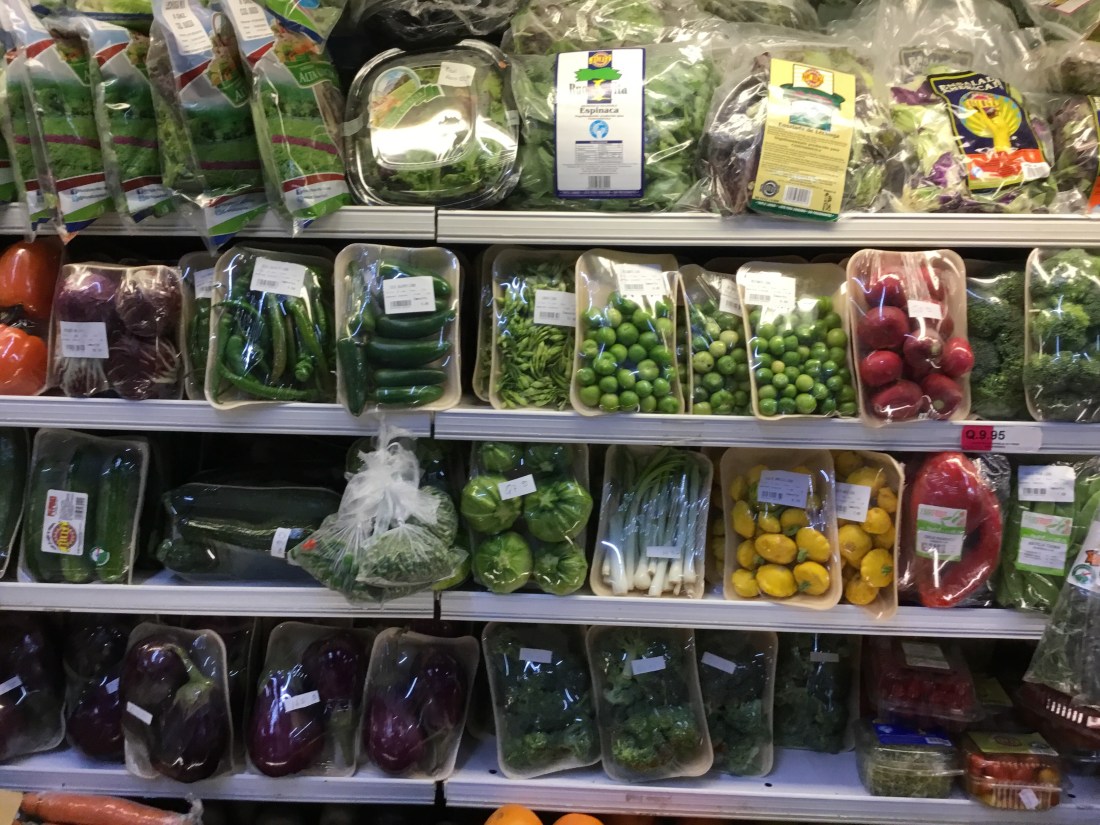

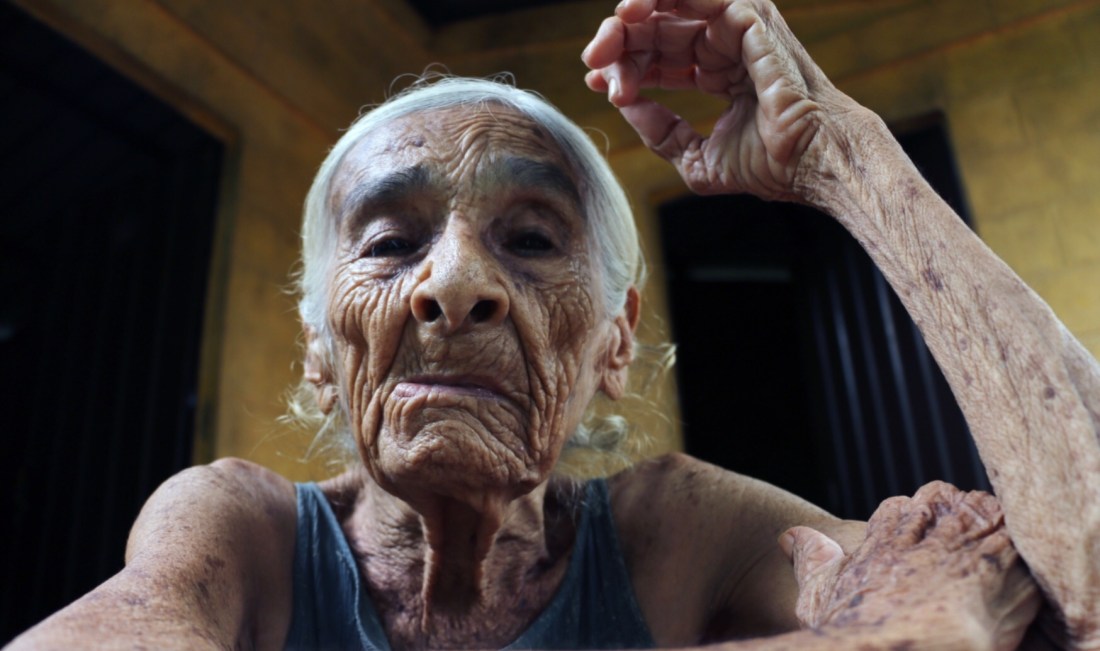


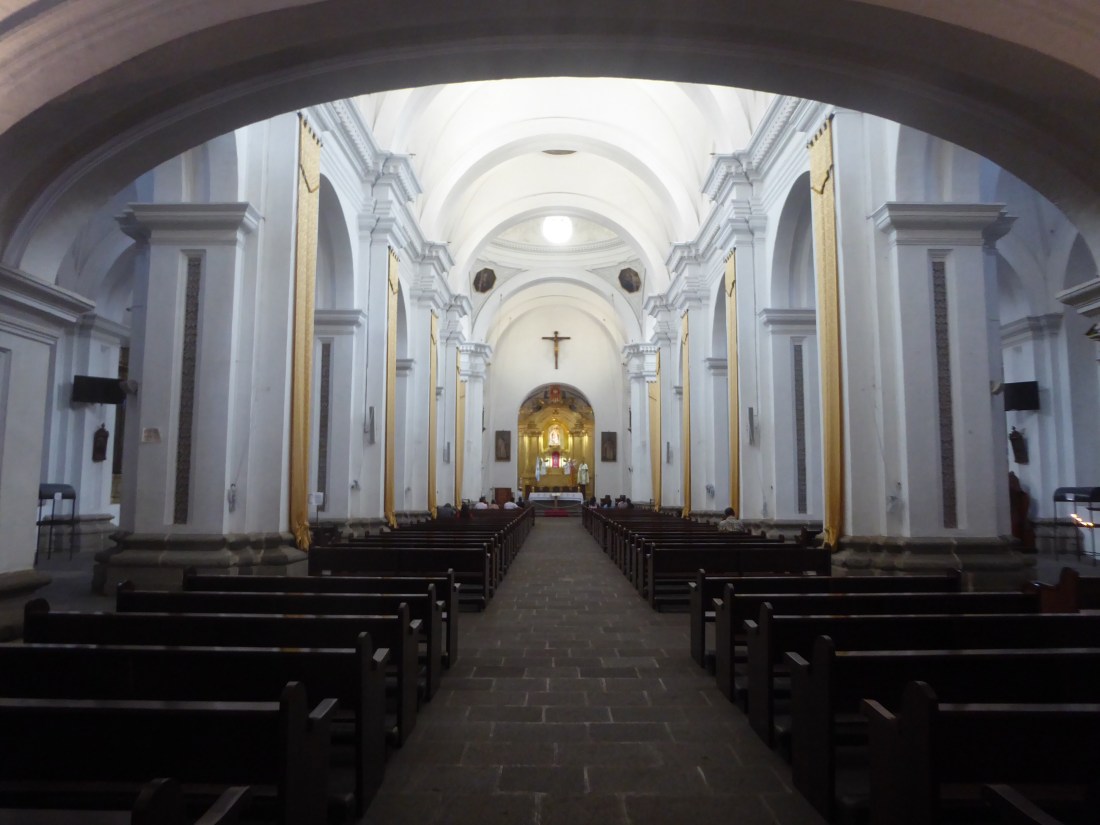

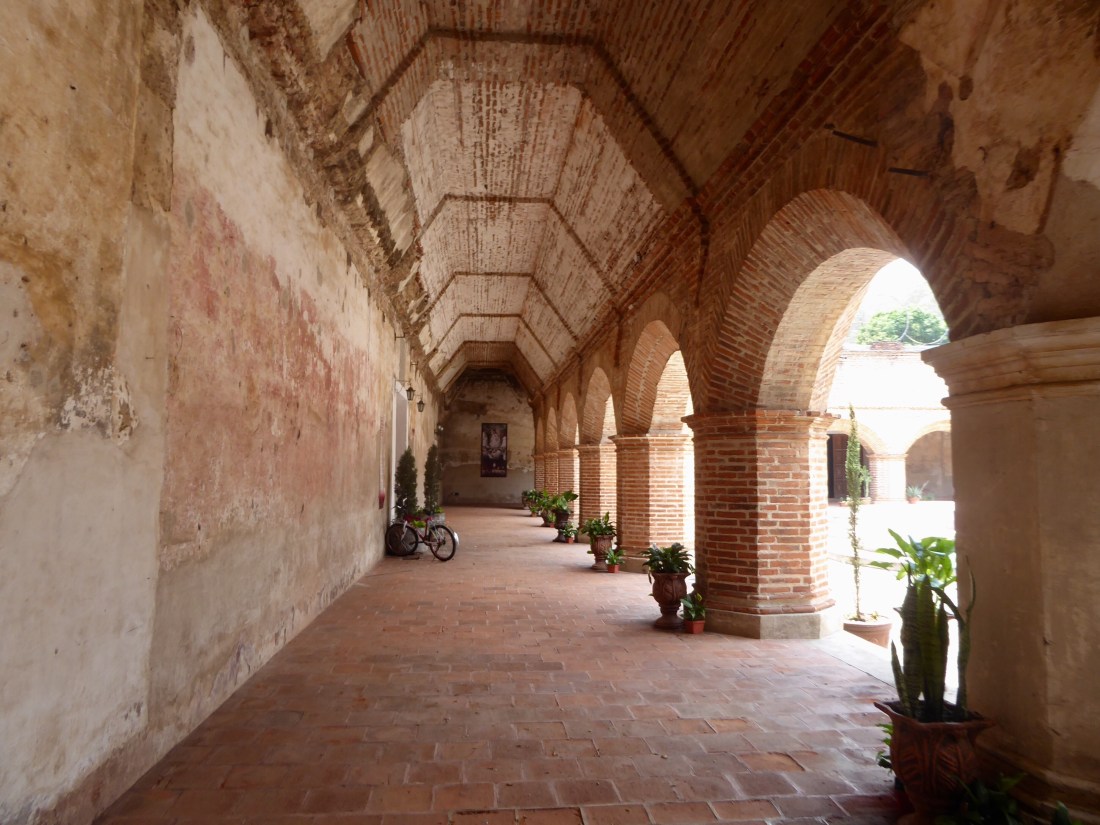
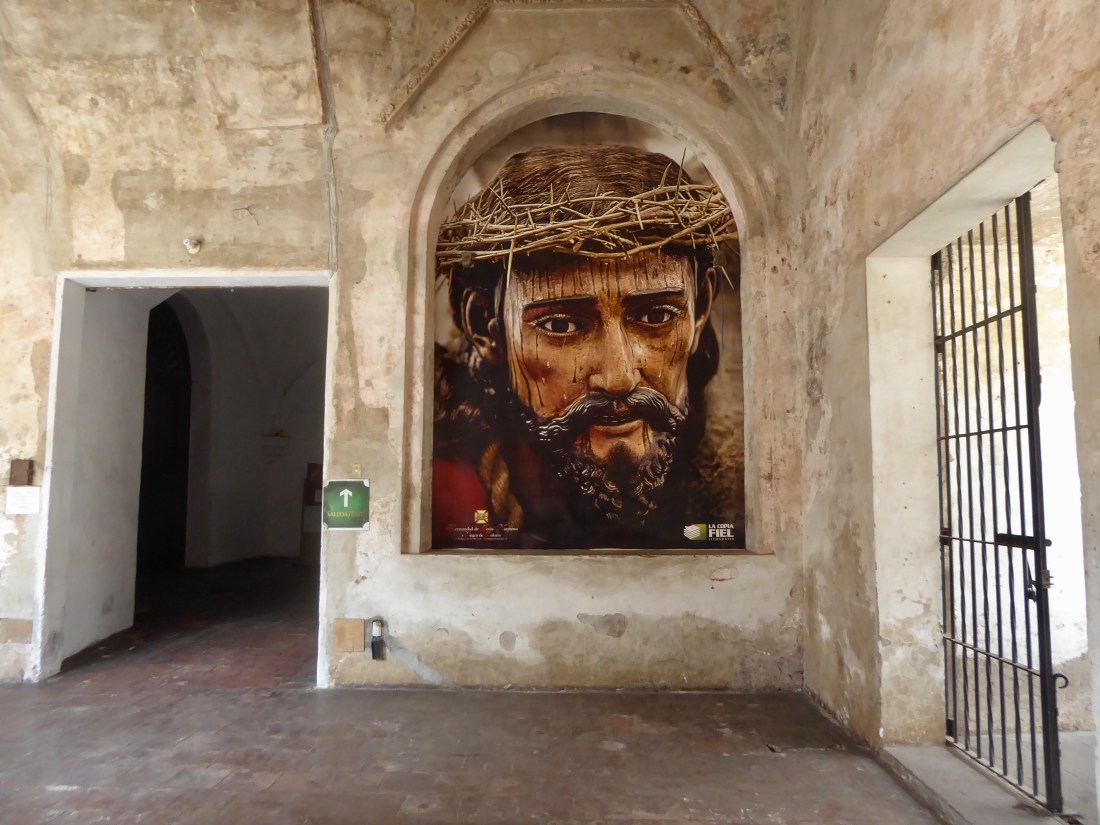




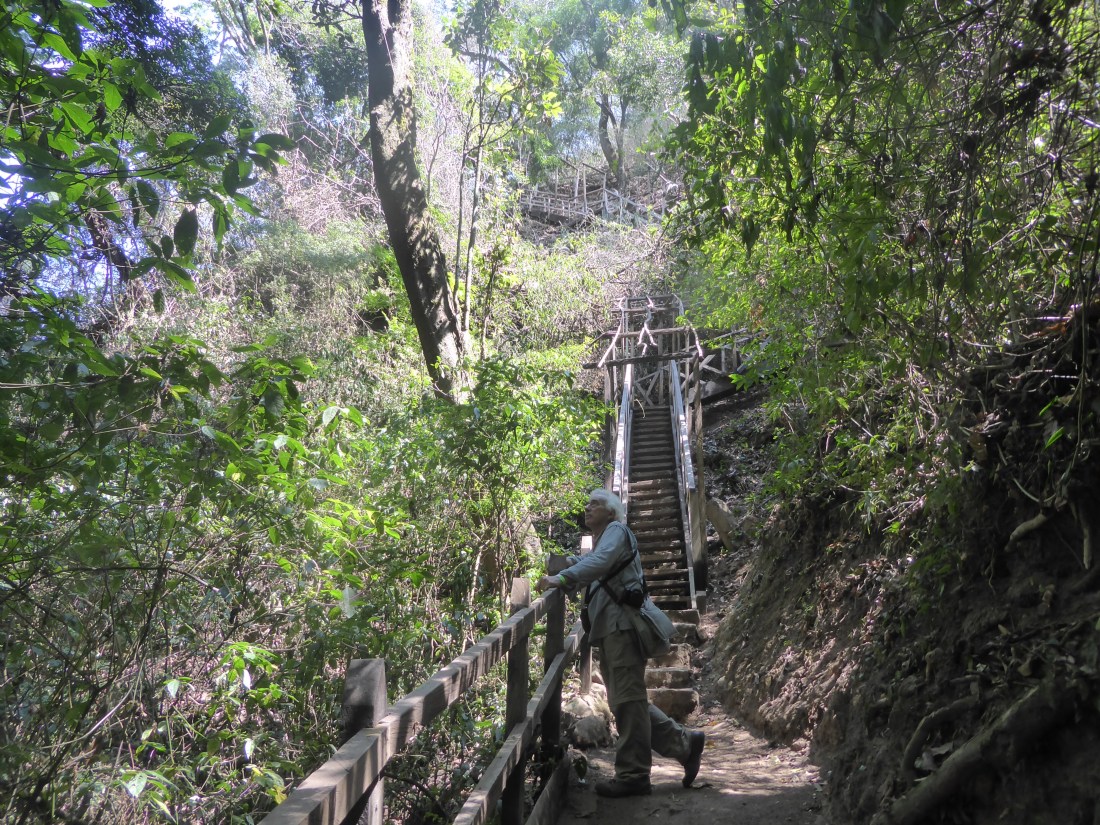

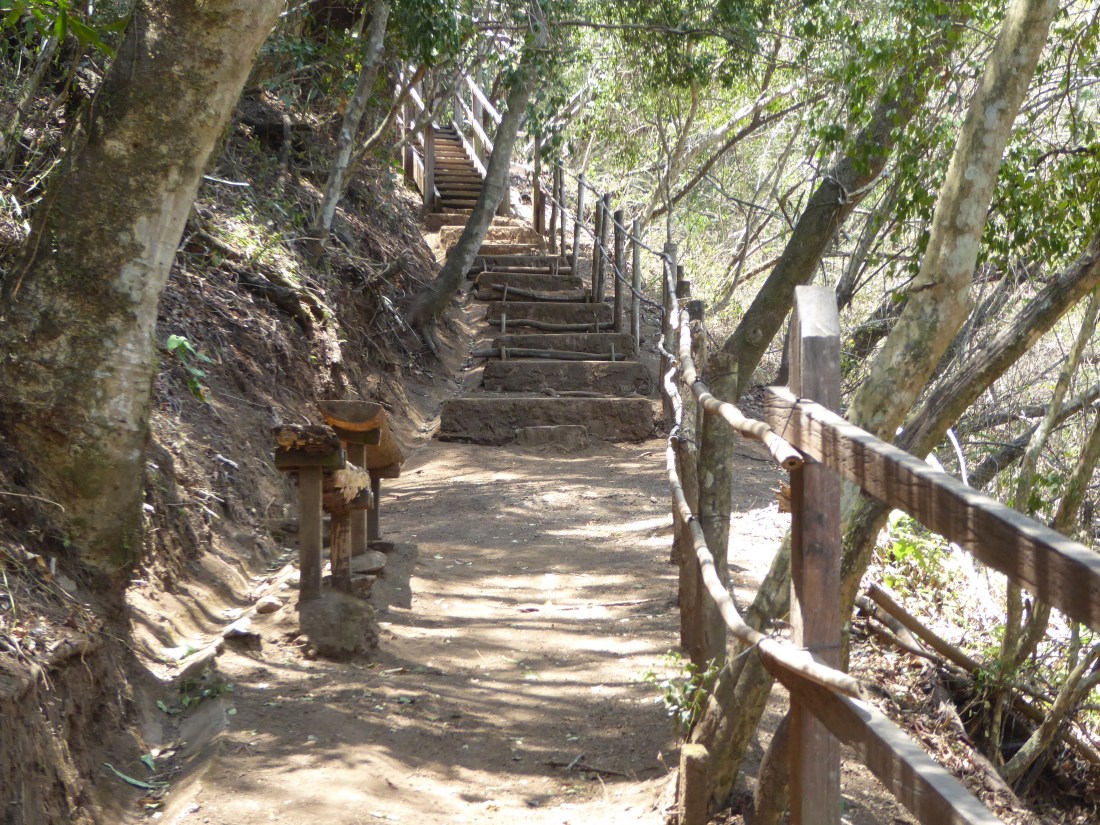
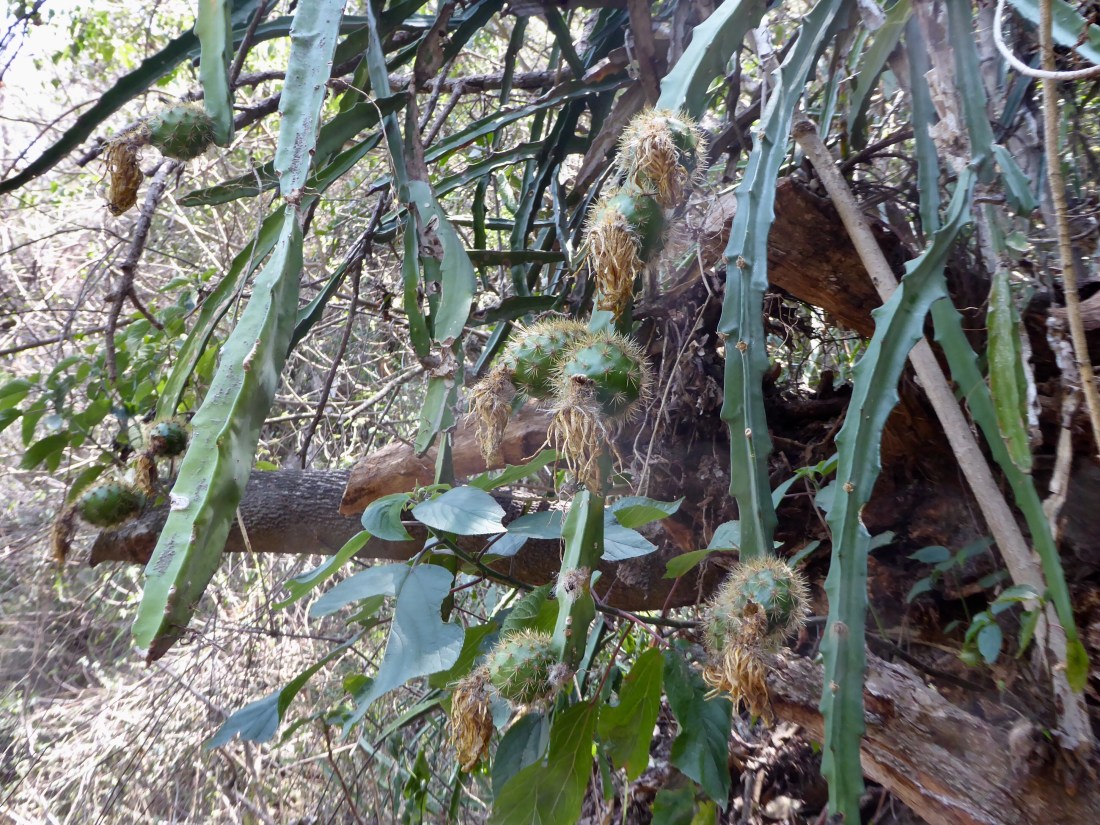
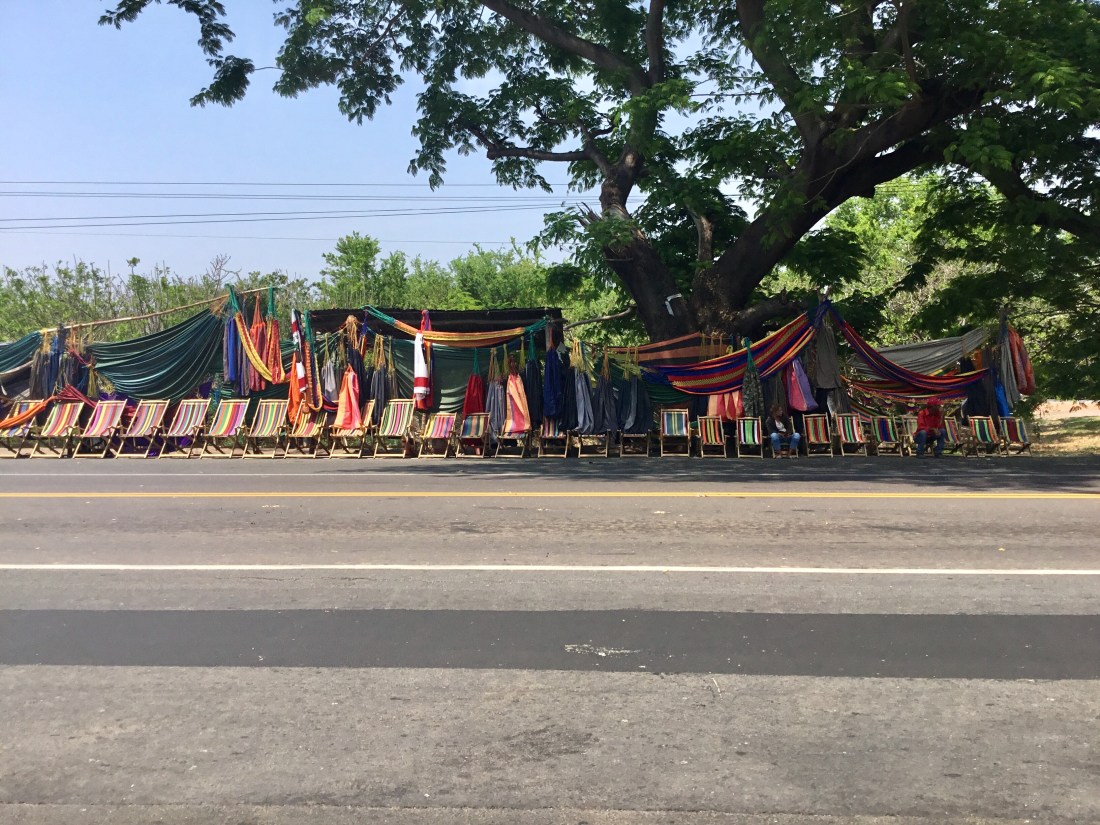

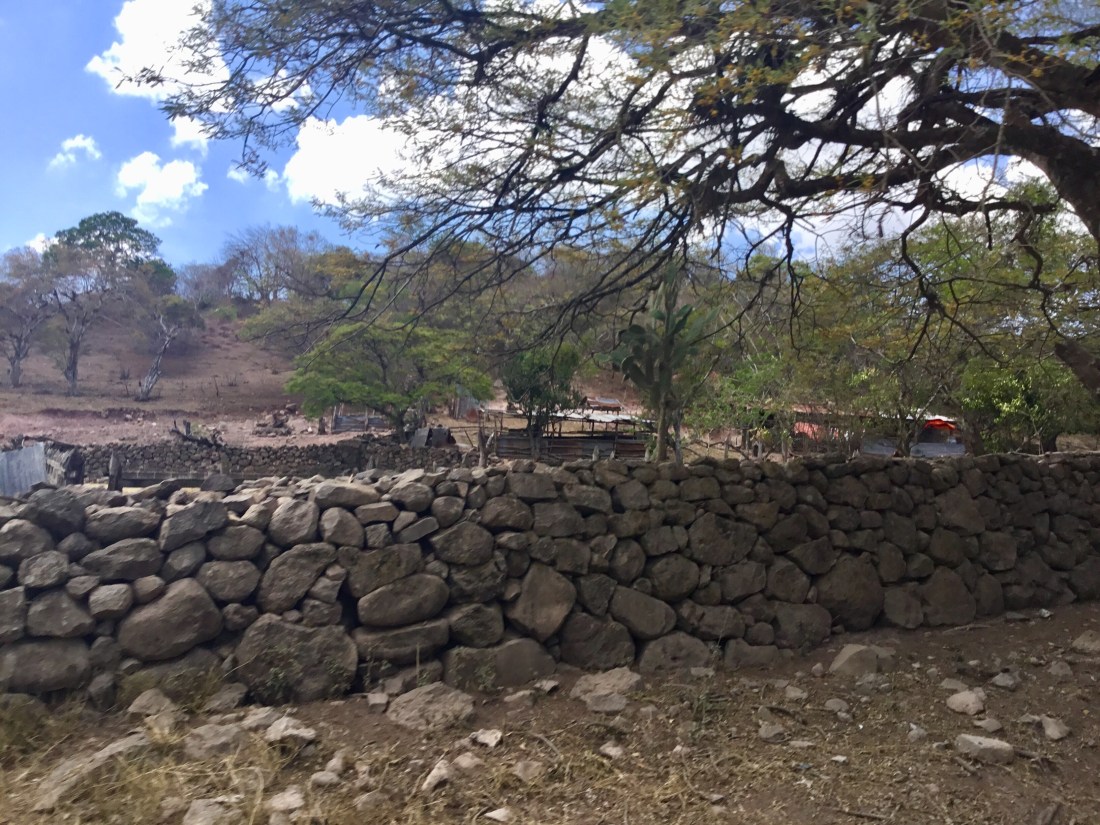




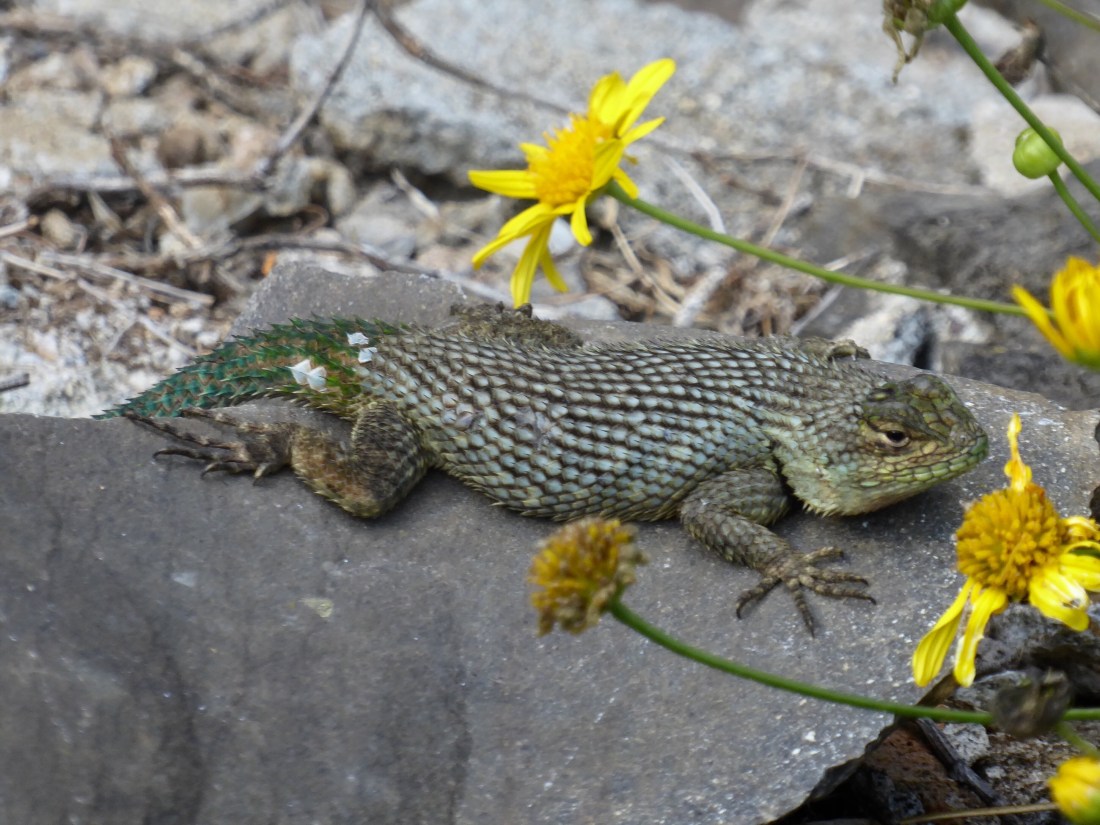
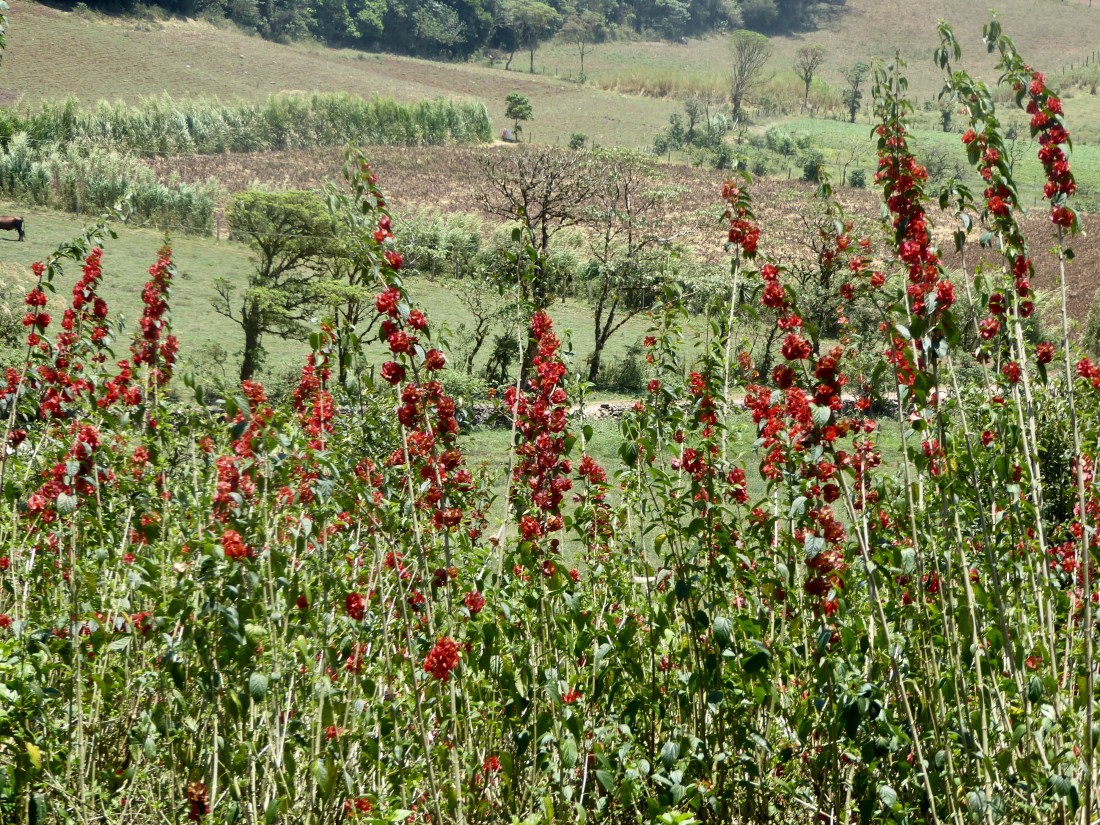
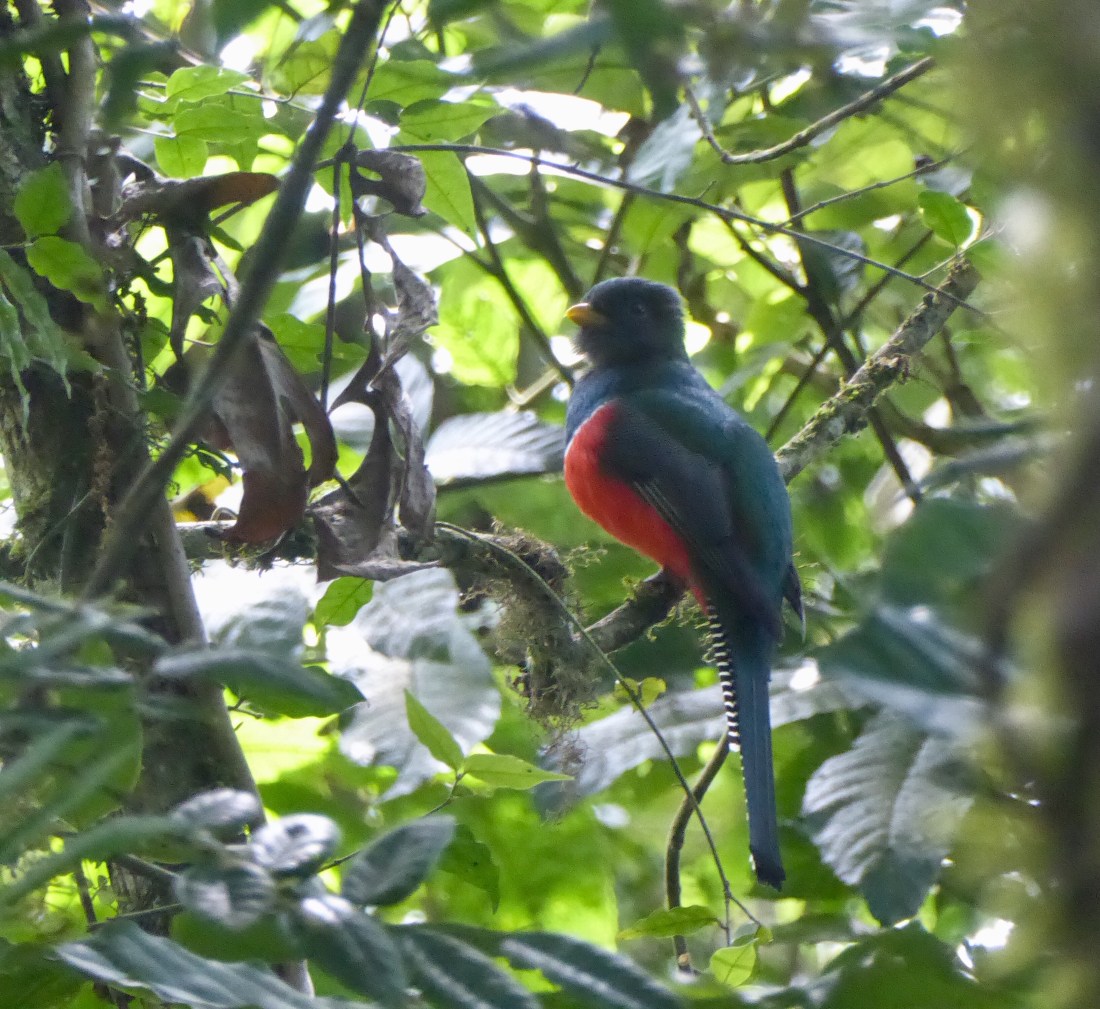

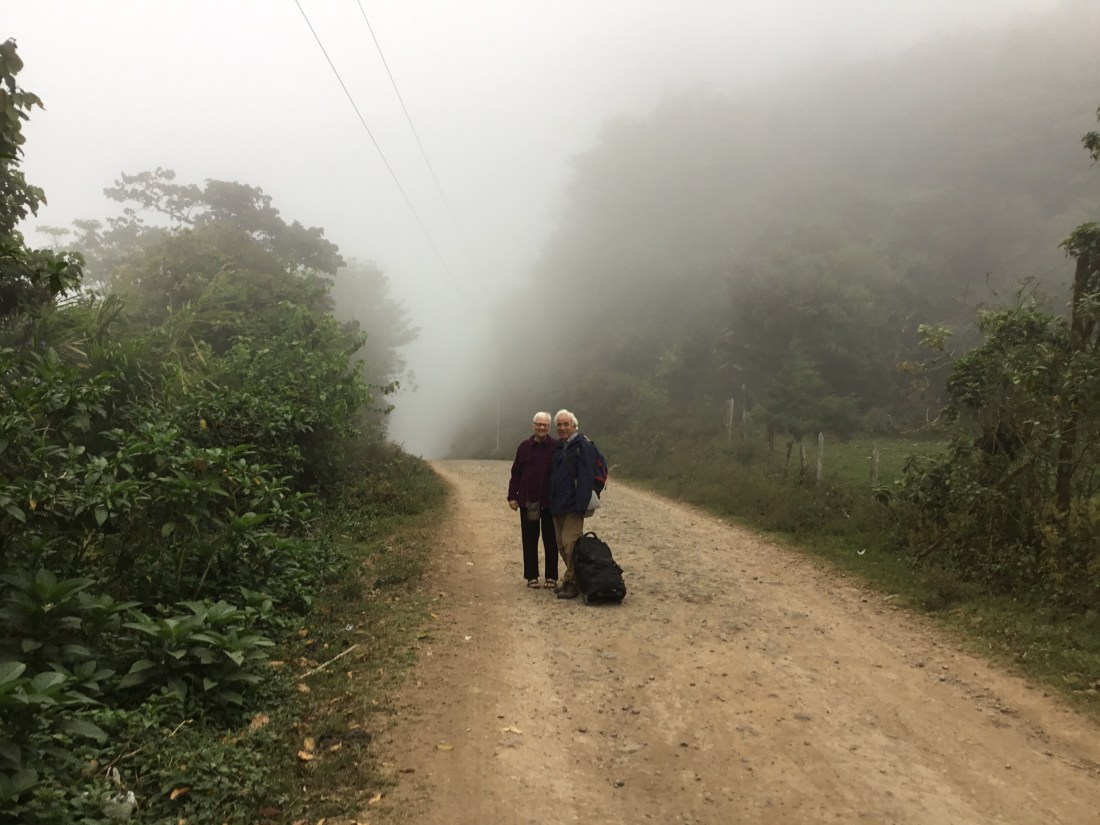




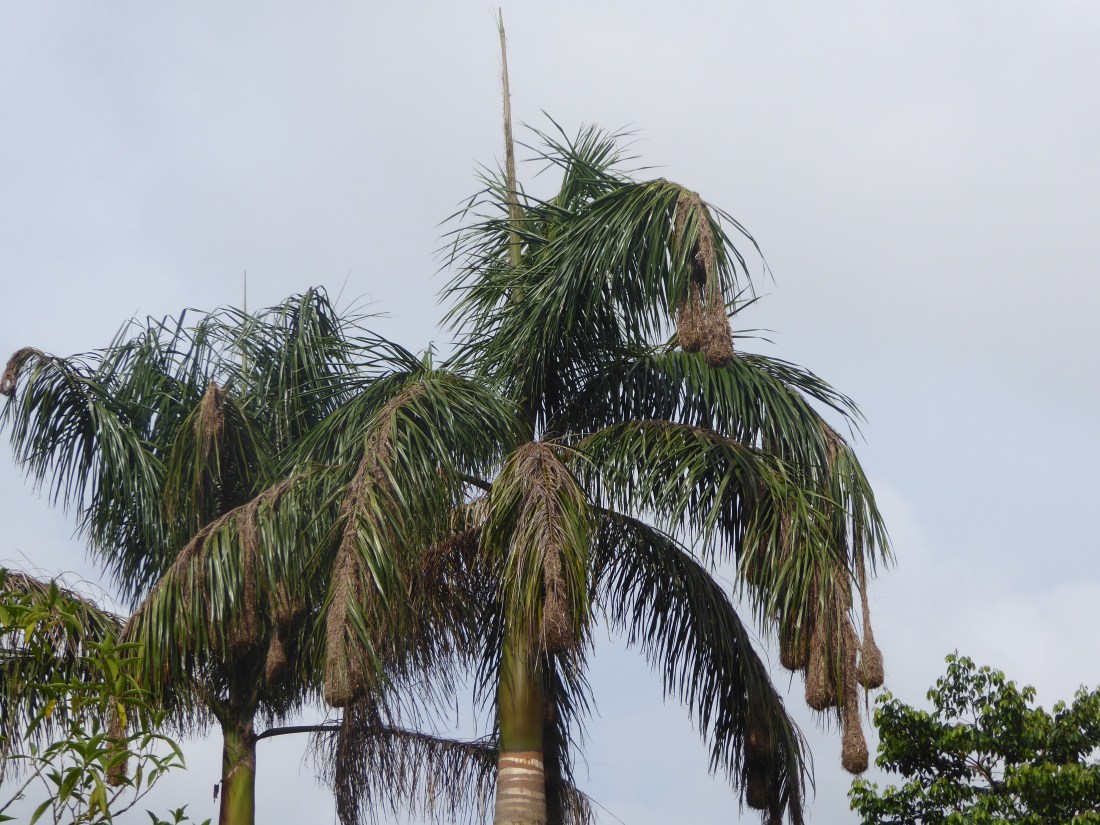
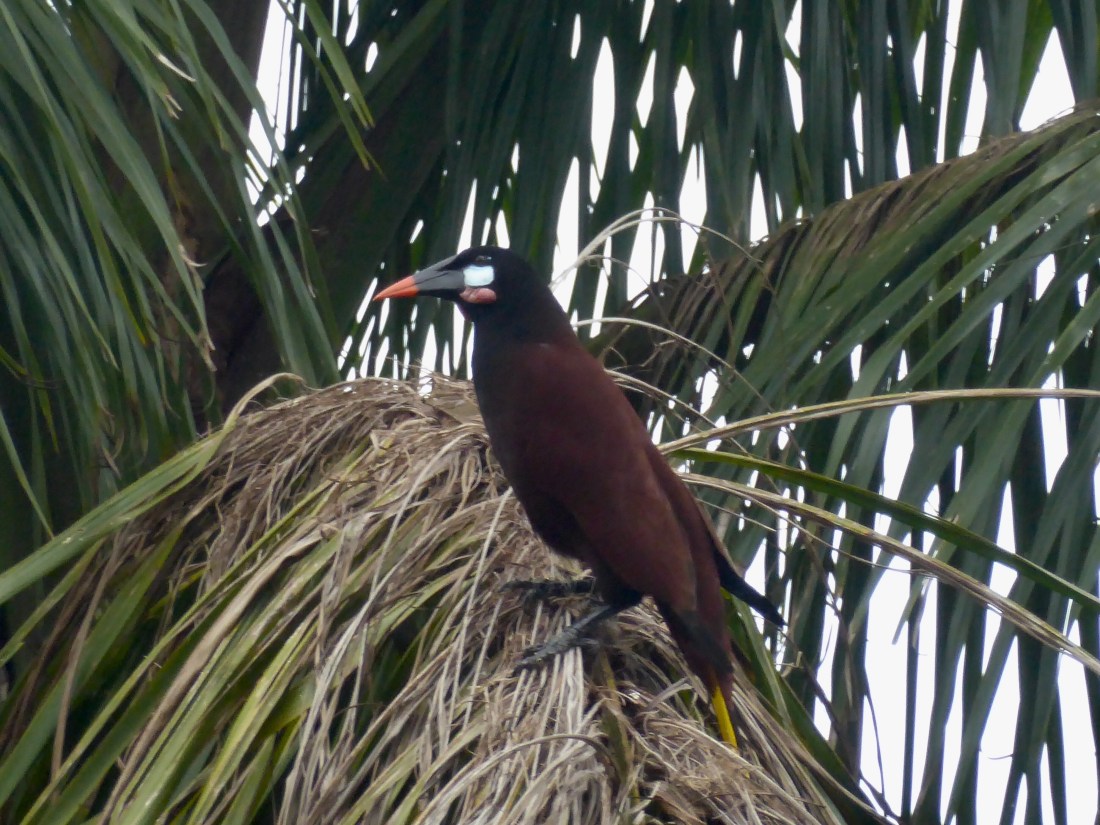
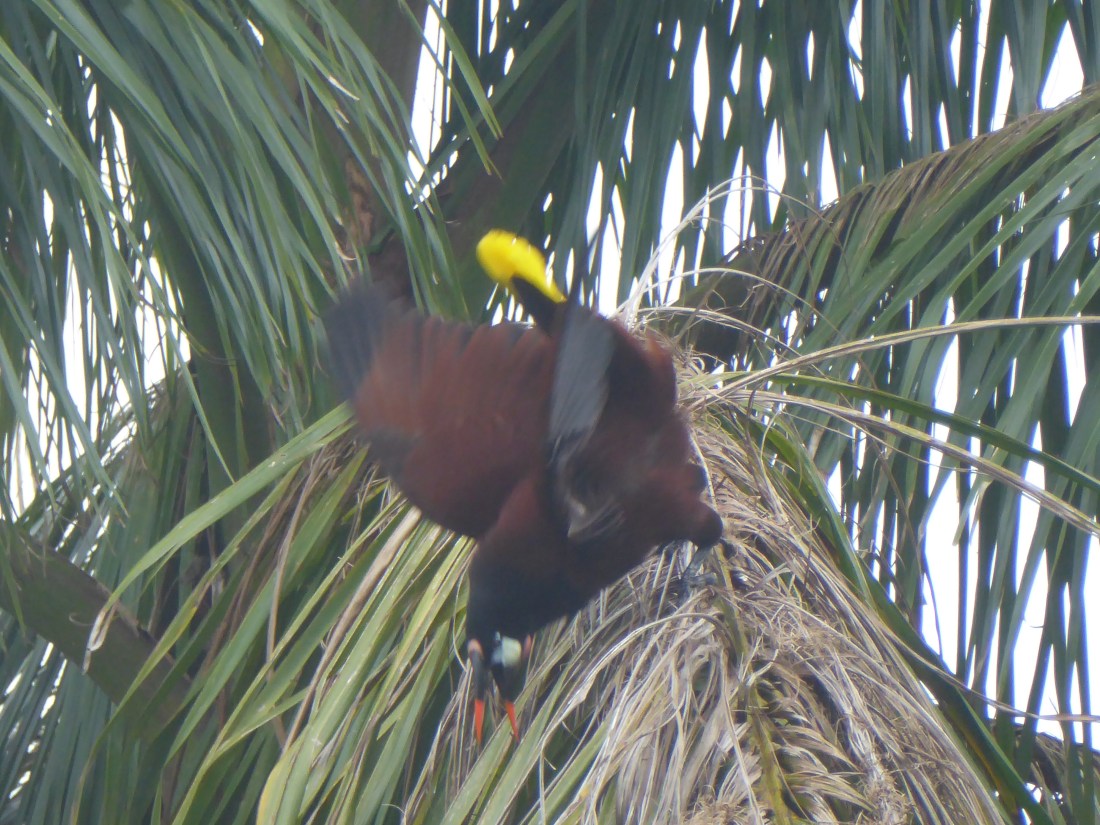
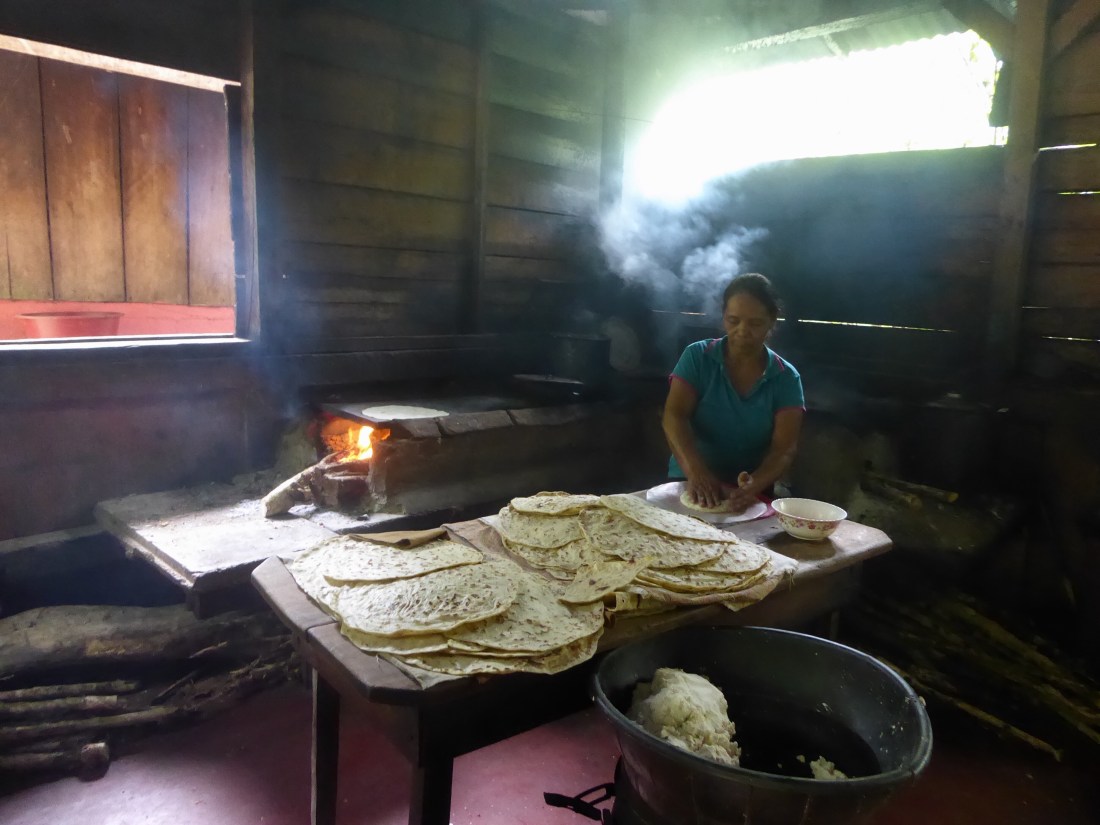

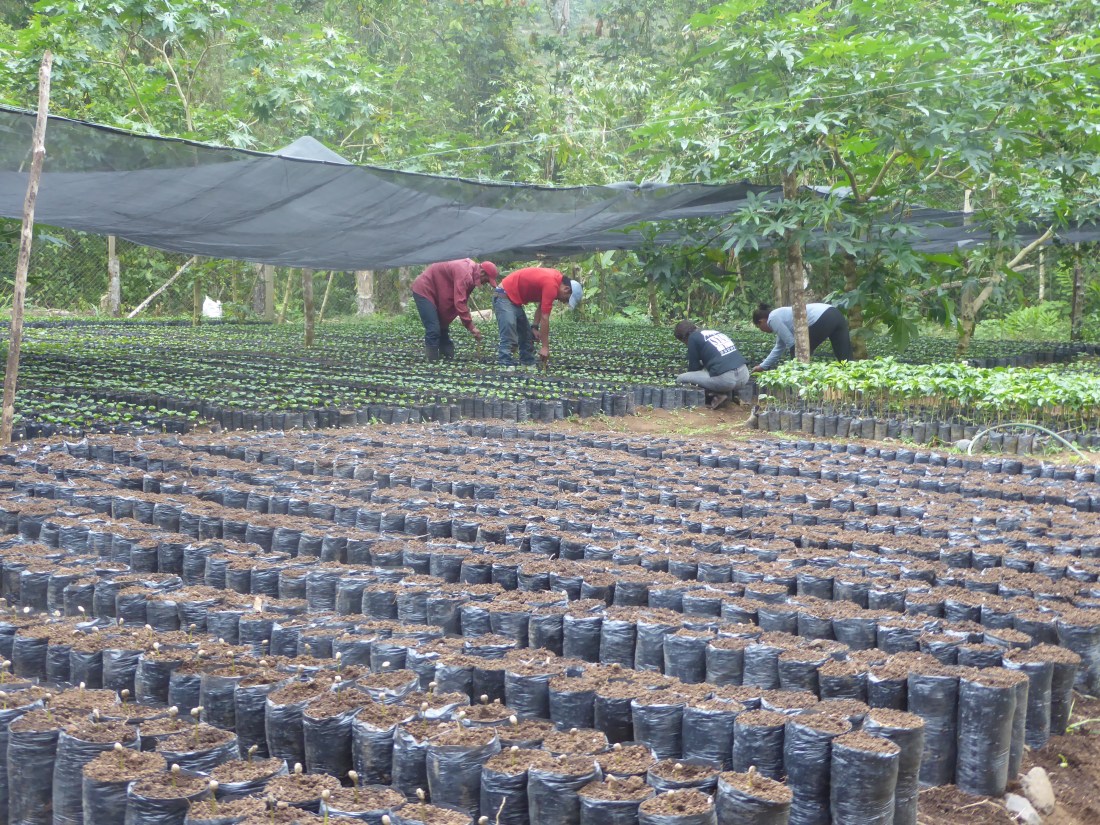

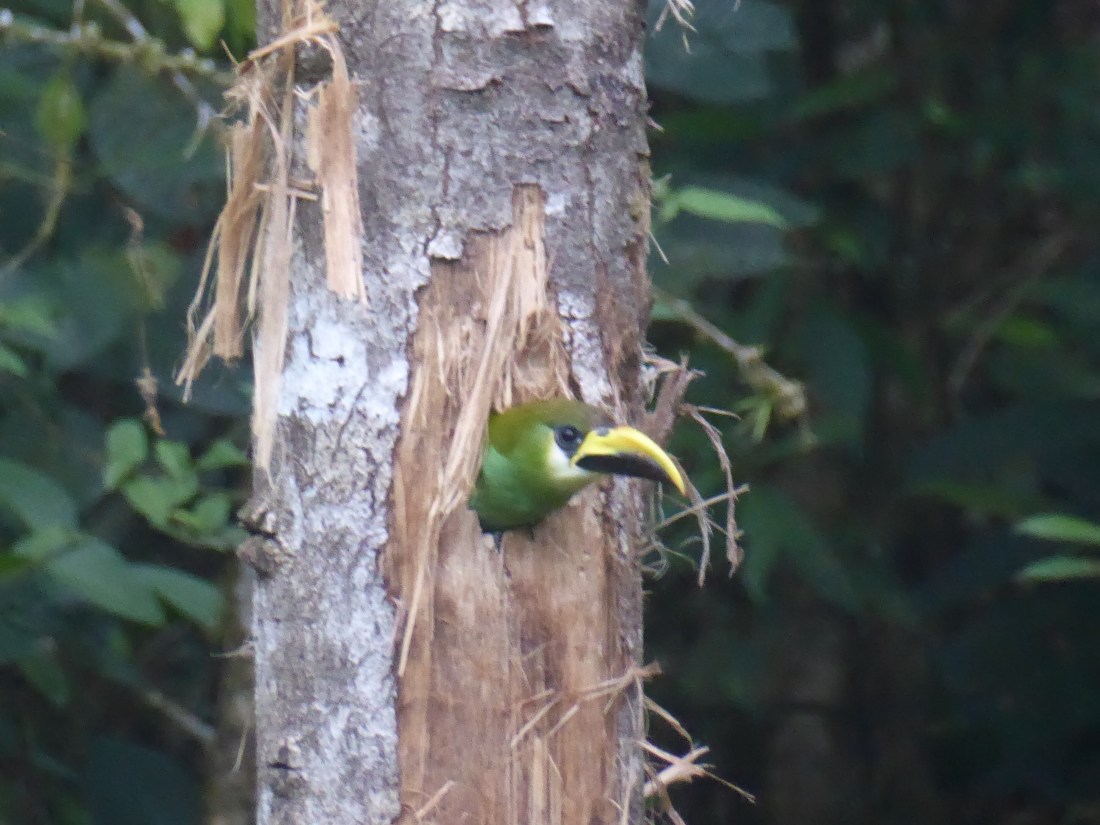

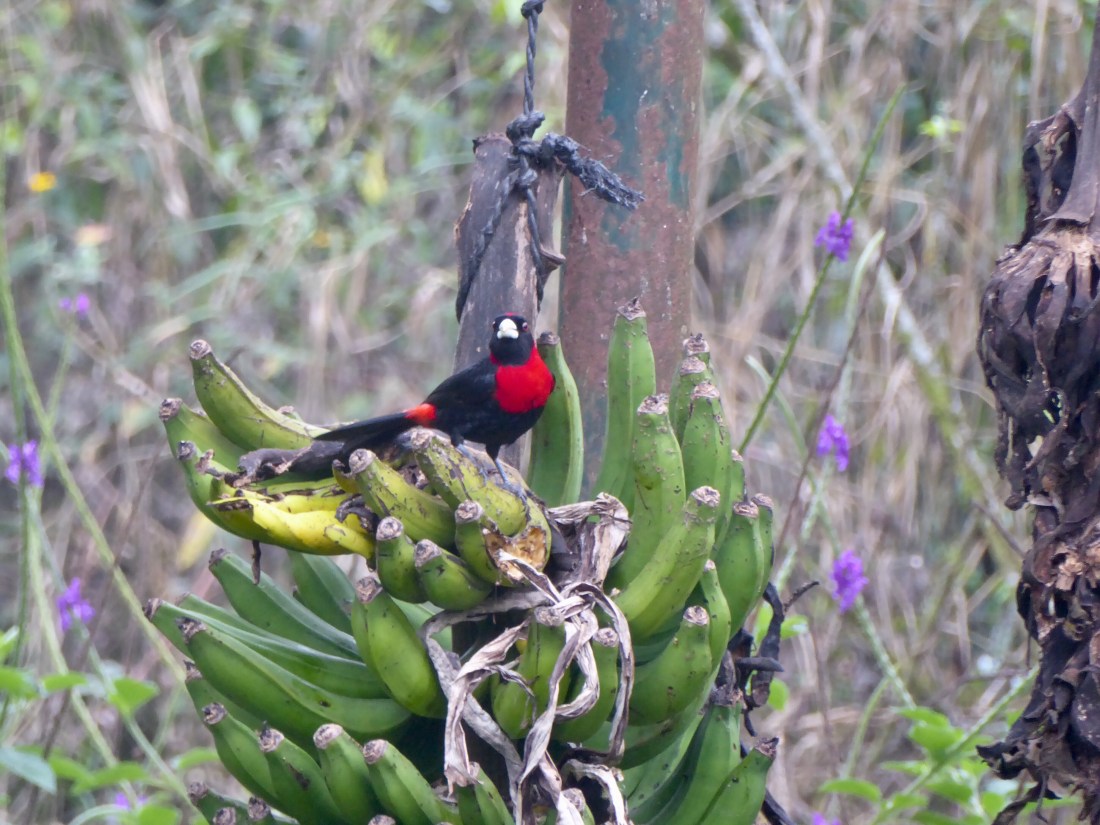

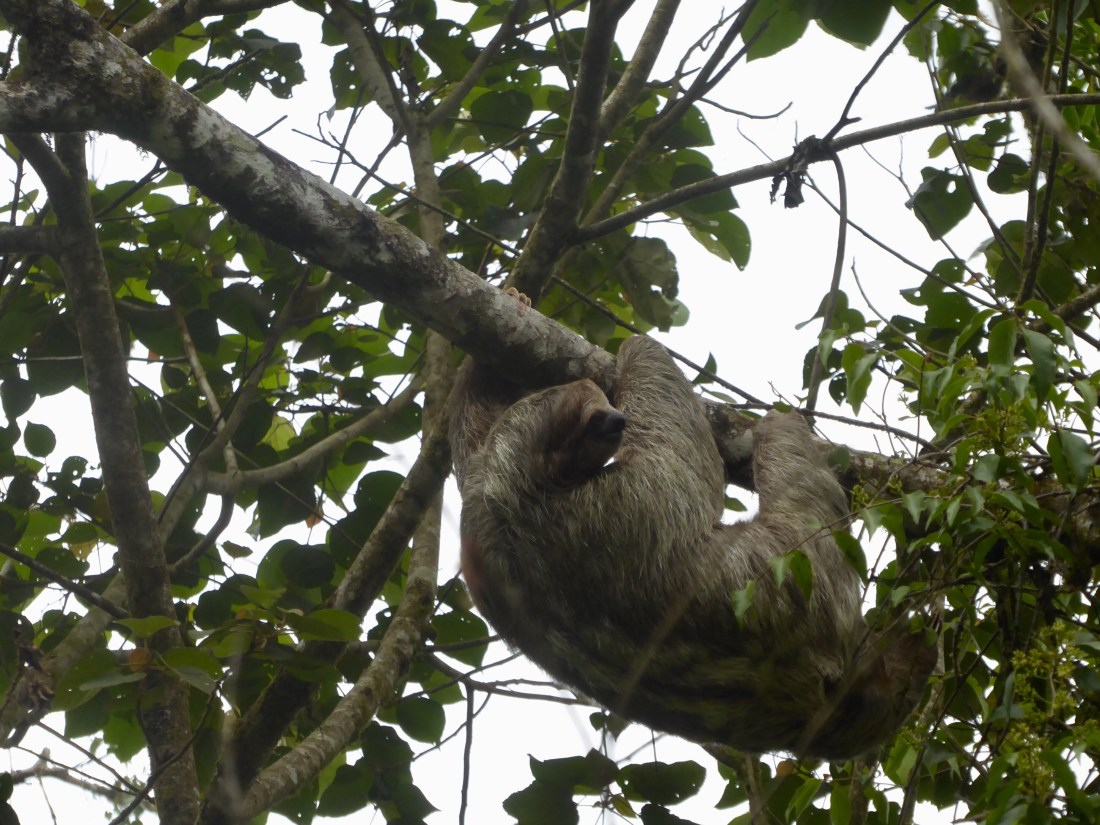
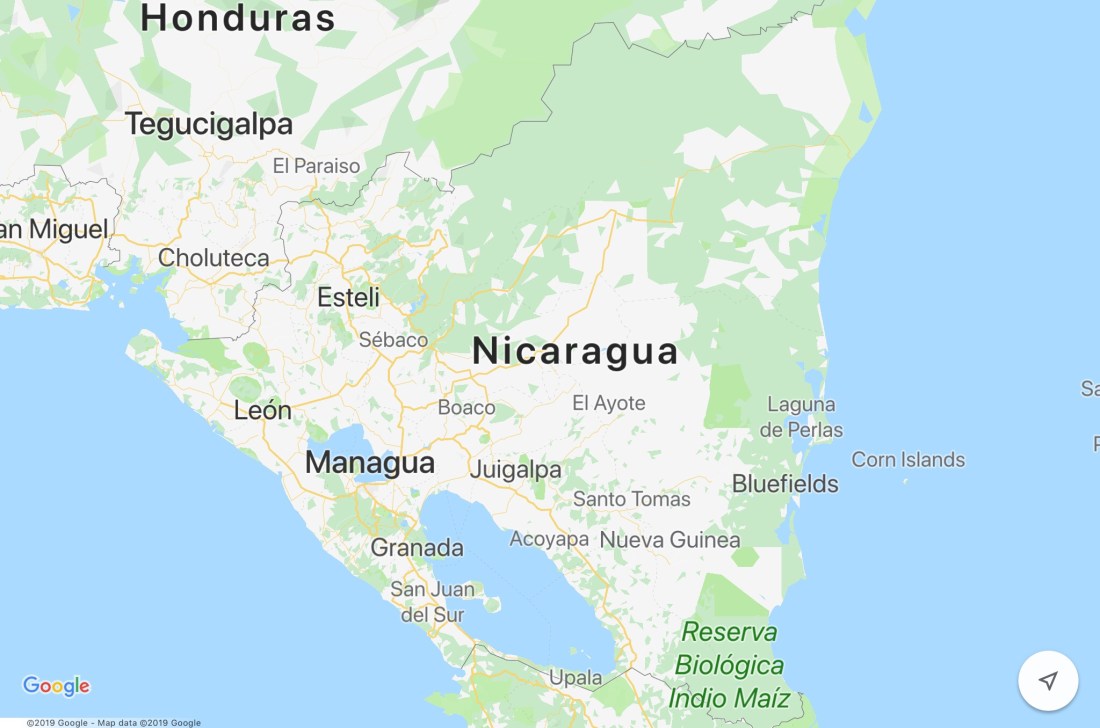
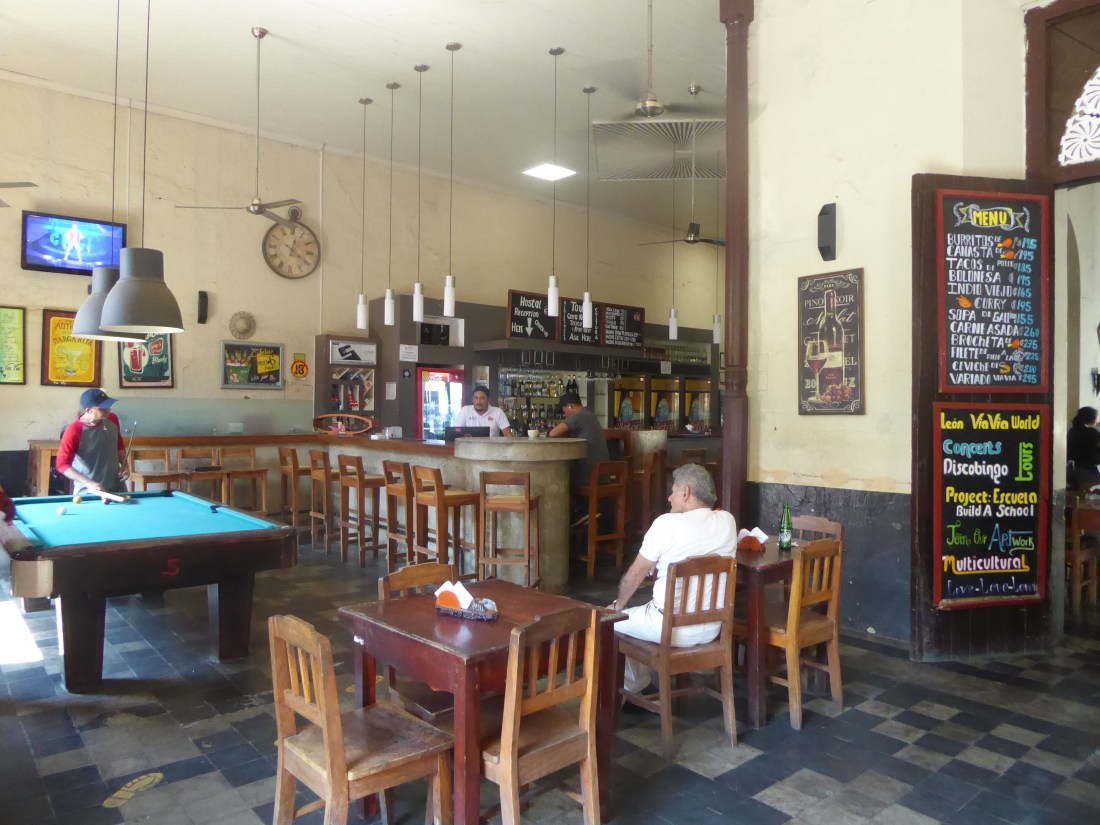
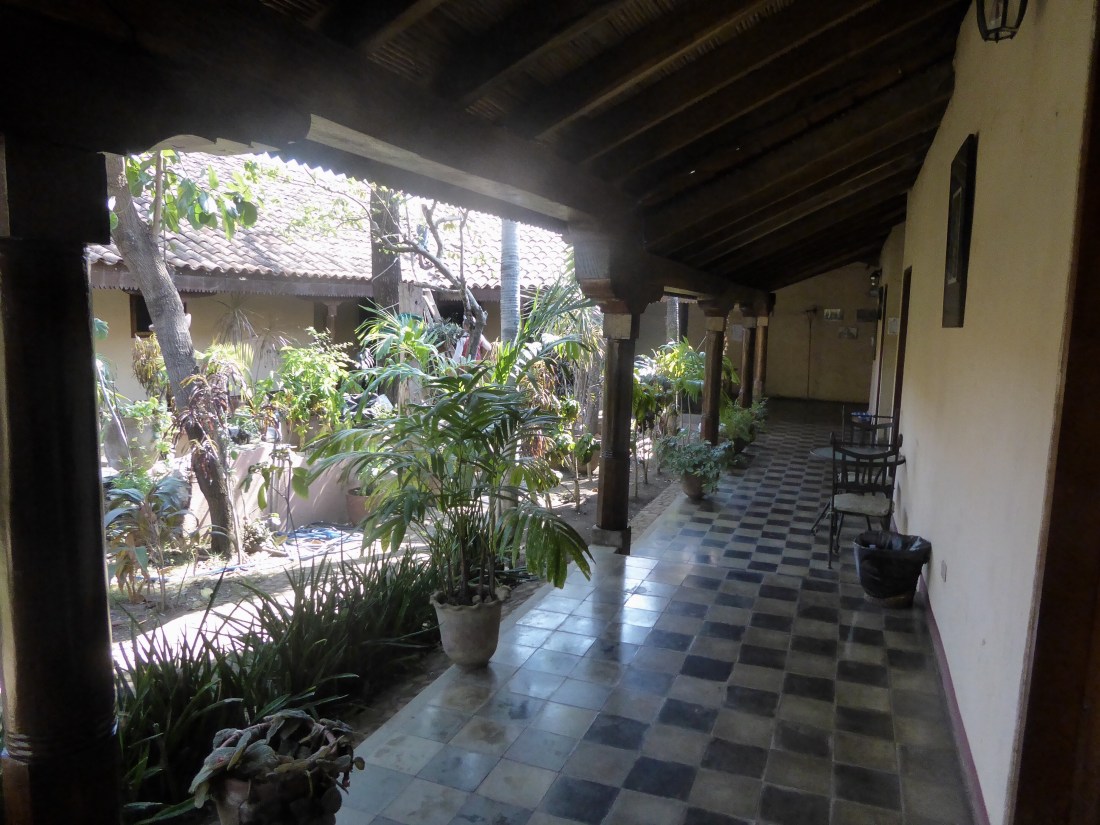


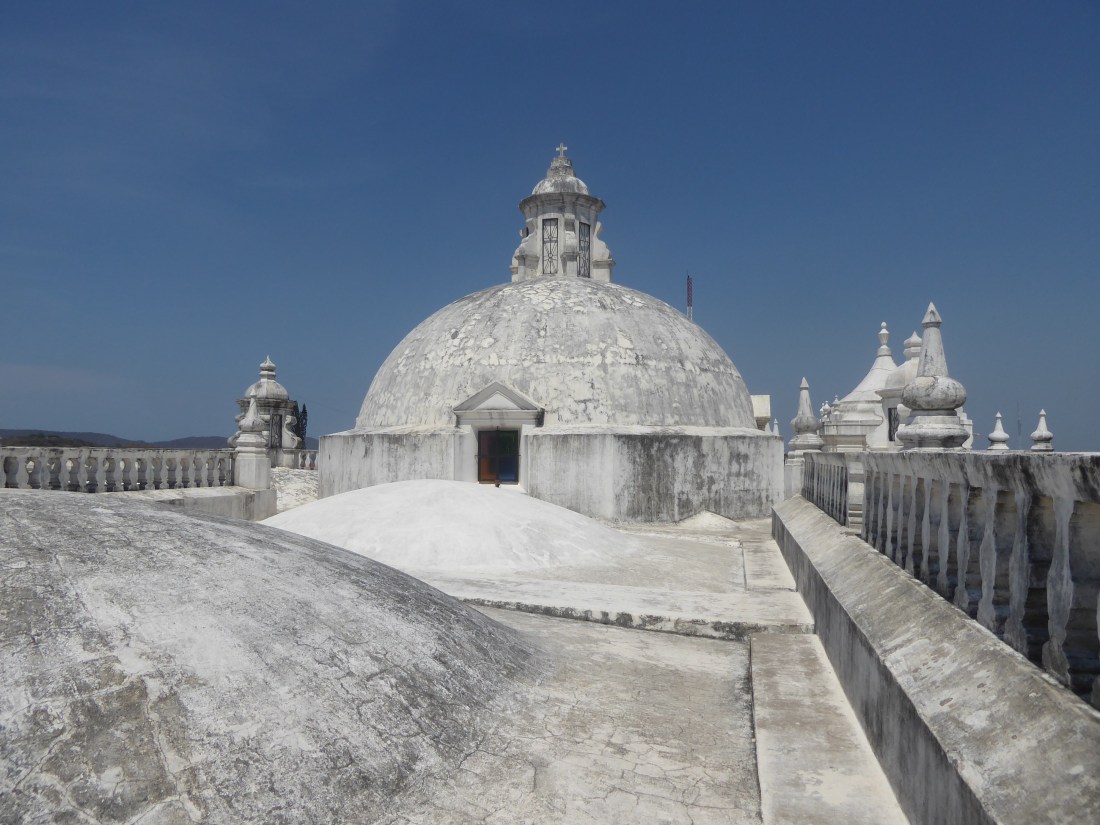

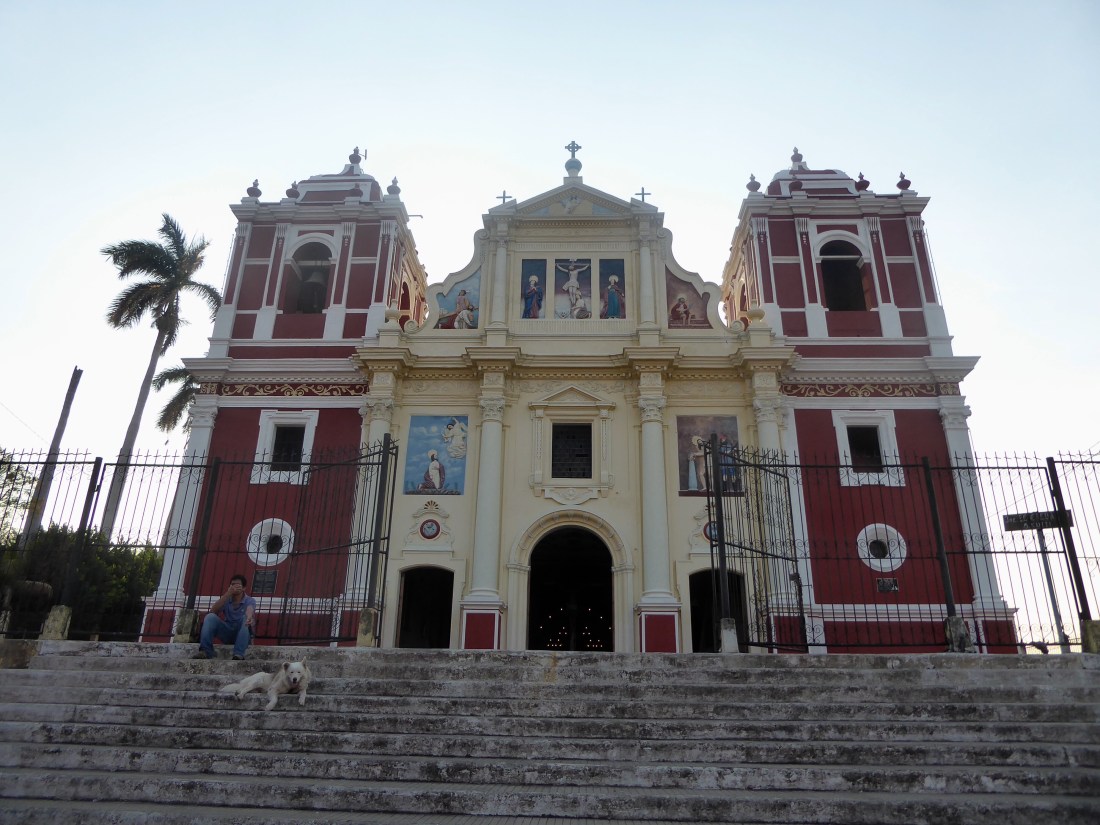
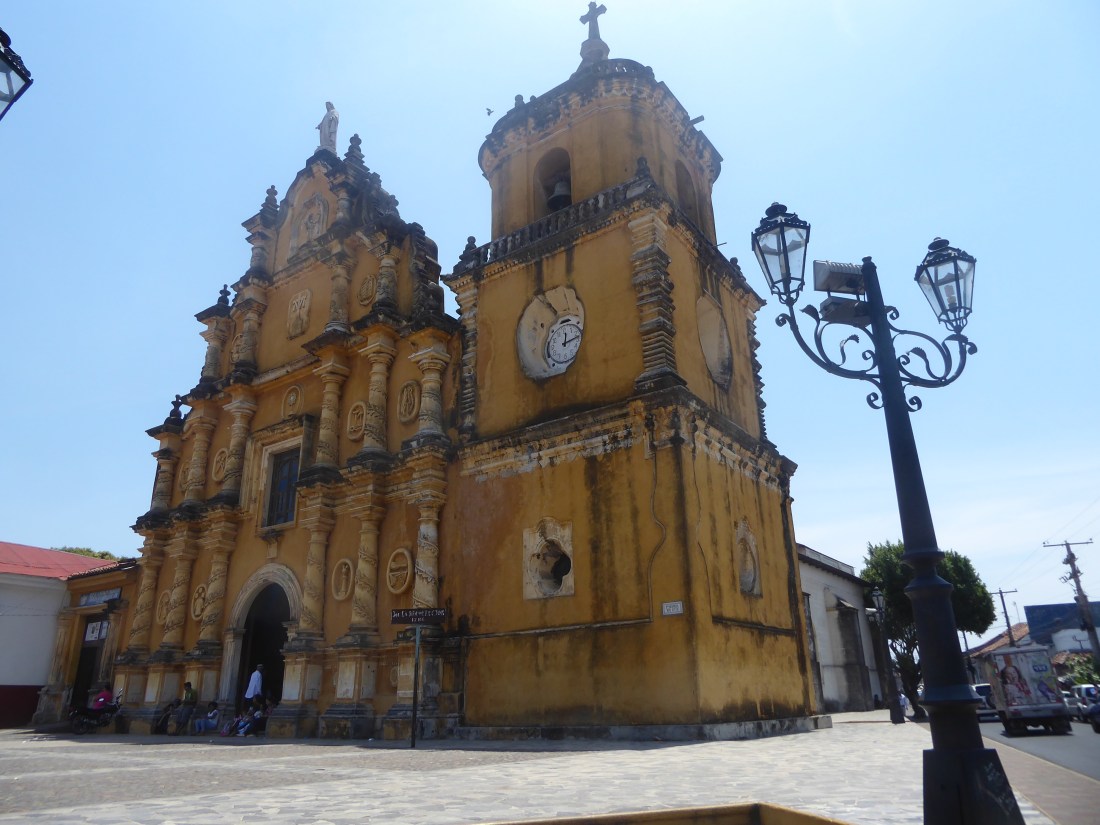


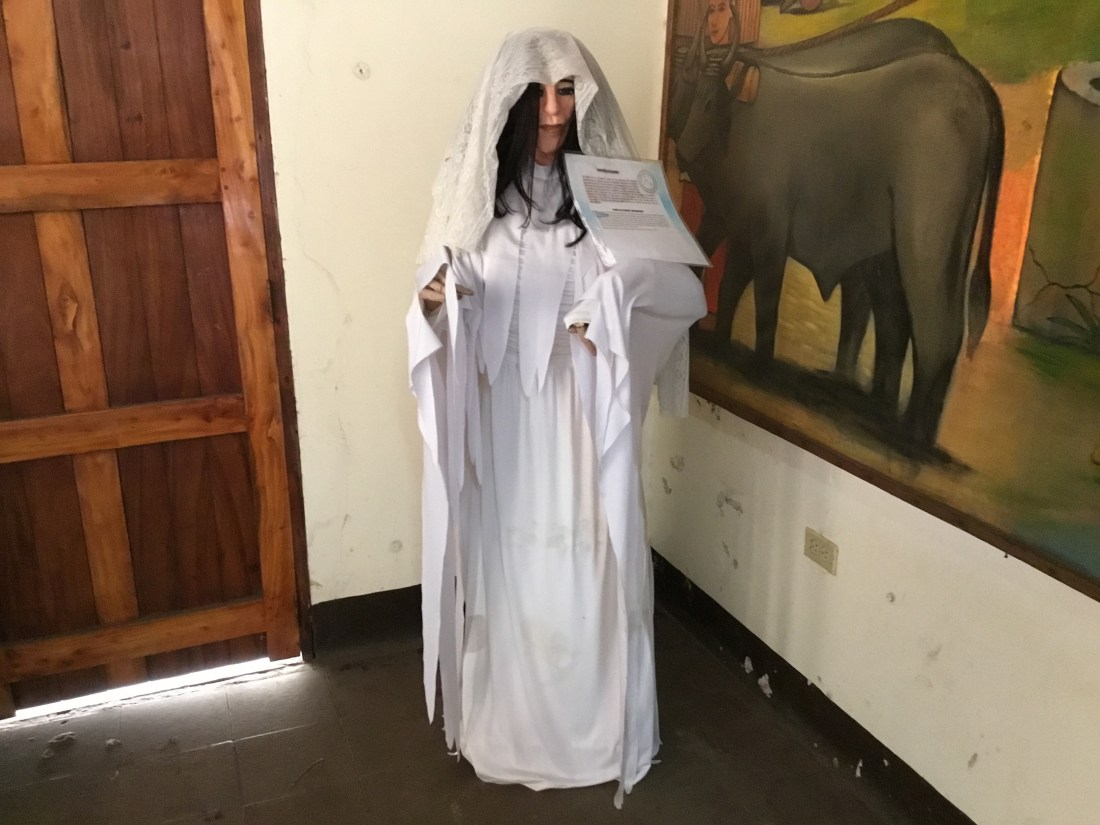



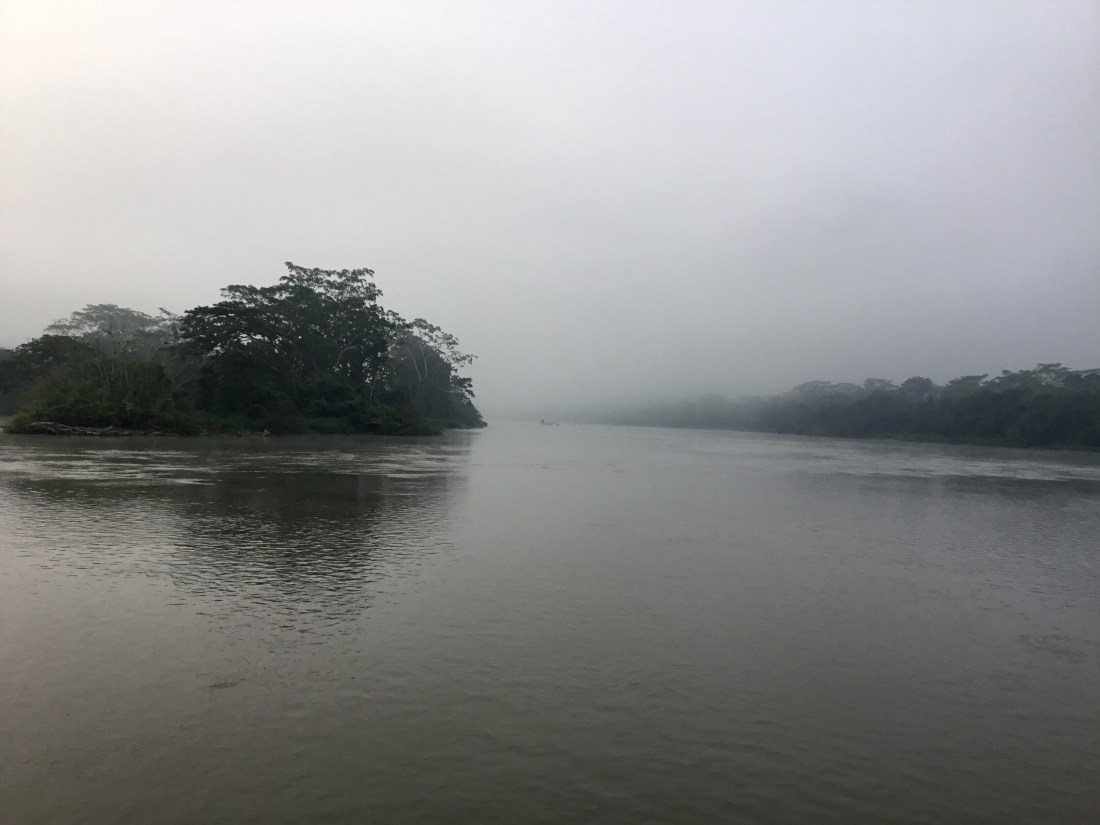

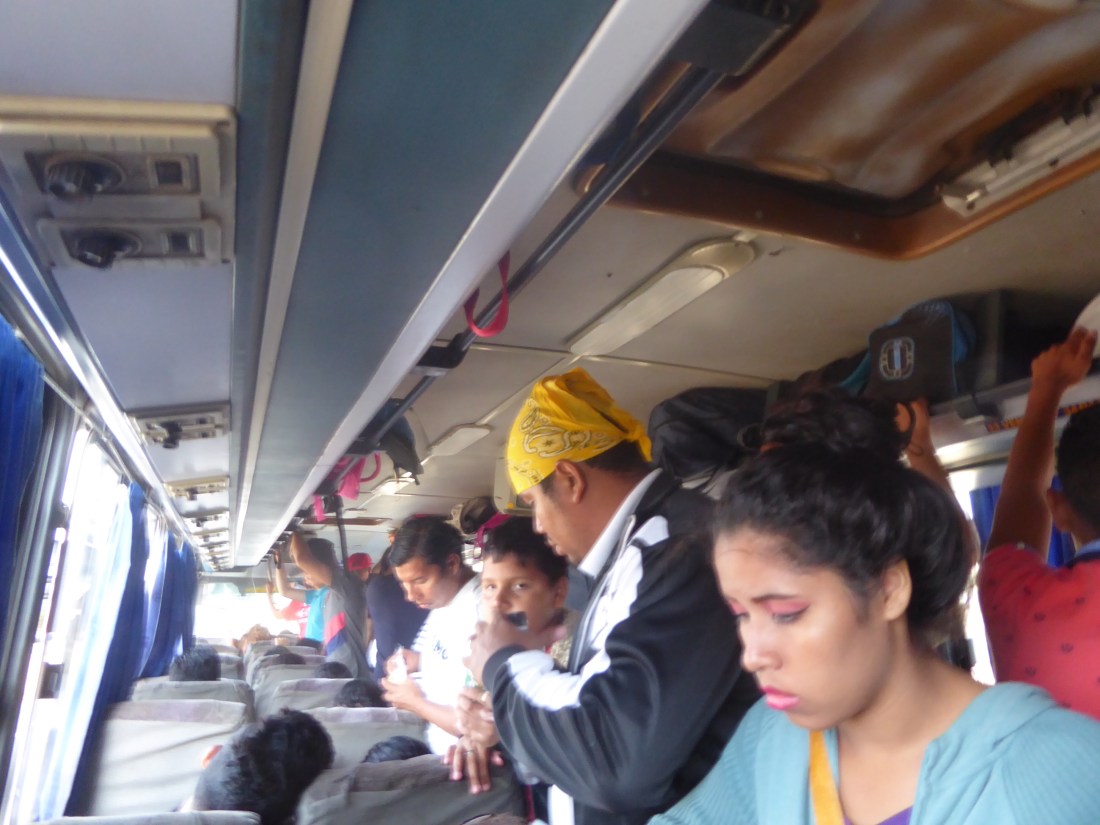

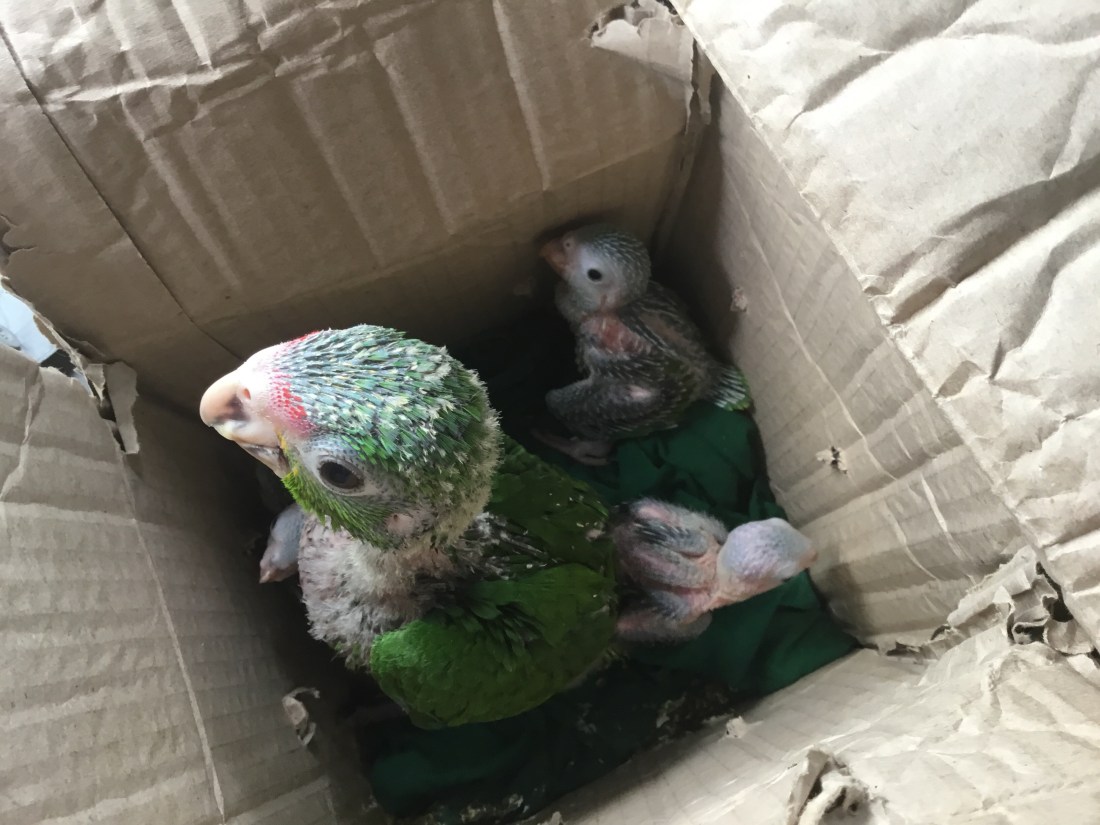
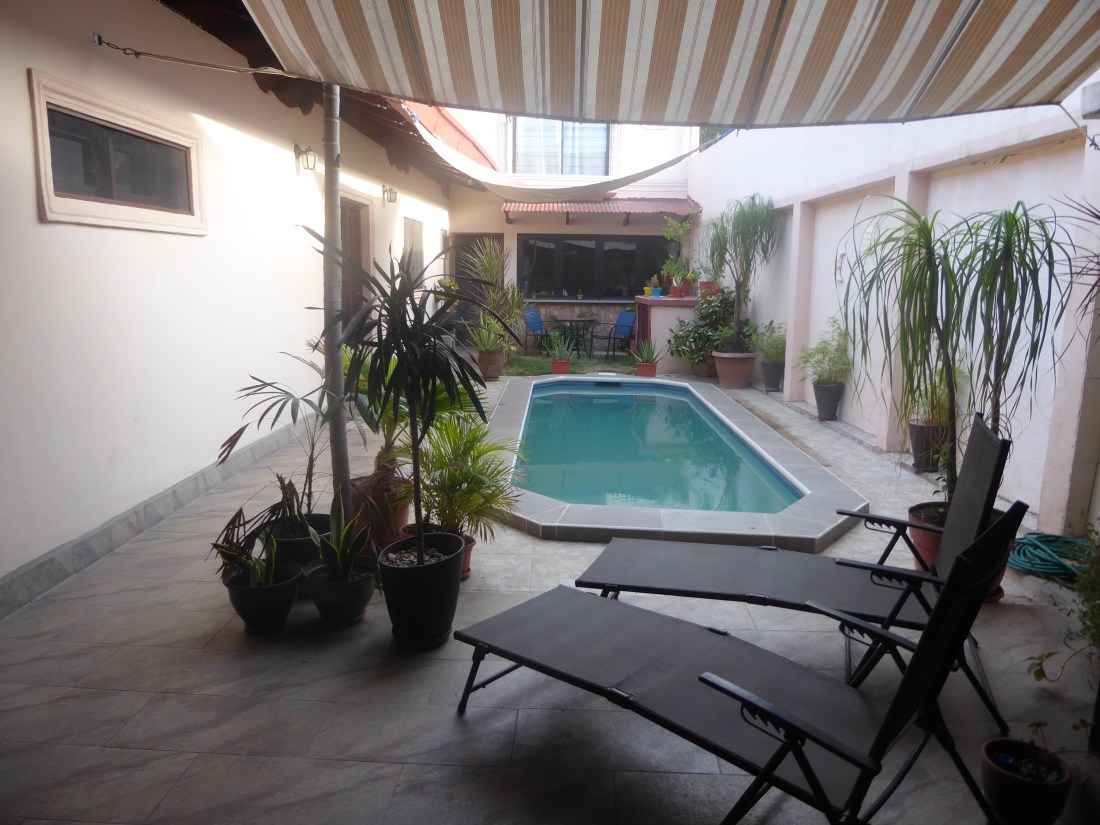
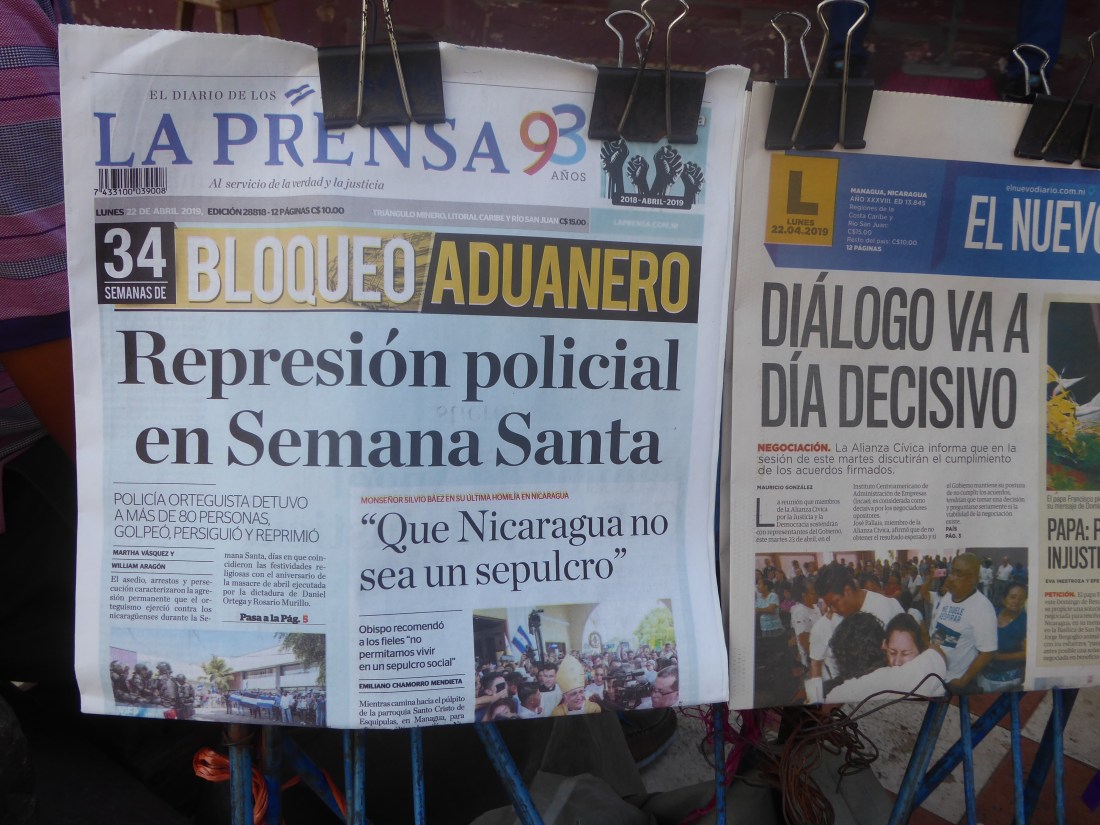

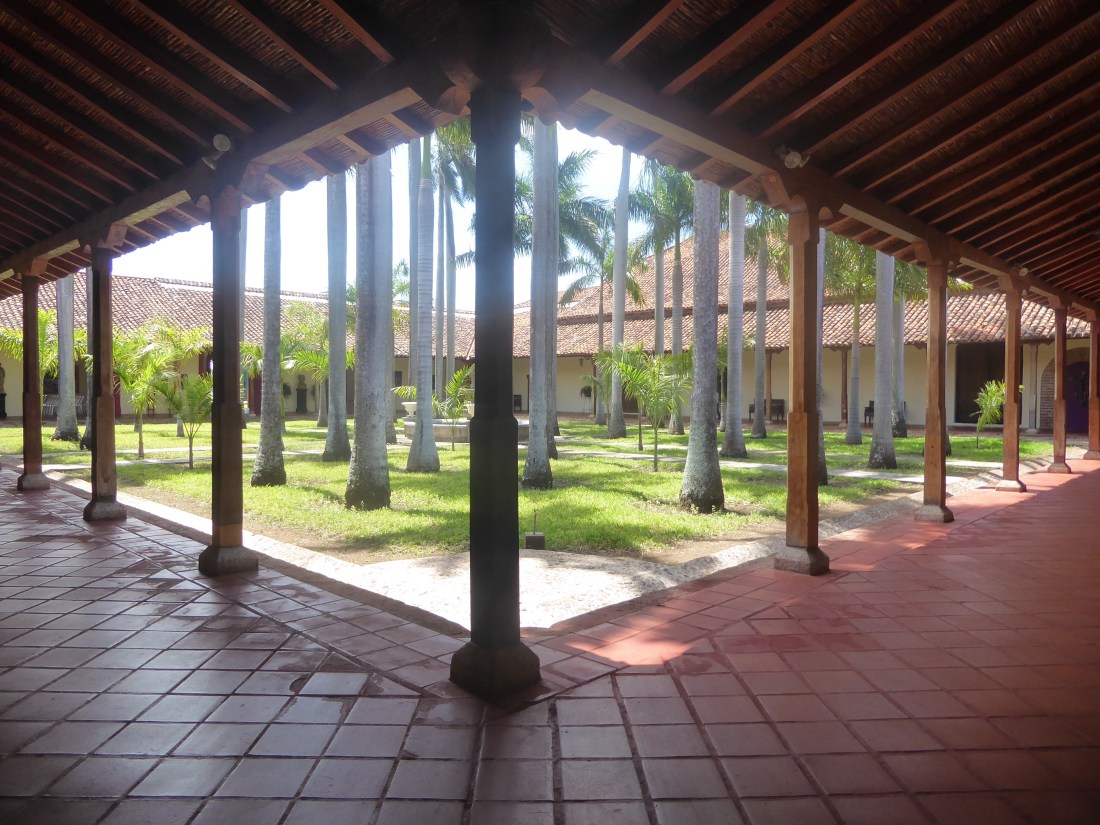

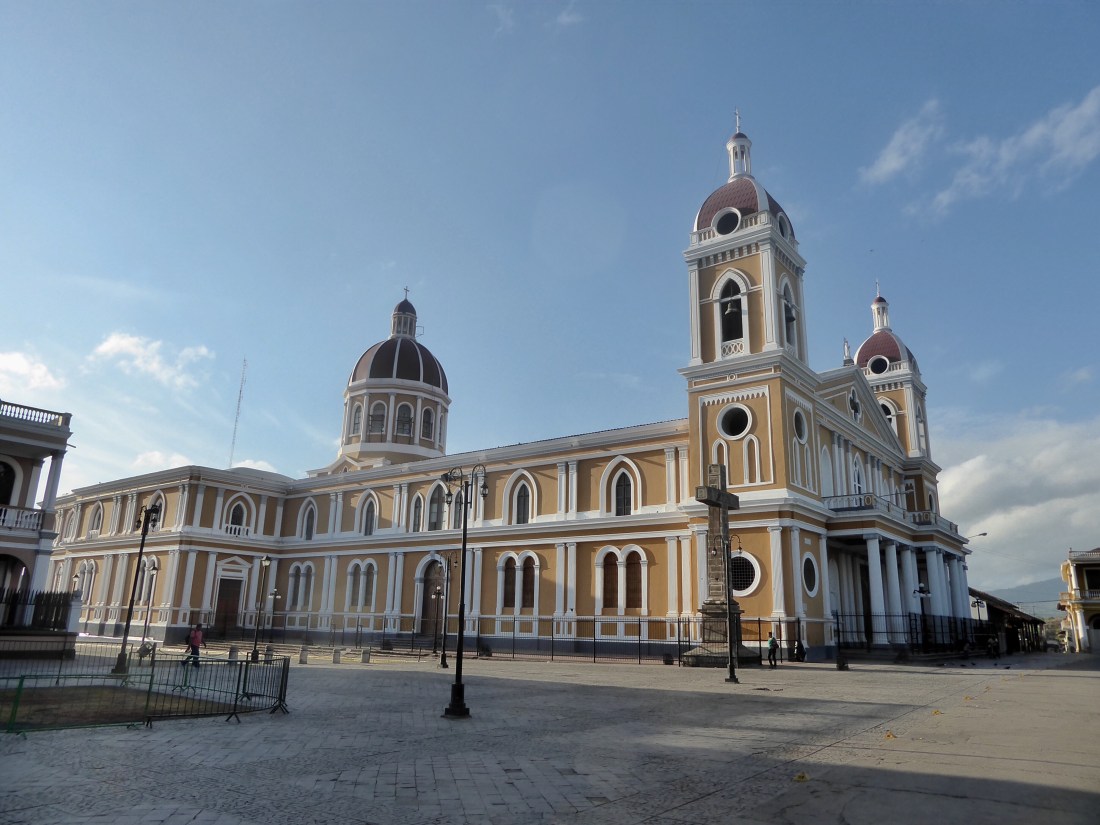

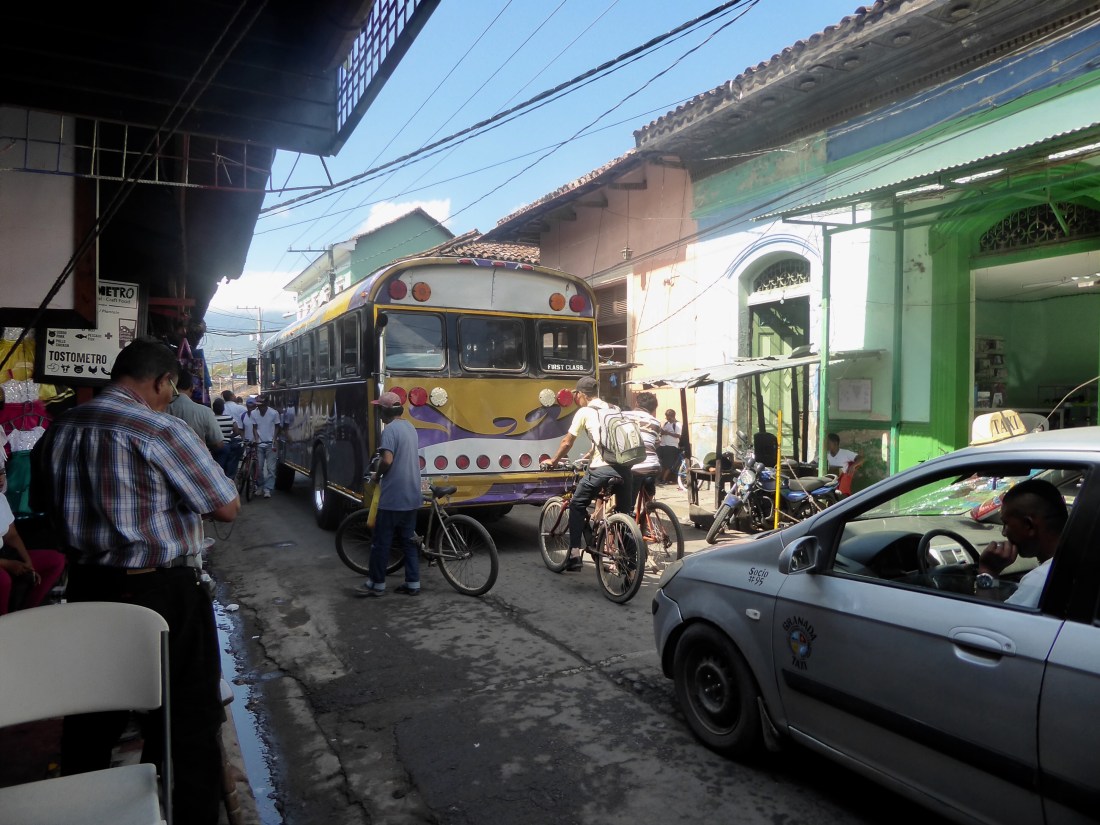


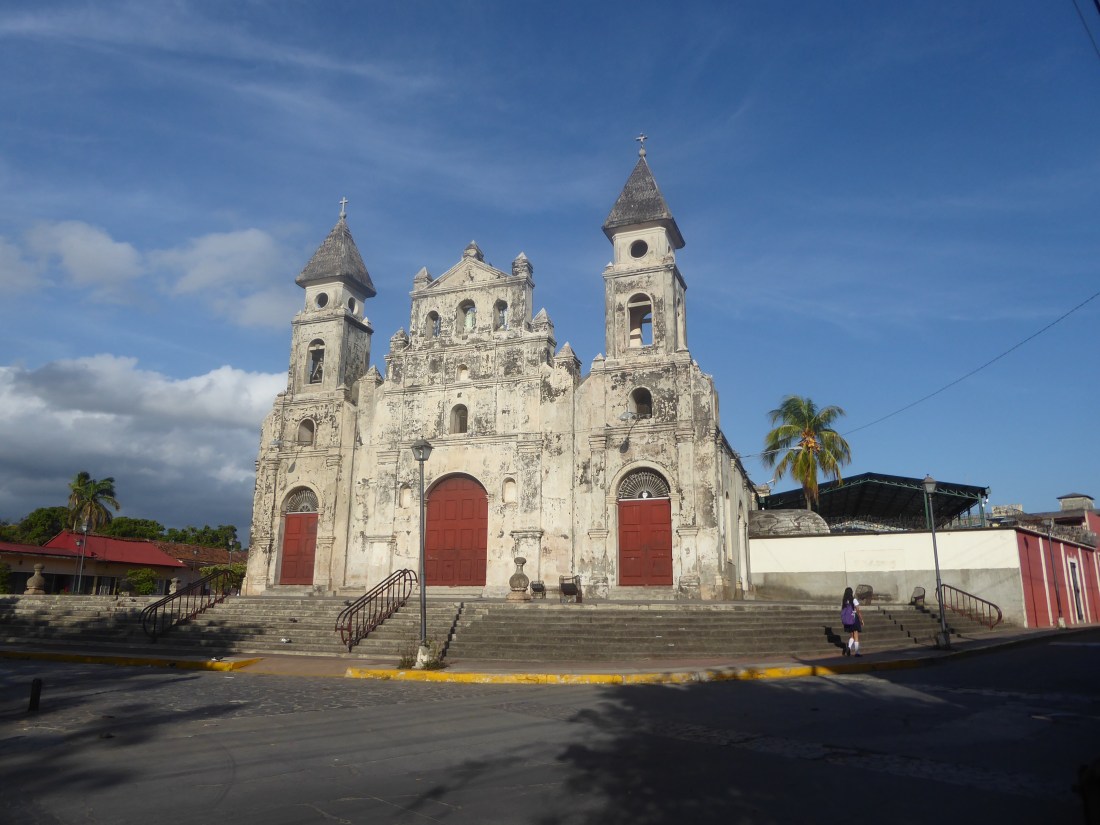
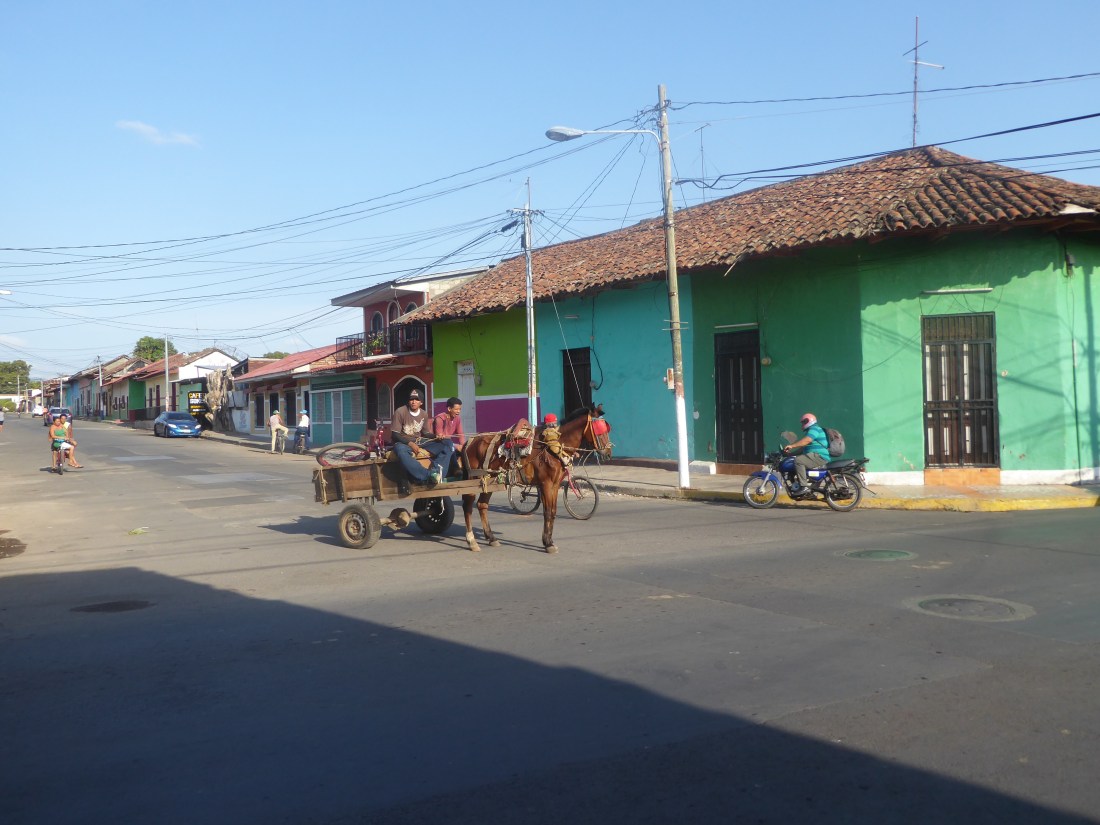



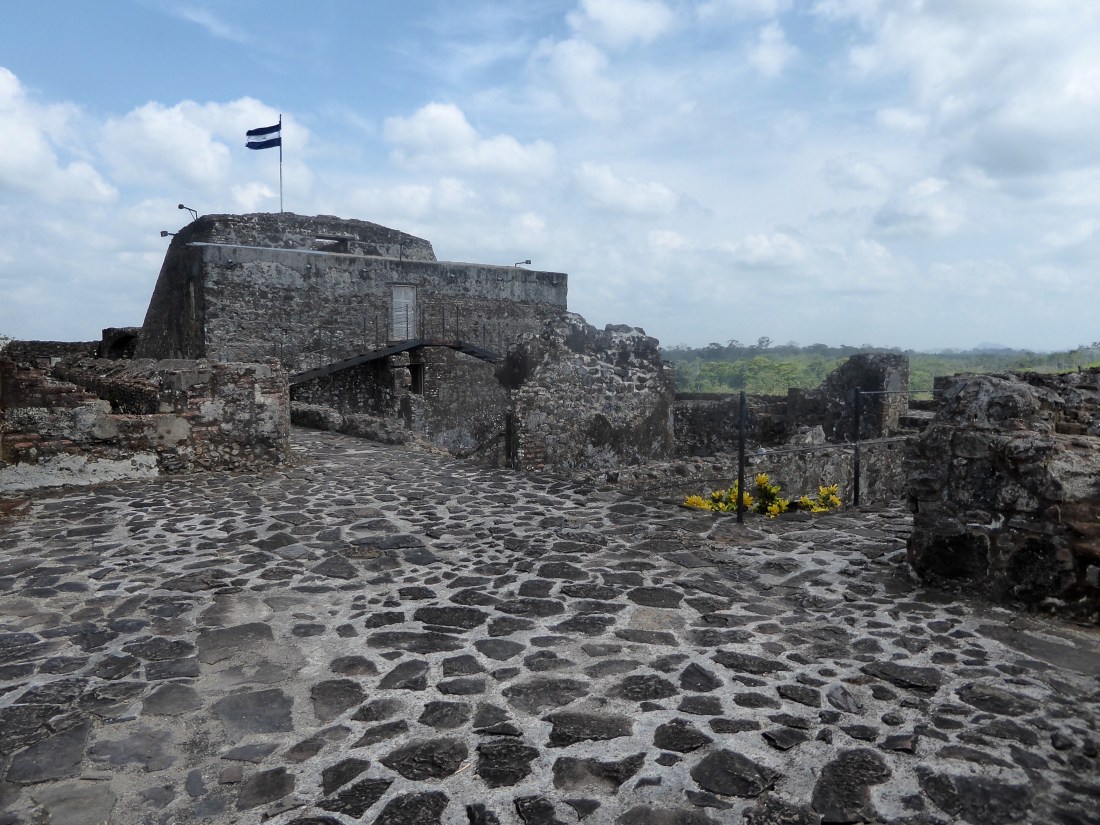 Above: the fort. It has an on-site museum.
Above: the fort. It has an on-site museum. 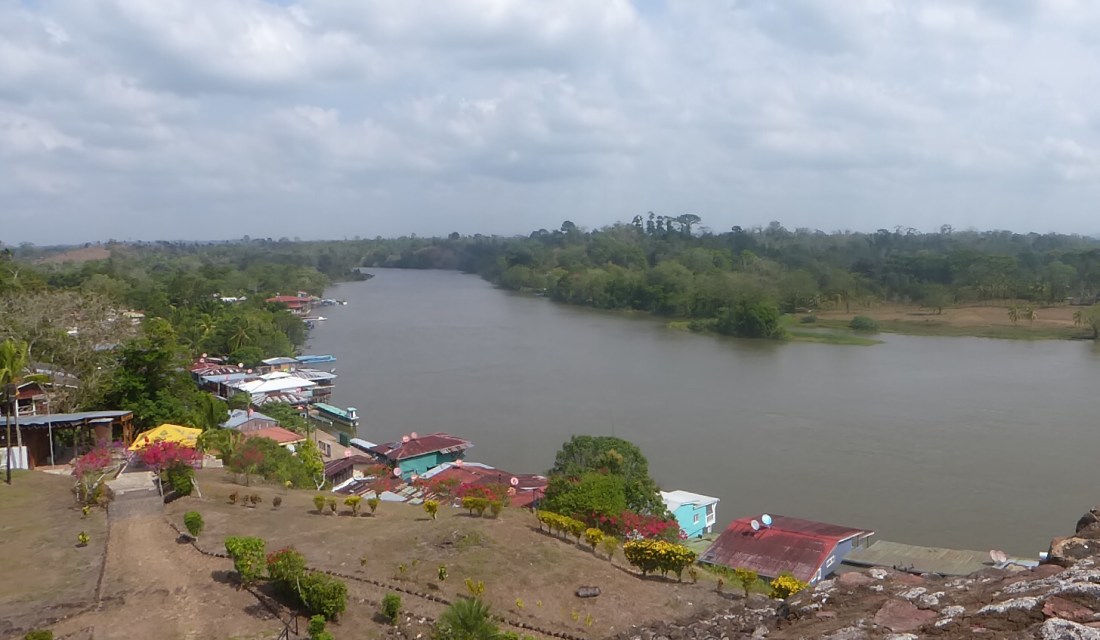
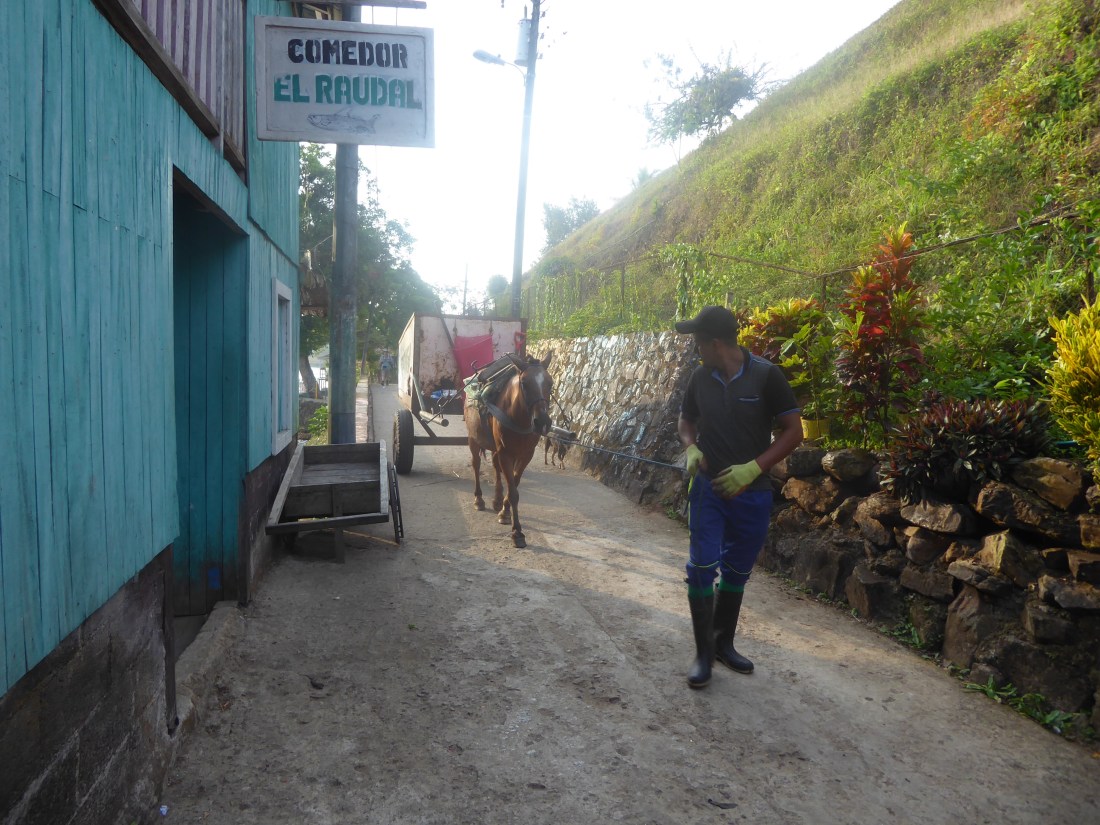
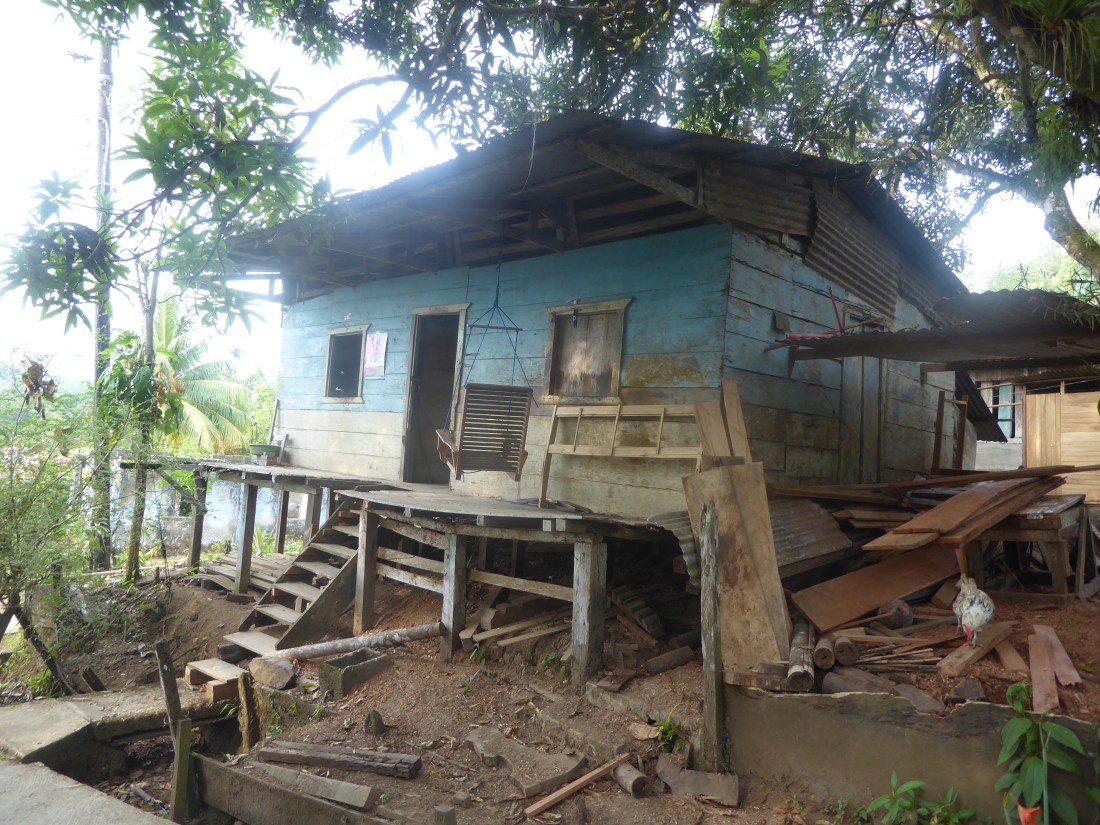

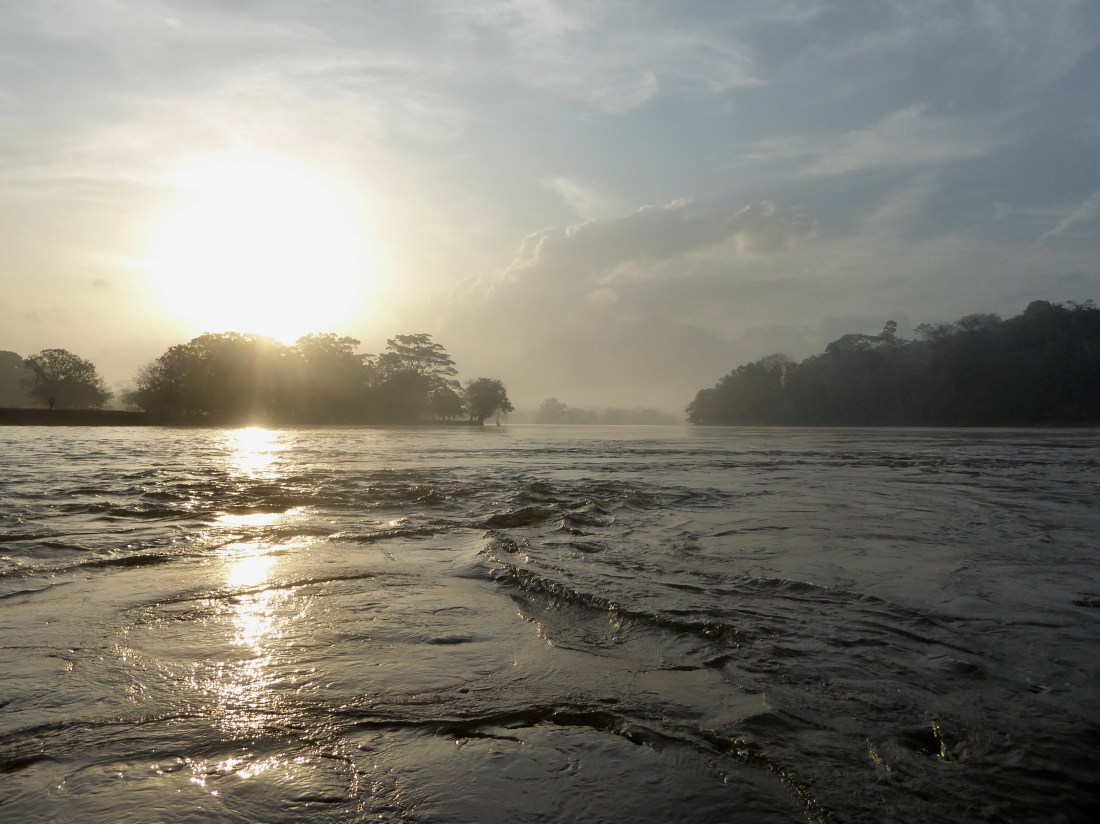 Above: early morning with Juan on the San Juan River.
Above: early morning with Juan on the San Juan River.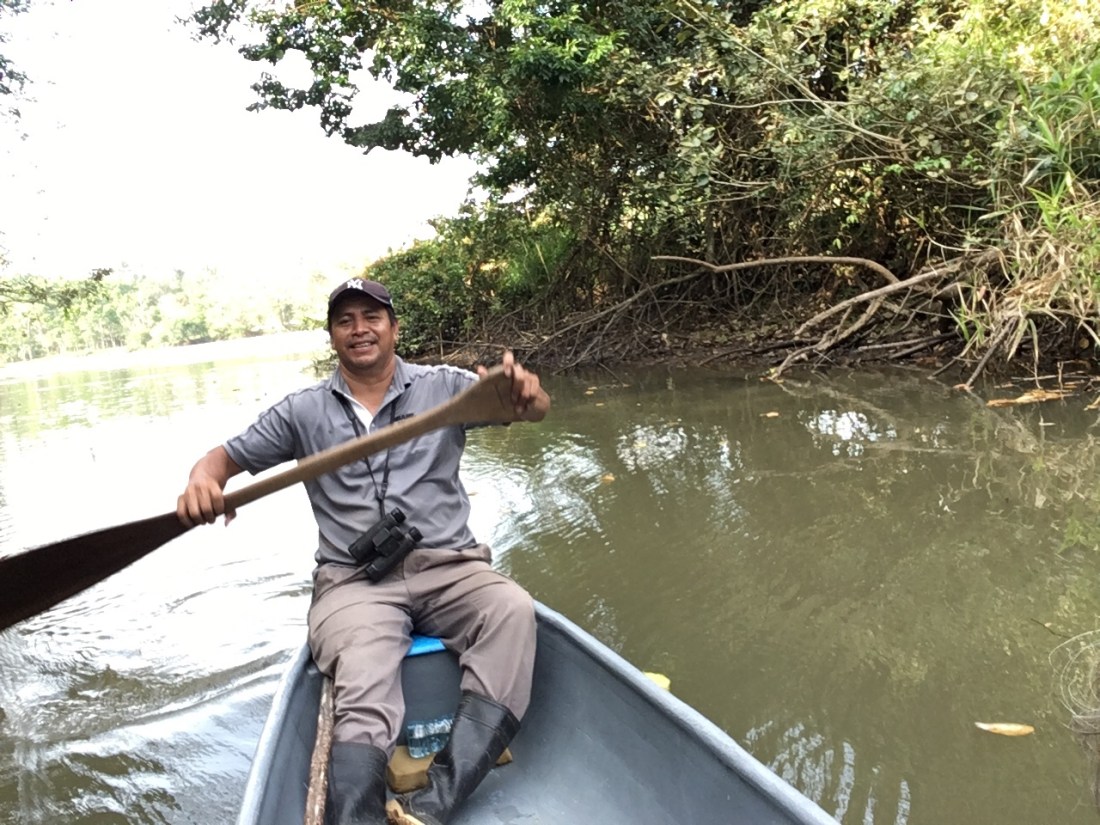
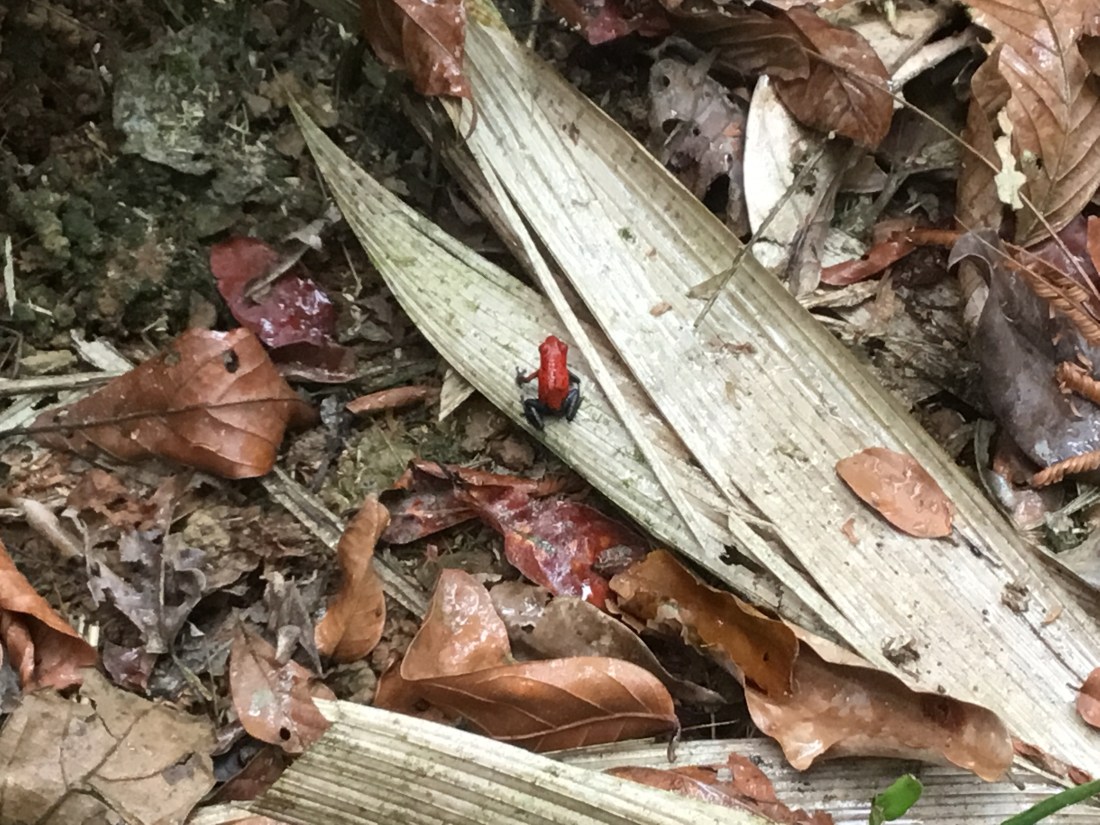
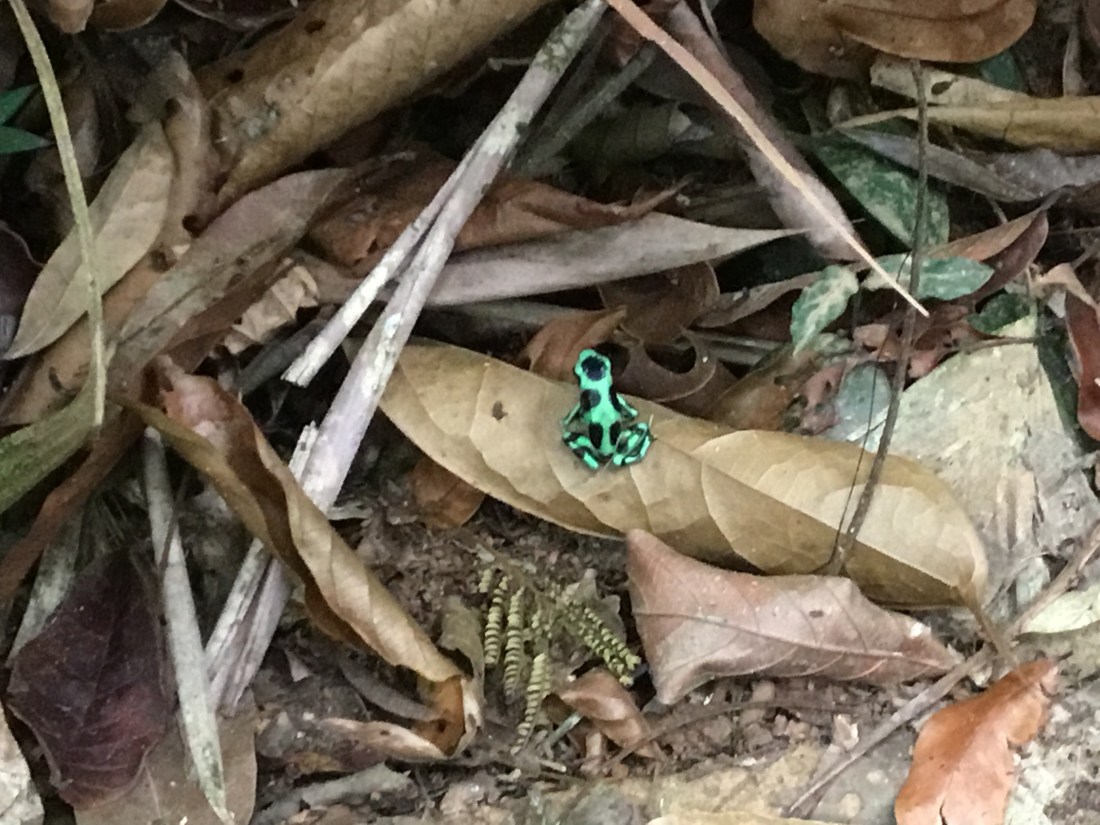

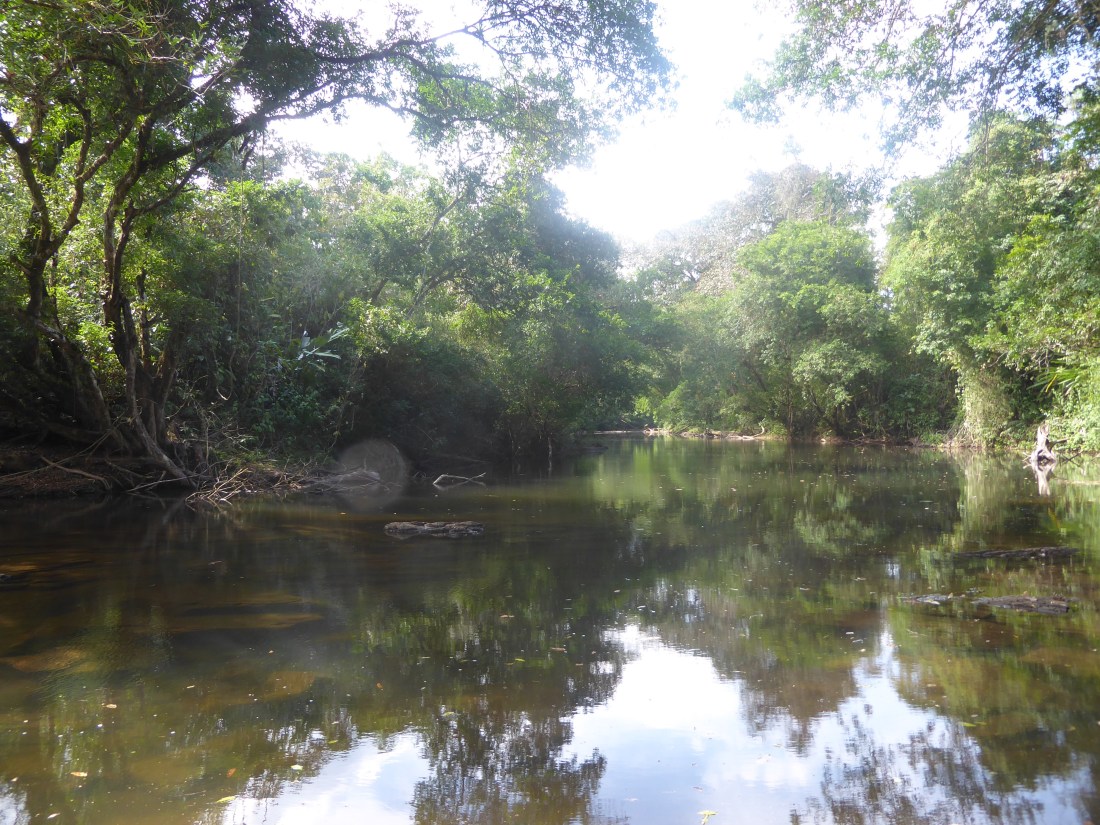 Above: river scene on the way to ‘base camp’.
Above: river scene on the way to ‘base camp’.

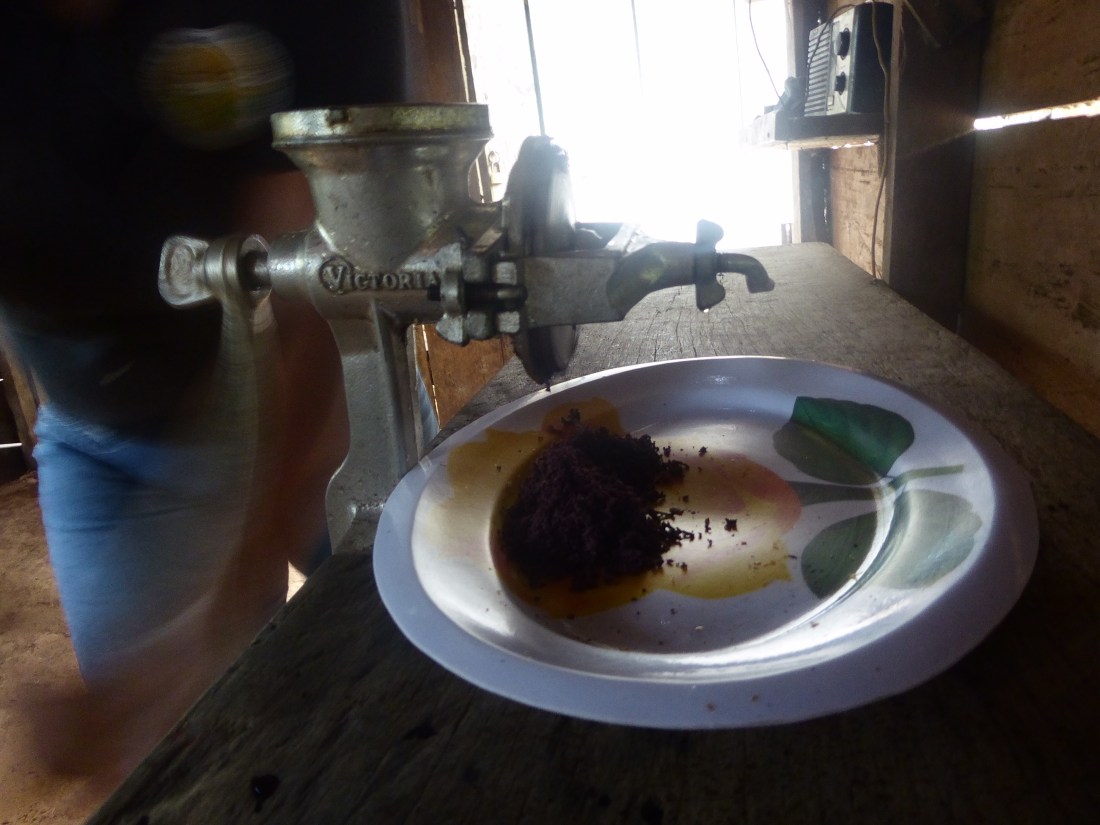


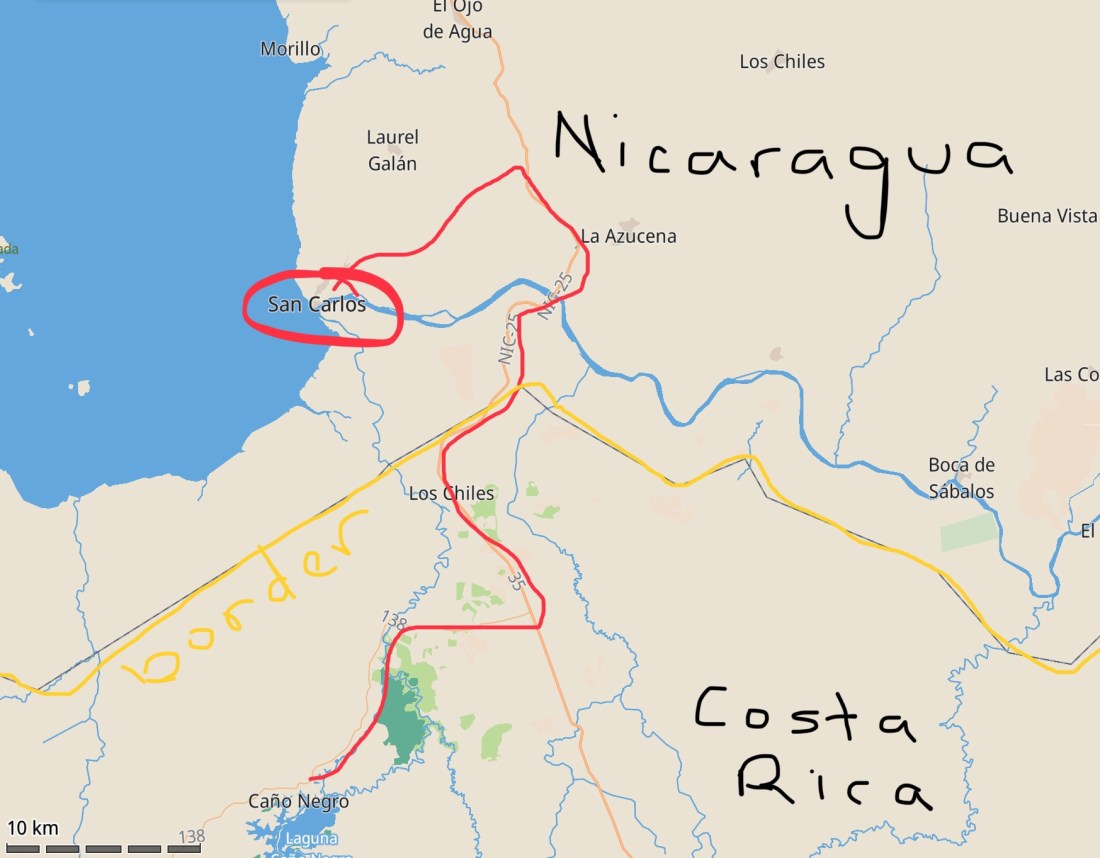
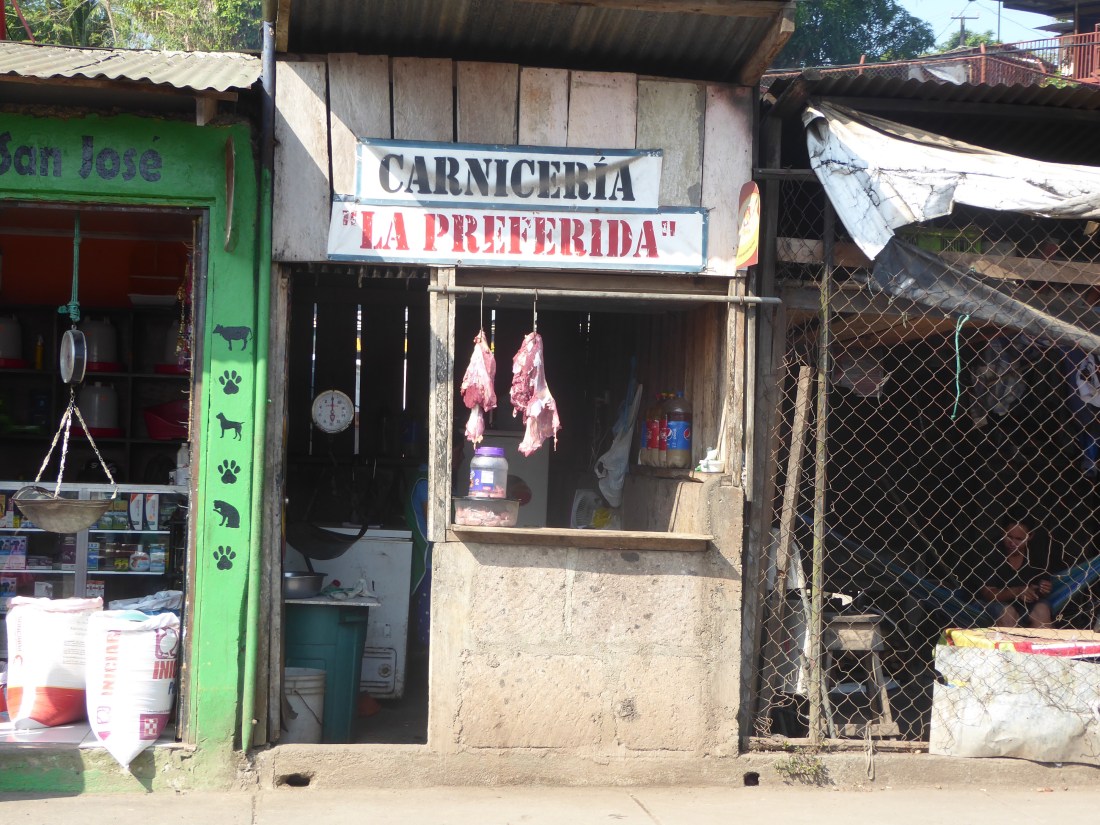


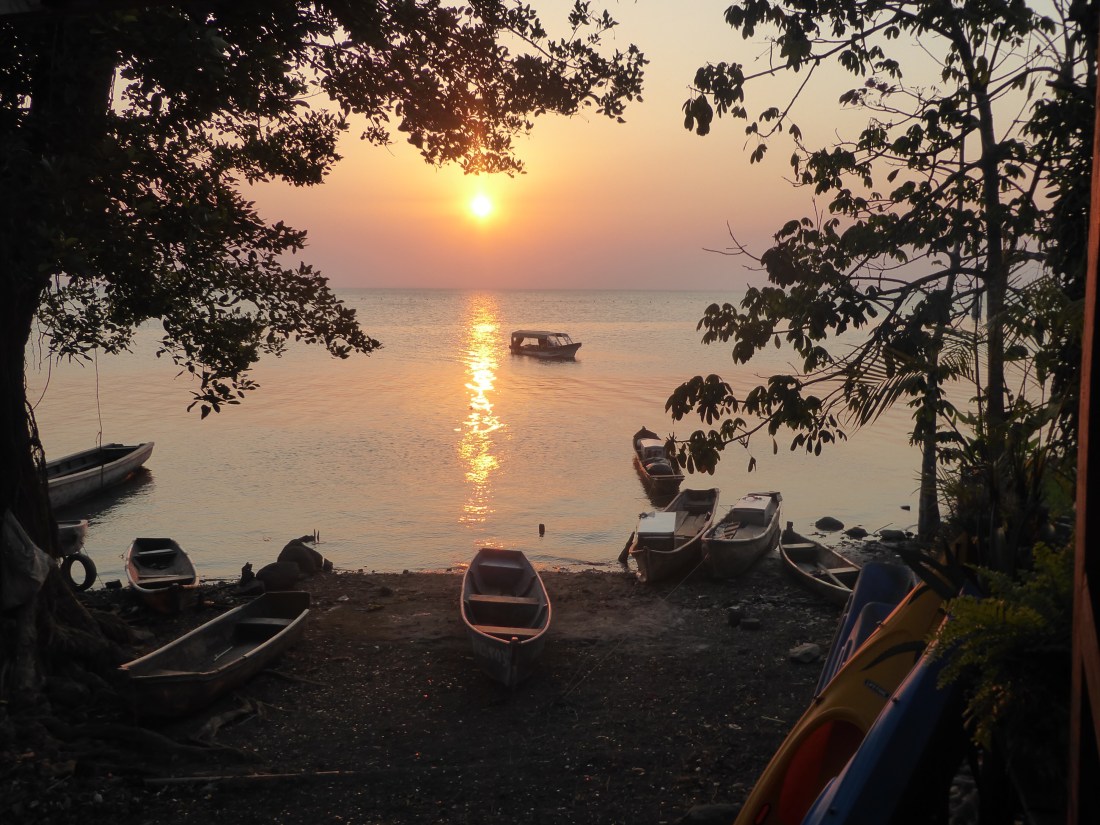
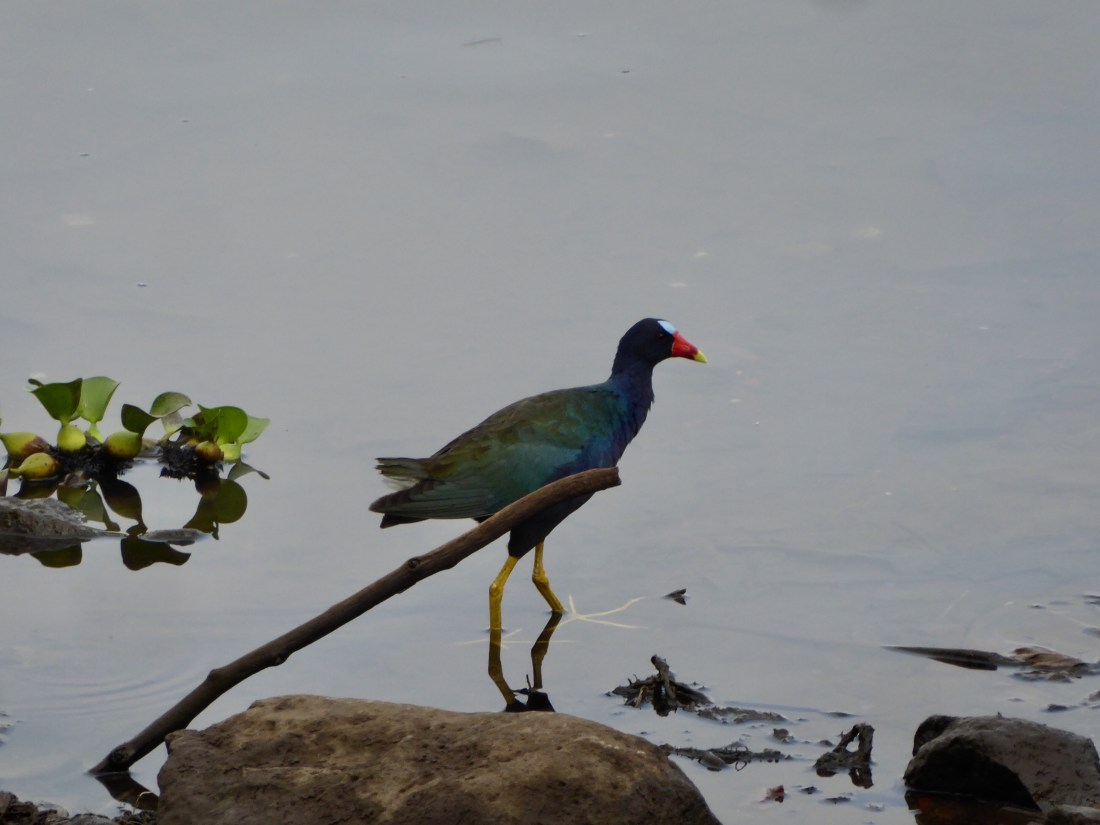




 Above: crossing Lake Arenal.
Above: crossing Lake Arenal.
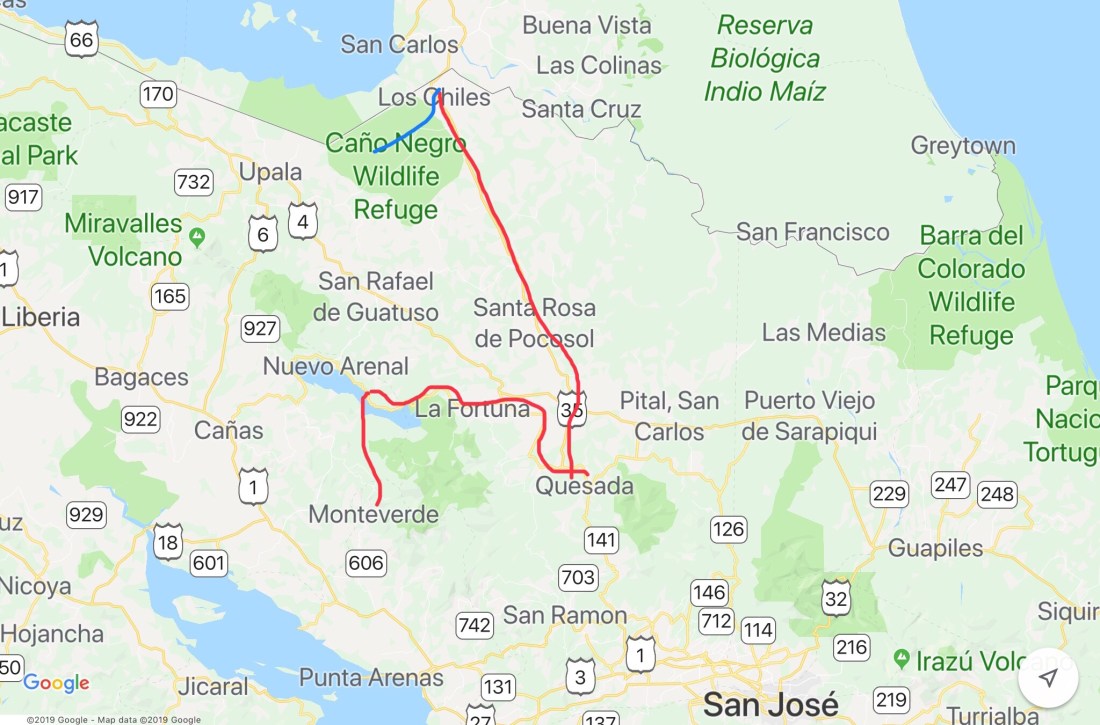 Above: map detailing our journey. Red indicates the journey from Santa Elena to Los Chiles on 8 April; blue indicates our trip from Los Chiles to Caño Negro on 9 April. The faint grey line above Los Chiles is the Nicaraguan border. (Quesada on the map is actually Cuidad Quesada).
Above: map detailing our journey. Red indicates the journey from Santa Elena to Los Chiles on 8 April; blue indicates our trip from Los Chiles to Caño Negro on 9 April. The faint grey line above Los Chiles is the Nicaraguan border. (Quesada on the map is actually Cuidad Quesada).
 Above: Caño Negro experience.
Above: Caño Negro experience.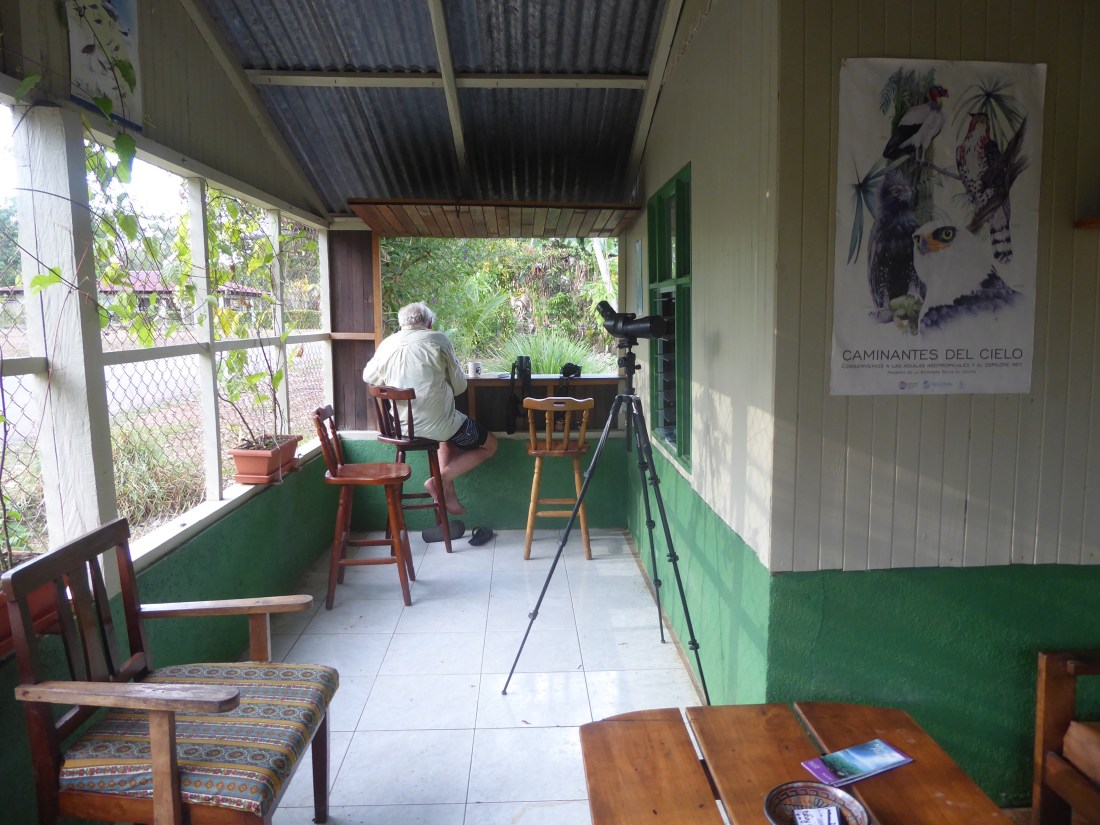
 Above: horse and rider.
Above: horse and rider.